When Toyota debuted the all-new 4Runner in April, it sparked considerable discussion among enthusiasts, especially following the recent launch of the redesigned Land Cruiser. The new Land Cruiser, while embracing its heritage, shifted to the TNGA-F platform, shared with the Tacoma, Sequoia, and Tundra, moving away from its unique platform. Consequently, the arrival of the new 4Runner, built on the same TNGA-F platform, boasting similar dimensions, and featuring the familiar 2.4-liter engine with an eight-speed transmission, led some to perceive an overlap, even redundancy, between the two models. Having had the opportunity to drive the 2025 4Runner alongside the Land Cruiser, the distinctions and unique appeals of each SUV become clearer, particularly for the North American market.
Toyota strategically positions the 4Runner and Land Cruiser to attract distinct customer segments, aiming to broaden their reach and potentially capture buyers considering vehicles like the Ford Bronco, Jeep Wrangler, or even the Porsche Cayenne. A Toyota representative emphasized at the 4Runner’s media launch that the 4Runner is specifically tailored for North American tastes and driving preferences, resulting in significantly different styling and driving dynamics compared to the Land Cruiser. The chief engineer’s primary objectives for the new 4Runner included making it “fun to drive and sporty,” contrasting with the Land Cruiser, which is designed as a global vehicle reflecting global heritage and driving dynamics.
Essentially, Toyota envisions the New Toyota 4runner as the more aggressive and dynamically styled option, while the Land Cruiser is presented as the premium offering, distinguished by superior styling, finish, and driving dynamics. This differentiation is crucial in understanding where the 2025 4Runner fits within Toyota’s SUV lineup and the broader market.
Exploring the New Toyota 4Runner: Trim Levels and Configurations
The 2025 Toyota 4Runner distinguishes itself through a comprehensive range of trim levels, offering a spectrum of choices far broader than the Land Cruiser, which is available in just two trims (1958 and Land Cruiser). The new Toyota 4Runner comes in an impressive nine different variants, with prices ranging from $42,220 to $68,350, catering to a wide array of budgets and preferences:
- SR5 (Starting at $42,220 for 4×2, $44,220 for 4×4)
- TRD Sport (Starting at $48,700 for 4×2, $50,700 for 4×4)
- TRD Sport Premium (Starting at $54,060 for 4×2, $56,060 for 4×4)
- TRD Off-Road 4×4 (Starting at $50,640)
- TRD Off-Road Premium 4×4 (Starting at $56,420)
- Limited (Starting at $56,850 for 4×2, $58,850 for 4×4)
- Platinum 4×4 (Starting at $64,310)
- TRD Pro 4×4 (Starting at $68,350)
- Trailhunter 4×4 (Starting at $68,350)
 Img 5921
Img 5921
The top-tier trims, including Platinum, TRD Pro, and Trailhunter, are exclusively equipped with the robust 2.4-liter hybrid “i-Force Max” powertrain. This powertrain delivers an impressive 326 horsepower and 465 lb-ft of torque, a familiar configuration seen in the Tacoma and Land Cruiser, emphasizing Toyota’s strategy of powertrain consistency across its TNGA-F platform vehicles.
Conversely, the Limited, TRD Off-Road, and TRD Off-Road Premium trims come standard with the 278 horsepower, 317 lb-ft 2.4-liter “i-Force” engine. This engine is also the sole option for the SR5 and TRD Sport models. However, for those desiring enhanced power and efficiency, the hybrid i-Force Max powertrain is available as an upgrade for an additional $2,800 on the Limited, TRD Off-Road, and TRD Off-Road Premium variants of the new Toyota 4Runner.
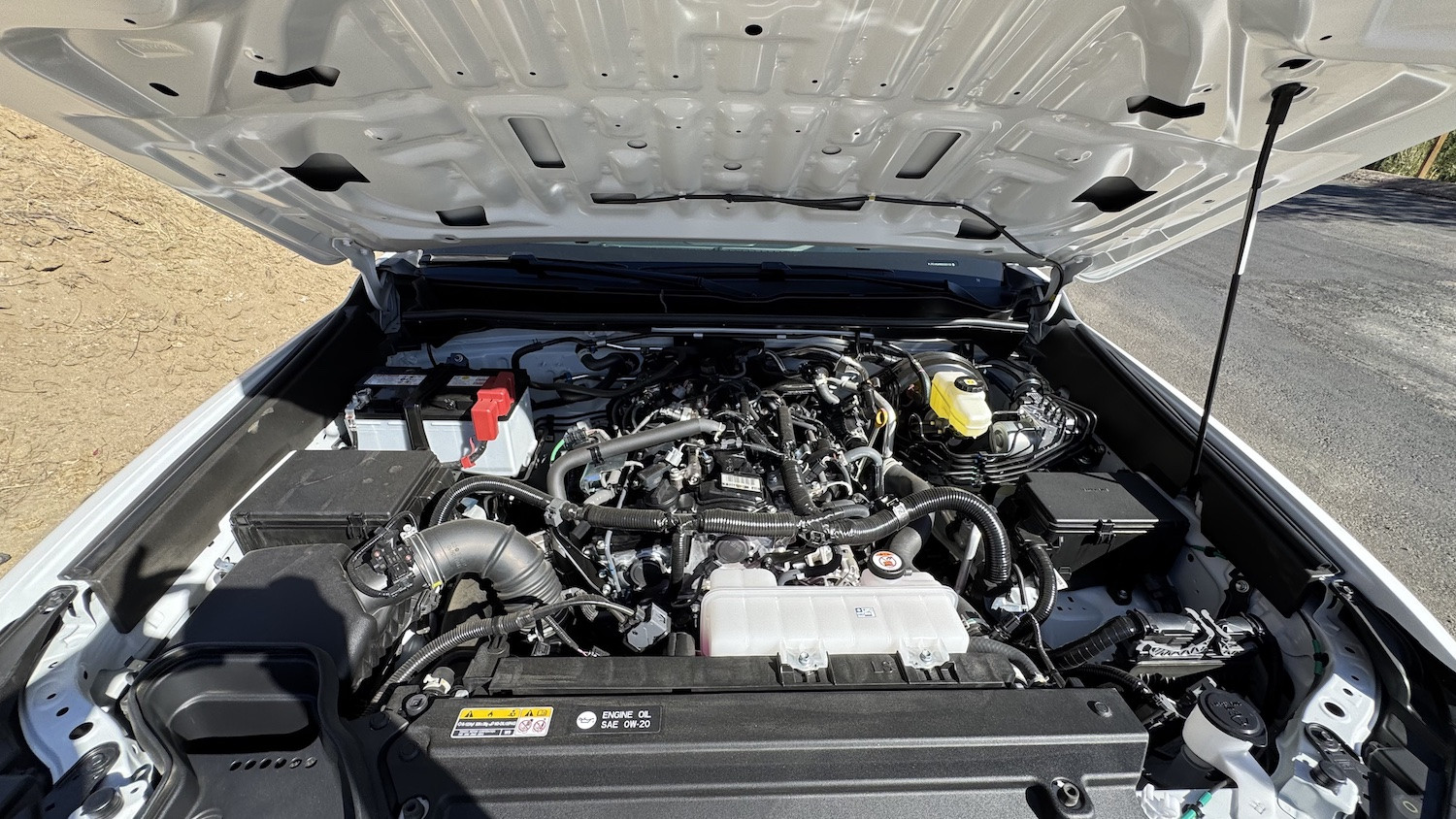 Img 5897
Img 5897
Third-row seating, a feature catering to larger families or those needing extra passenger capacity, is offered exclusively on the SR5 and non-hybrid Limited trims for an additional $600. This limitation is due to the placement of the hybrid battery beneath the rear cargo area in i-Force Max models, which significantly reduces available space. The impact of the hybrid battery on cargo space is evident in the Trailhunter model, which forgoes the third row to accommodate the hybrid system efficiently.
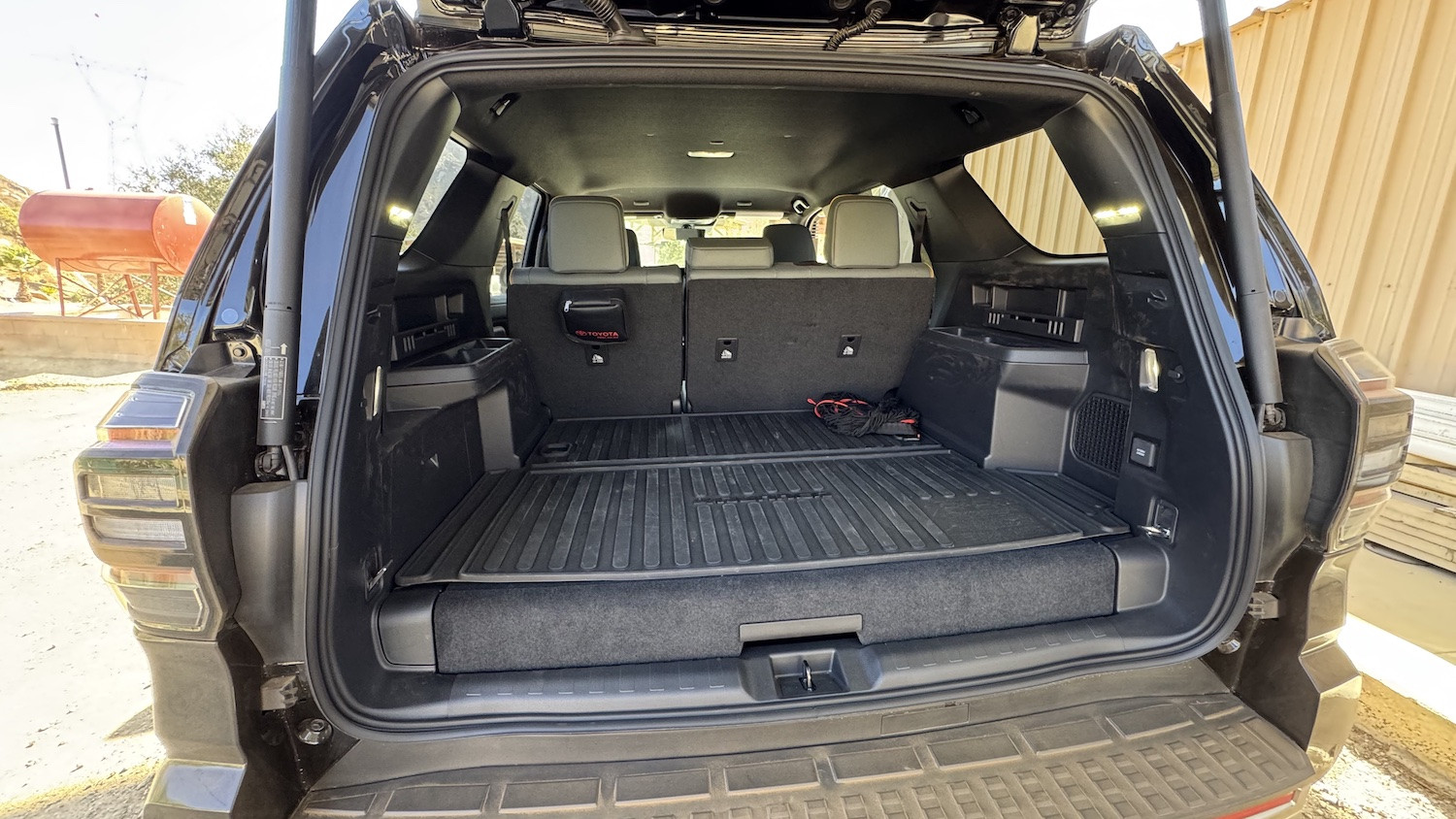 4runner 5920
4runner 5920
In contrast, the non-hybrid SR5 model, which retains the option for third-row seating, demonstrates a noticeably lower rear cargo floor. While the TRD Sport and TRD Off-Road non-hybrid versions could technically accommodate a third row, Toyota has historically limited this option to the Limited and SR5 trims based on market research, customer demand, and dealer feedback. This strategic decision reflects Toyota’s understanding of customer preferences within different trim levels of the new Toyota 4Runner.
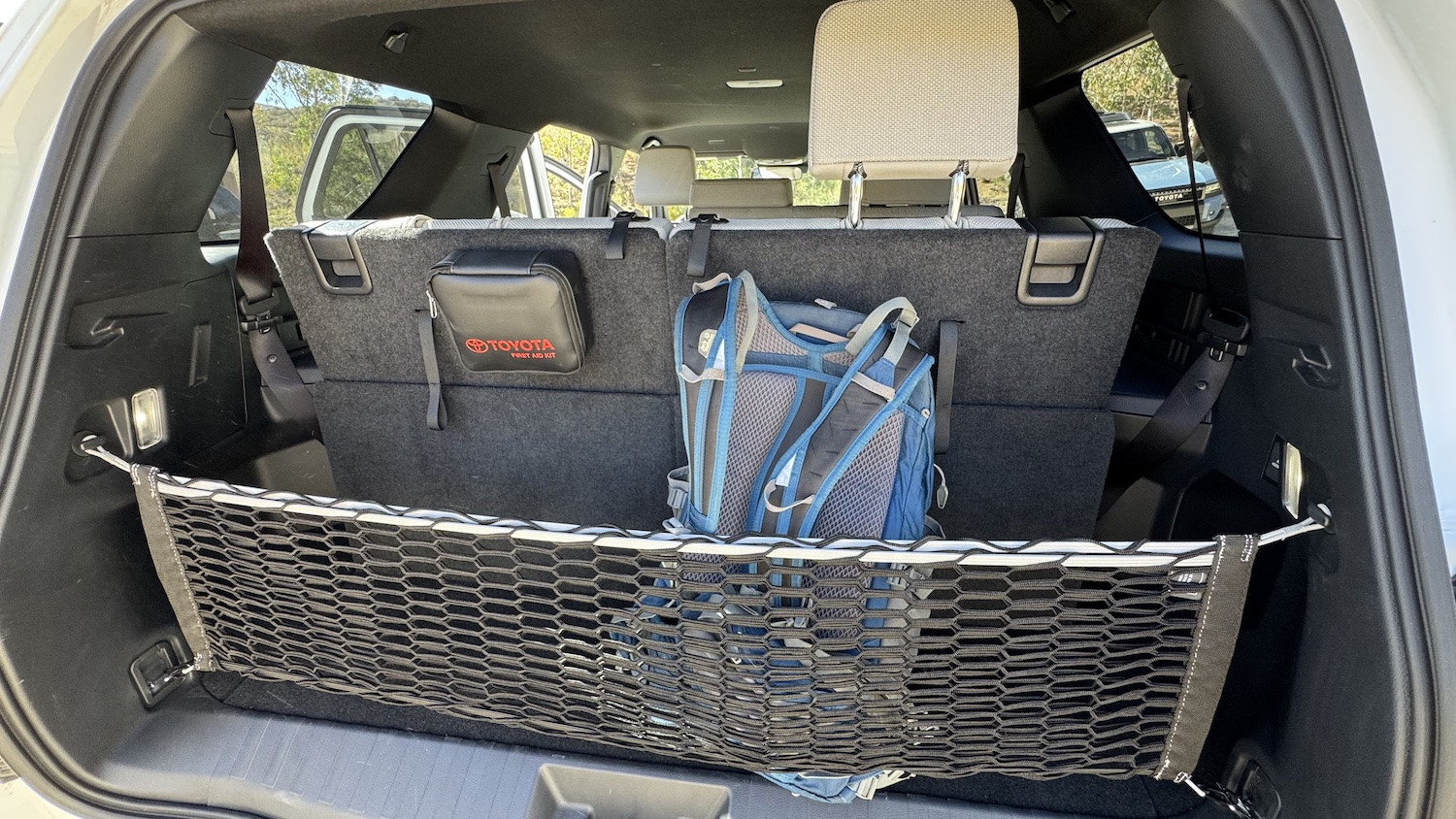 4runner 5903
4runner 5903
Under the Skin: Familiar Yet Refined Chassis of the New Toyota 4Runner
Delving into the foundational elements of the new Toyota 4Runner, the underlying architecture is indeed familiar, sharing components with other models within the Toyota family. The front suspension system, a critical aspect of ride quality and handling, echoes designs seen in the Tacoma and Land Cruiser, showcasing Toyota’s modular approach to platform engineering.
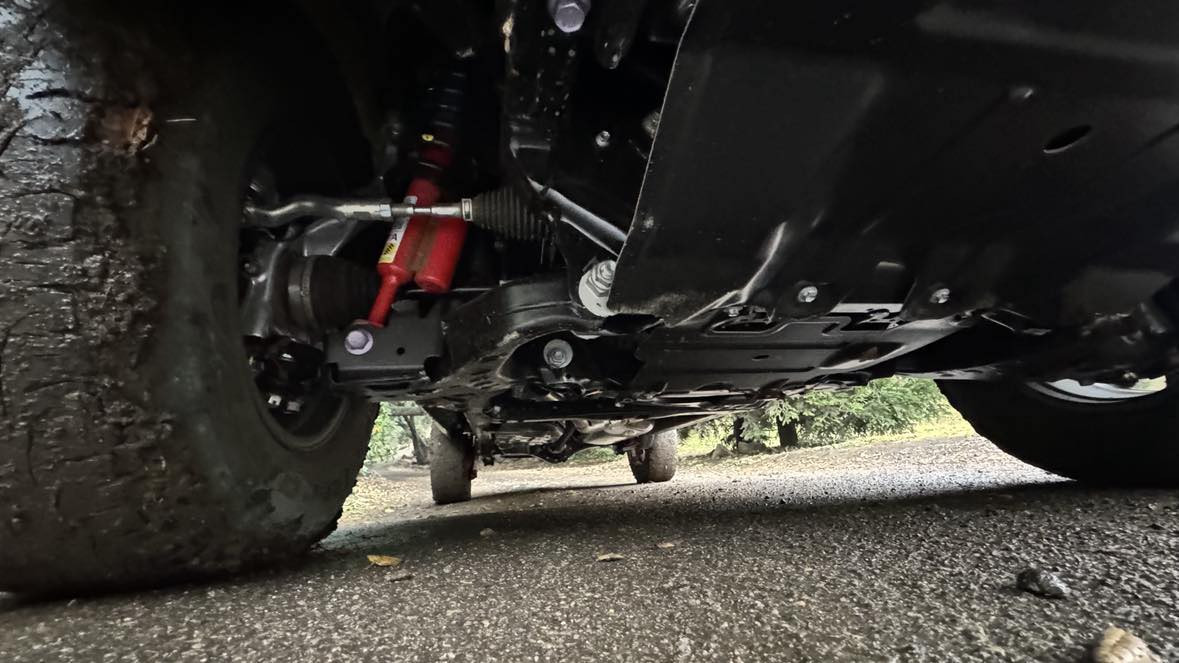 474501055 897935238892303 5046041520326498010 N
474501055 897935238892303 5046041520326498010 N
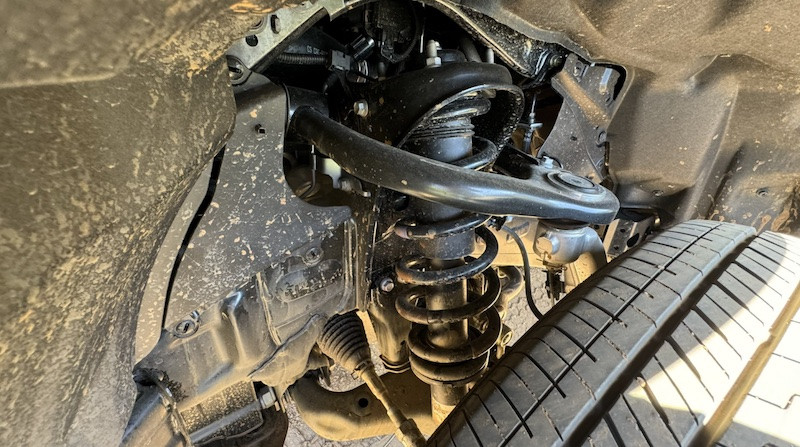 Land Cruiser 5
Land Cruiser 5
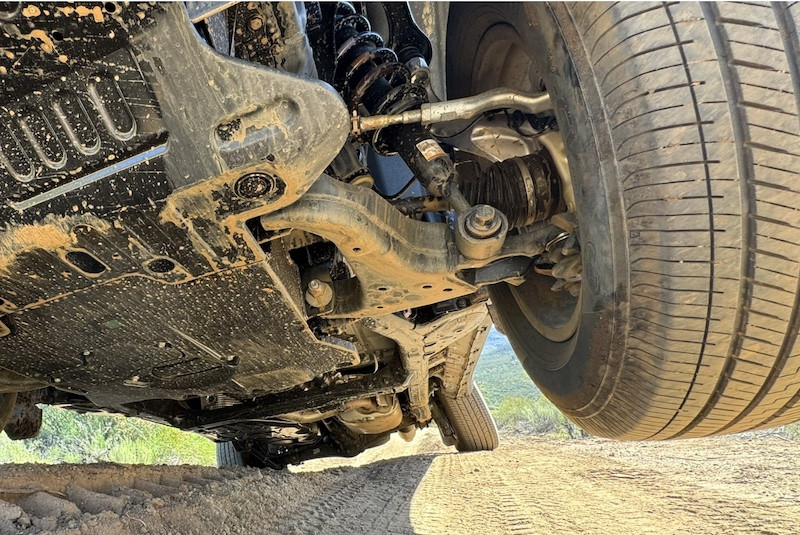 Land Cruiser 6
Land Cruiser 6
The new Toyota 4Runner‘s front suspension mirrors this design philosophy.
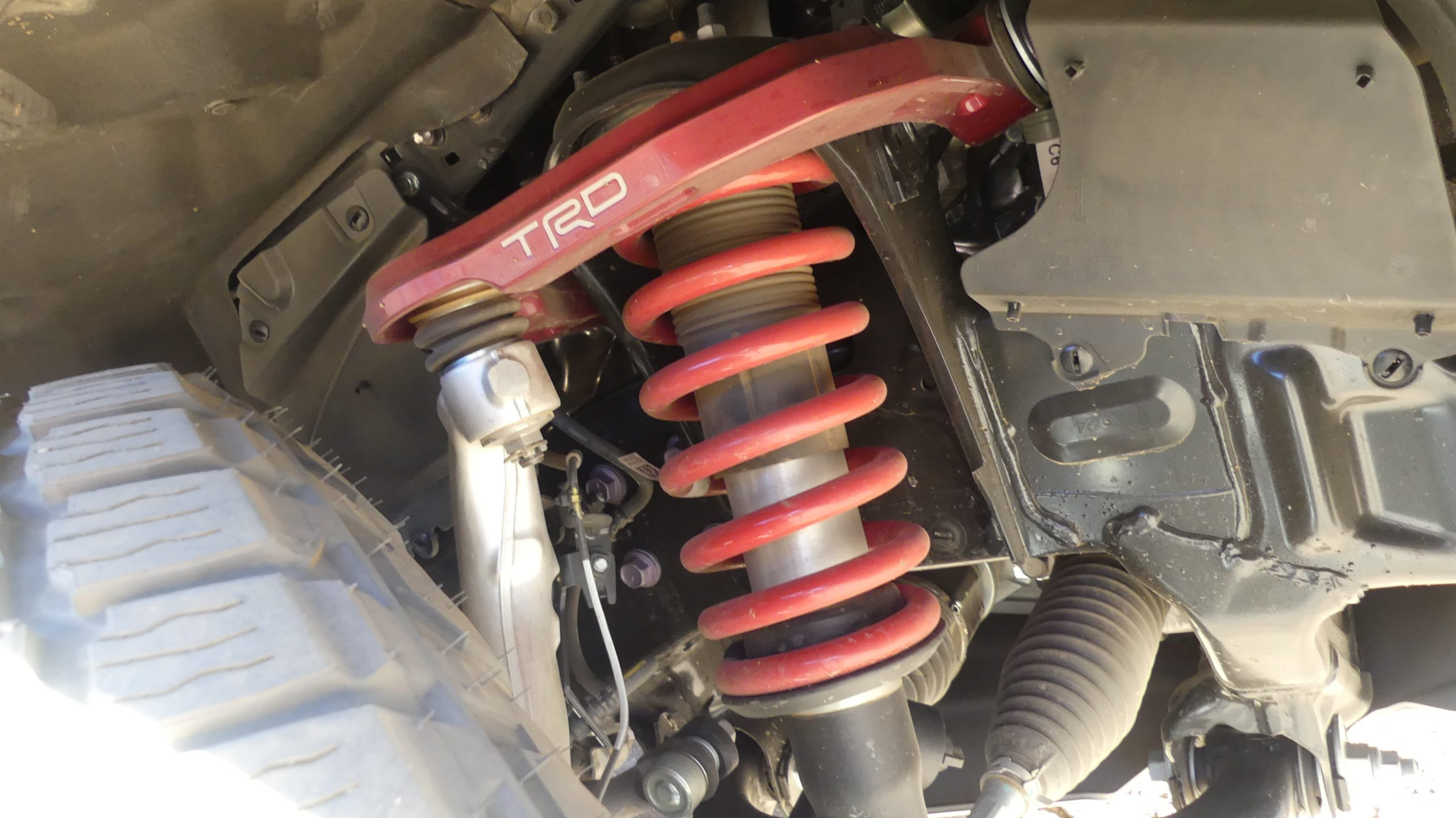 P1030247
P1030247
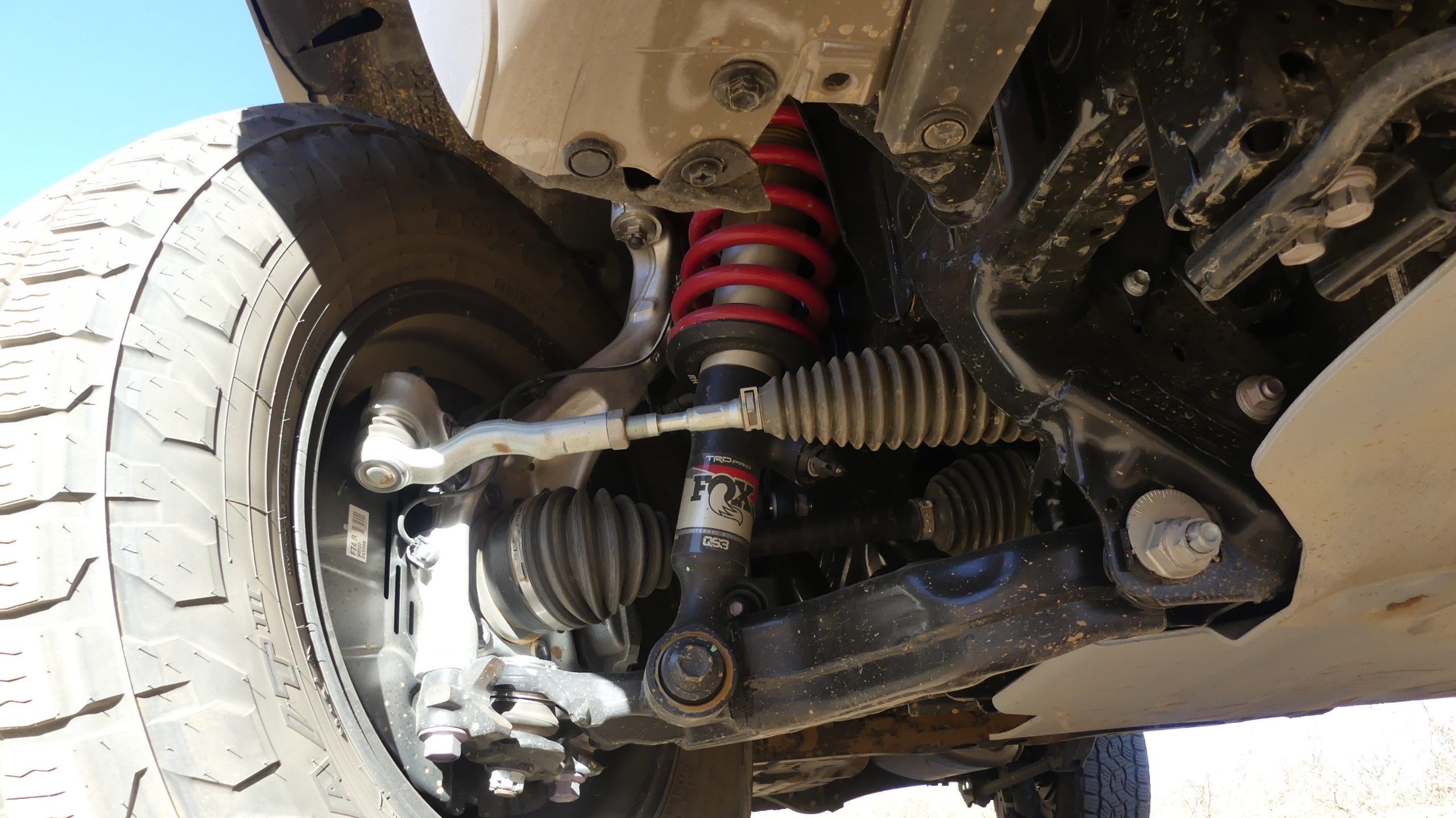 P1030252
P1030252
While variations exist in control arms and geometry based on trim levels, the fundamental suspension mounting points to the frame, which maintains consistent pitch and rail width across these vehicles, remain the same. The core suspension design is a double-wishbone independent front suspension with coilovers, a setup also echoed in the coil-sprung solid rear axle.
The rear suspension of the Tacoma and Land Cruiser further illustrates this shared engineering DNA.
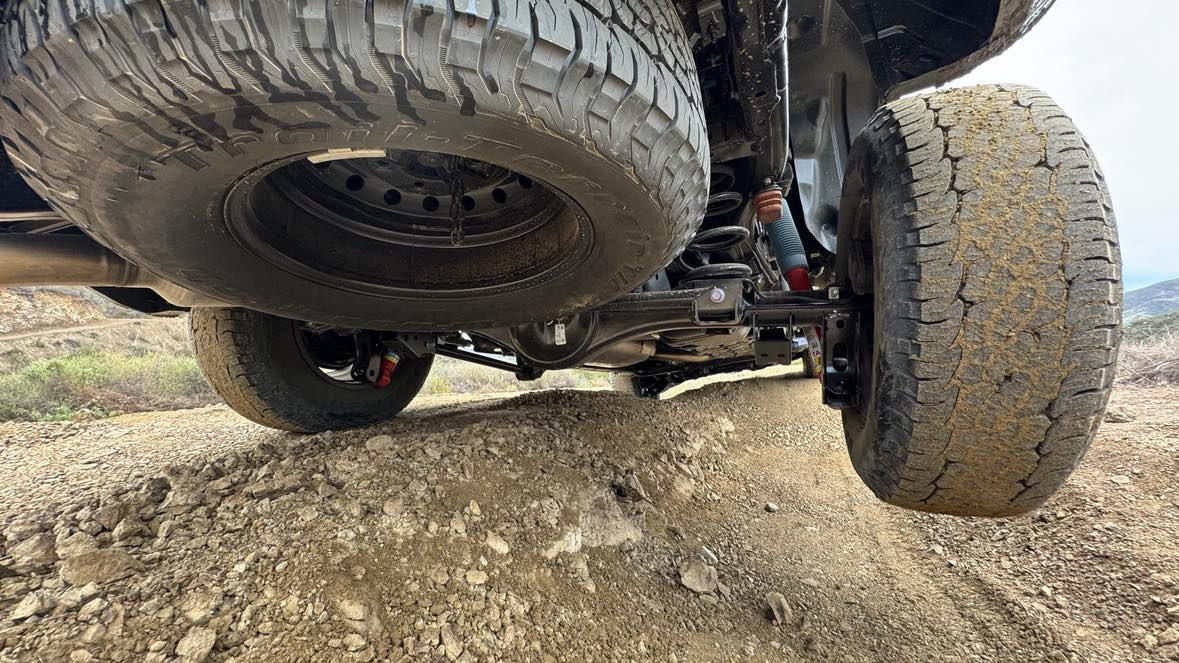 474882033 2095725720860637 2144529389440388280 N
474882033 2095725720860637 2144529389440388280 N
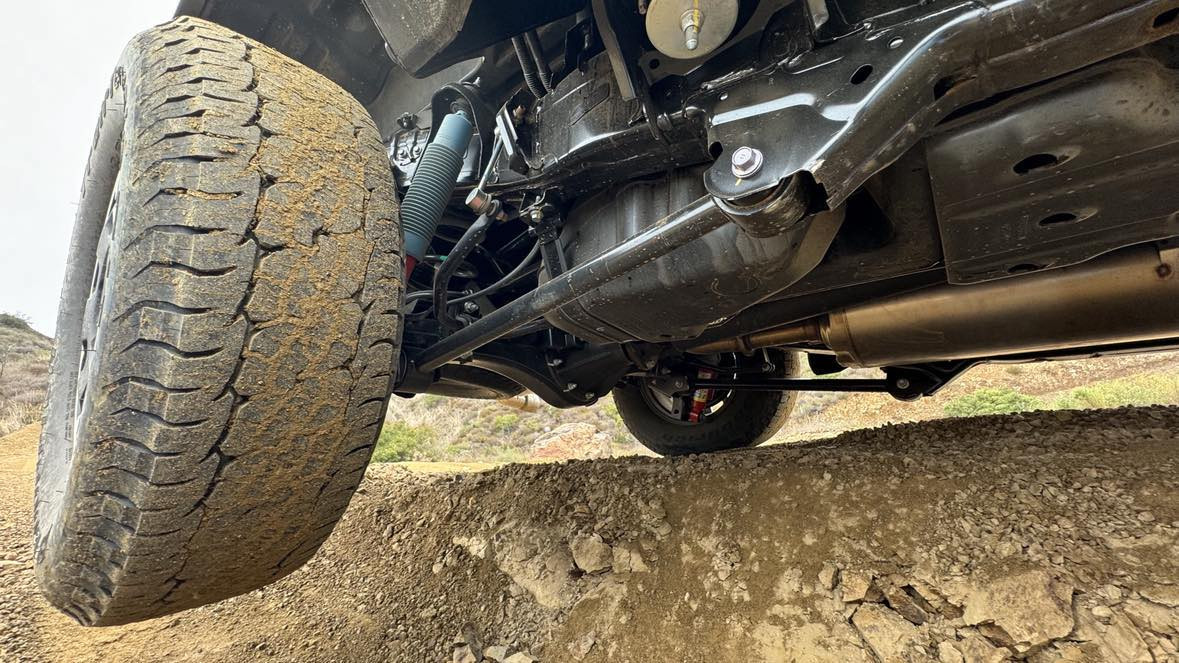 475038630 552884564429661 6029326705291672447 N
475038630 552884564429661 6029326705291672447 N
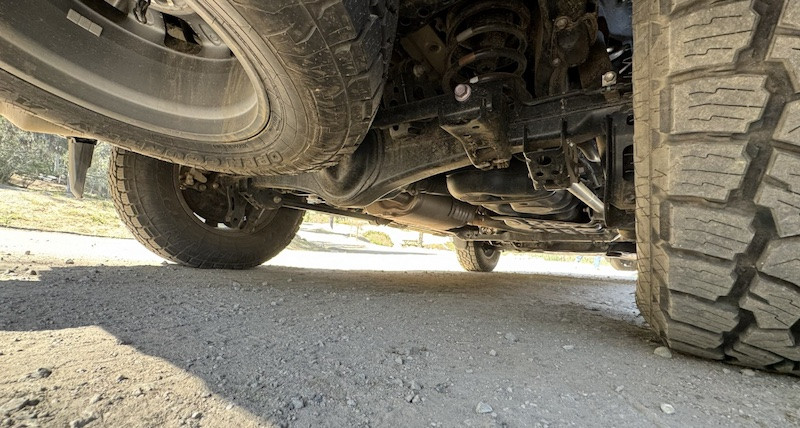 Land Cruiser 8
Land Cruiser 8
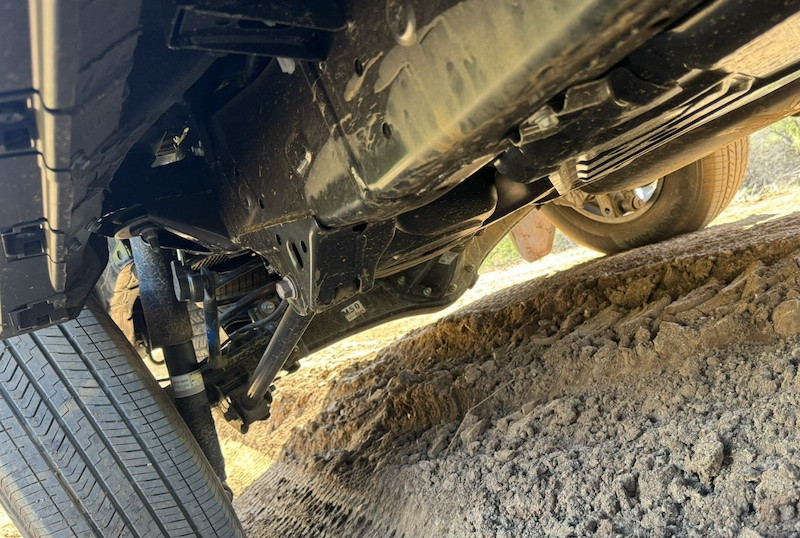 Land Cruiser 65
Land Cruiser 65
The new Toyota 4Runner continues this pattern in its rear suspension design.
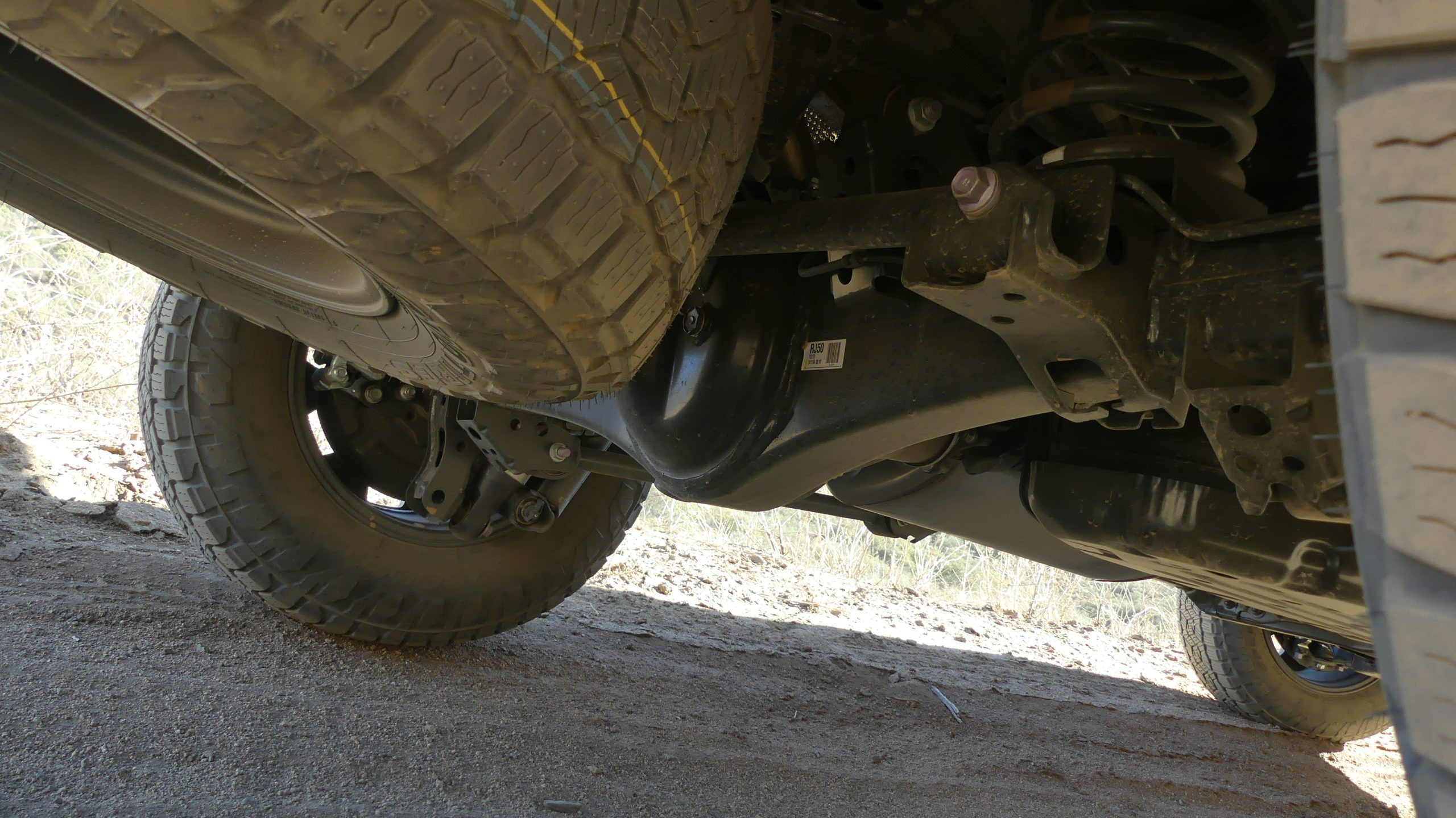 P1030251
P1030251
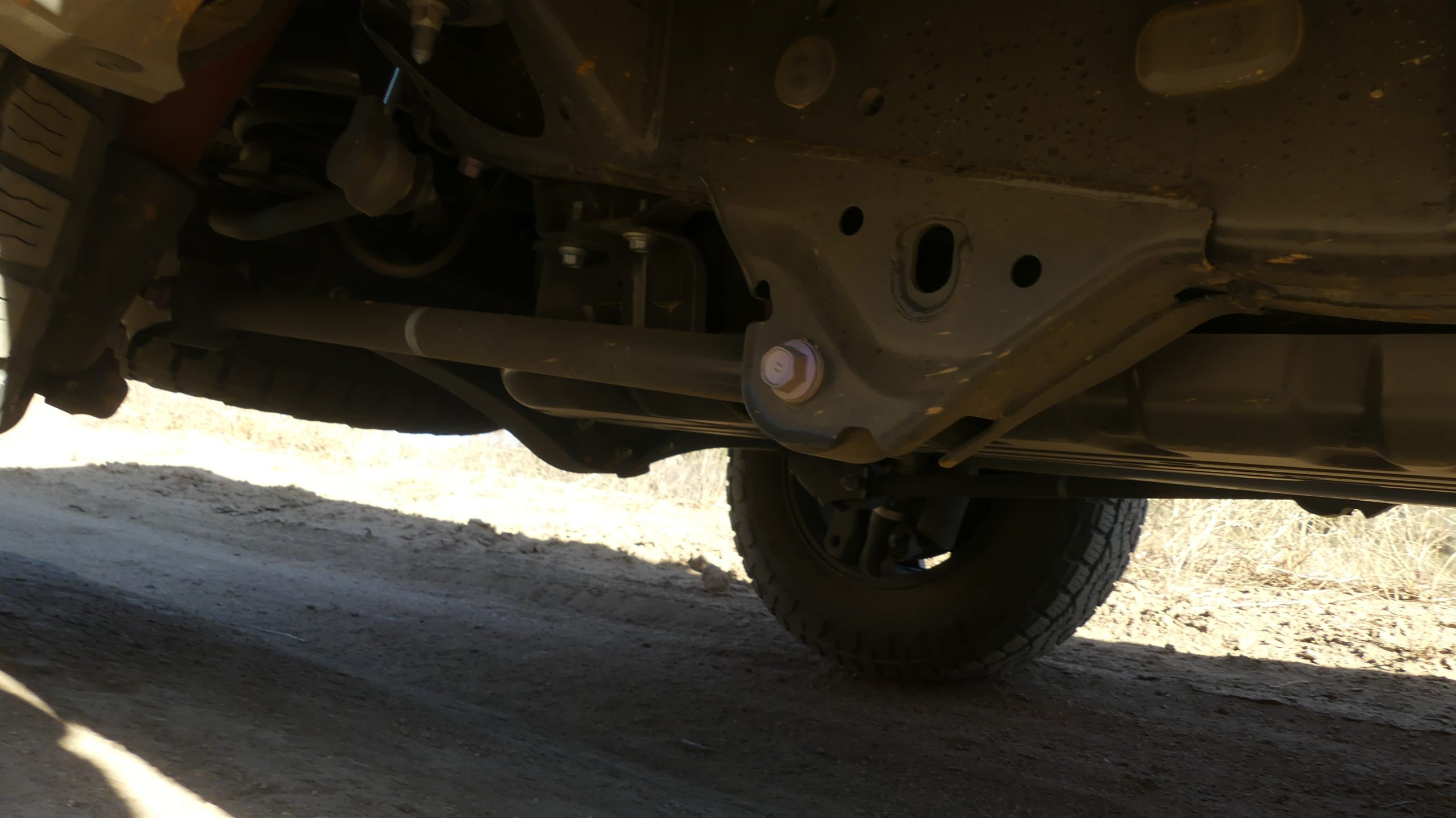 P1030250
P1030250
In terms of dimensions, the new Toyota 4Runner and Land Cruiser exhibit notable similarities. The Land Cruiser measures 194 inches in length, 84.2 inches in width, and 73.2 inches in height. The 4Runner is approximately an inch longer, maintains roughly the same width, and in Limited, TRD Sport, and Platinum trims, matches the Land Cruiser in height. Even ground clearance is comparable across the Land Cruiser and these specific 4Runner trims, emphasizing their dimensional parity.
Towing capacity is also consistent at 6,000 pounds for both models. Hybrid versions of the 4Runner and the hybrid-only Land Cruiser achieve the same combined fuel economy of 23 MPG. Non-hybrid 4Runner variants, however, experience a slight decrease in combined MPG, typically by one or two MPG, underscoring the fuel efficiency benefits of the hybrid powertrain. The shared dimensions and mechanical underpinnings contribute to a cohesive family of Toyota SUVs built on the TNGA-F platform.
Driving Dynamics: On-Road and Off-Road Impressions of the New Toyota 4Runner
 Img 5834
Img 5834
The driving experience of the new Toyota 4Runner begins in downtown San Diego, starting with the TRD Pro model on highway roads. The interior immediately brings to mind the Toyota Tacoma, sharing the same design language, including the prominent 14-inch touchscreen on the center stack and the 12.3-inch digital gauge cluster. The cabin design is characterized by a robust, chunky aesthetic, featuring blocky “TOYOTA” lettering across the dash, a substantial shift lever, a thick passenger grip on the center tunnel, and interior materials that prioritize durability over plushness.
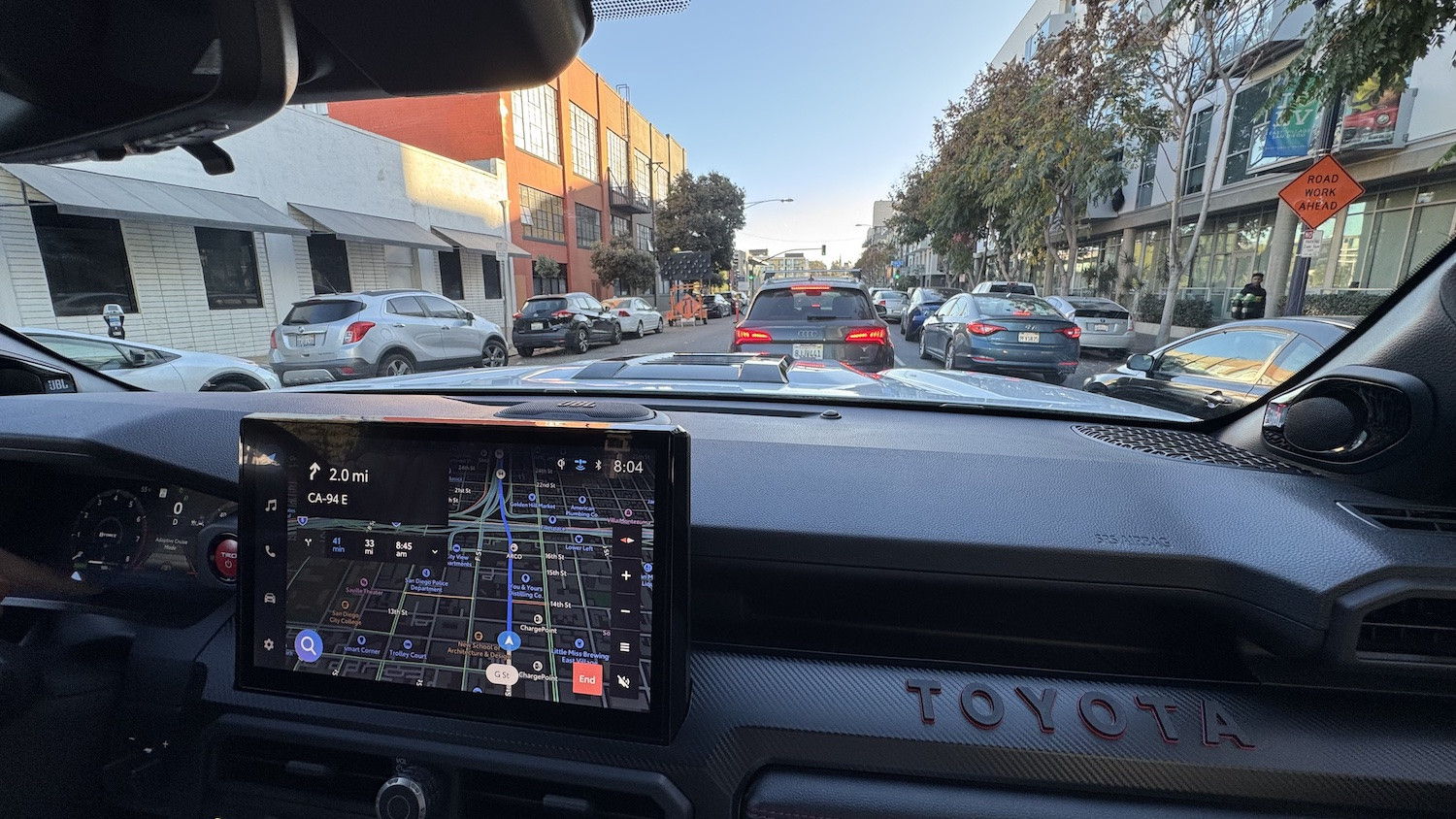 4runner 5842
4runner 5842
Pre-production models, like the TRD Pro tested, sometimes reveal minor fit and finish issues. In this instance, slight imperfections were noted in the interior trim near the glovebox, a typical observation in pre-production vehicles undergoing final adjustments.
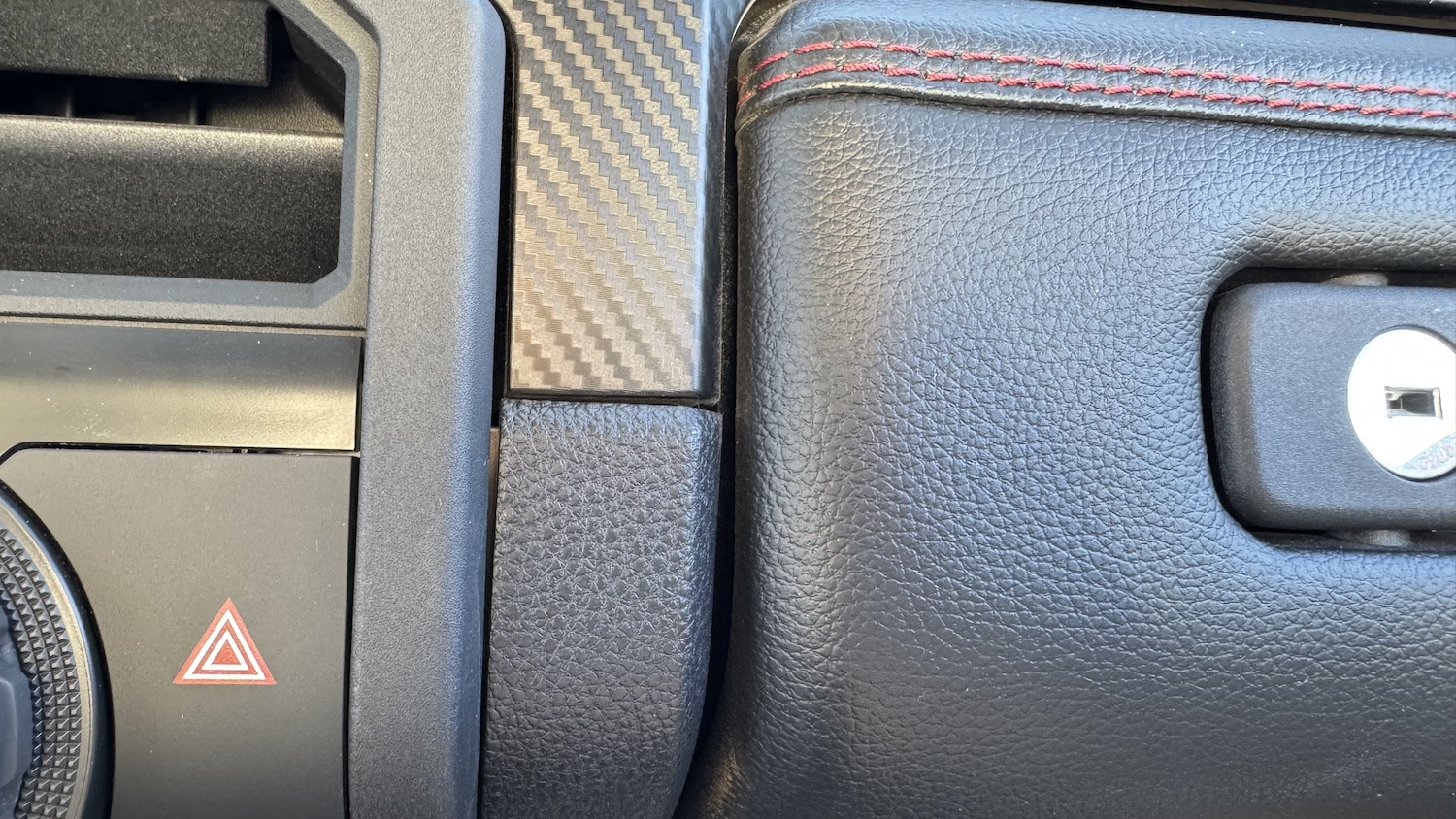 4runner 5843
4runner 5843
While agility and speed weren’t the primary highlights, the ride quality of the TRD Pro was commendable. Given its size and off-road-oriented 33-inch tires, the handling was predictably less sharp, but still within acceptable parameters for a vehicle of its class.
The TRD Pro’s non-functional hood scoop, a visually aggressive element, exhibited some vibration at highway speeds, mirroring a similar characteristic observed in the Tacoma. This large plastic component, while contributing to the TRD Pro’s styling, is functionally superfluous.
 4runner 5844
4runner 5844
The abundance of piano black plastic on the TRD Pro’s exterior trim was also noted for its susceptibility to swirl marks. This material, while visually appealing when pristine, tends to show scratches and imperfections easily, particularly in off-road environments where dust and debris are common.
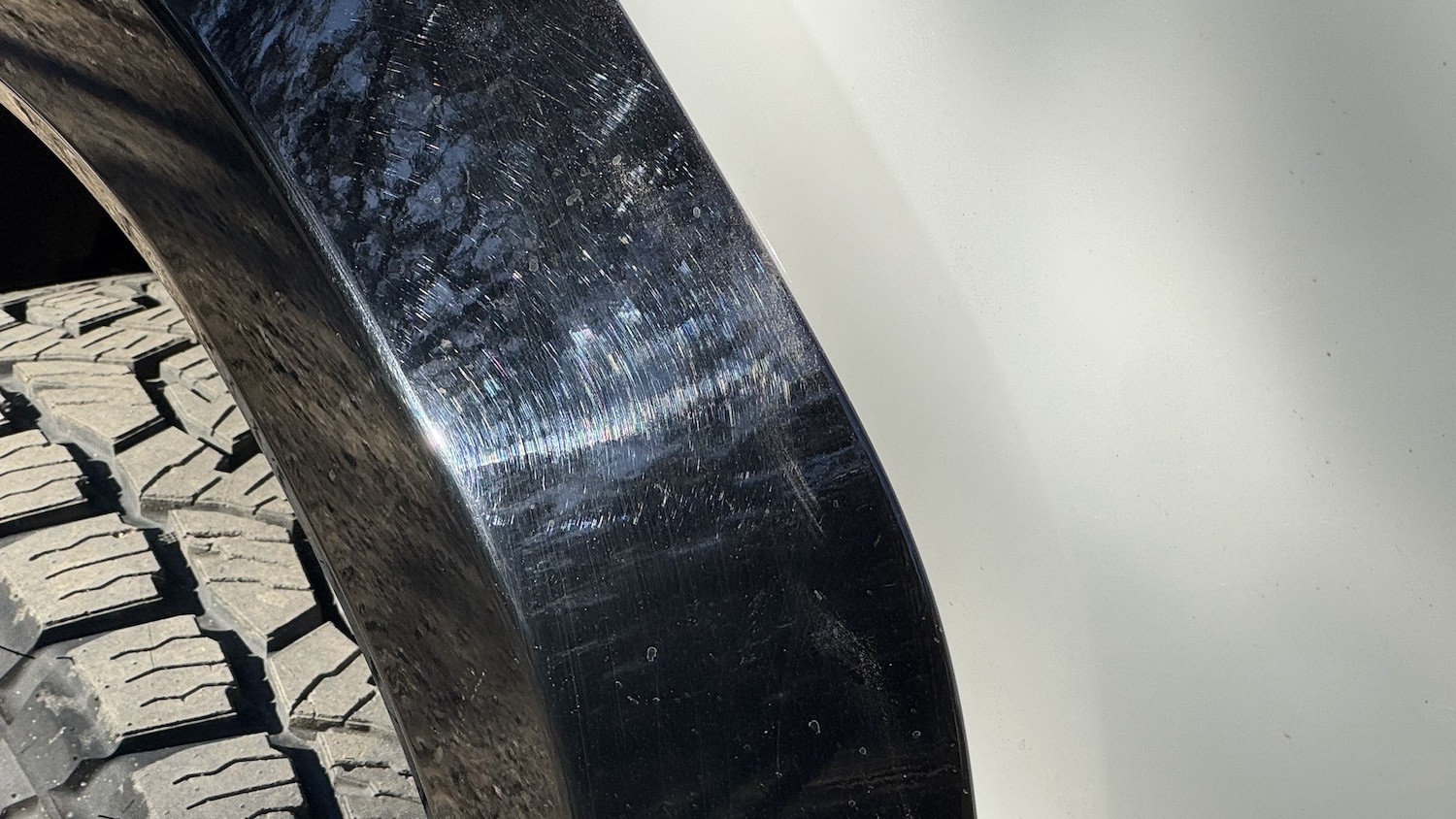 4runner 5846
4runner 5846
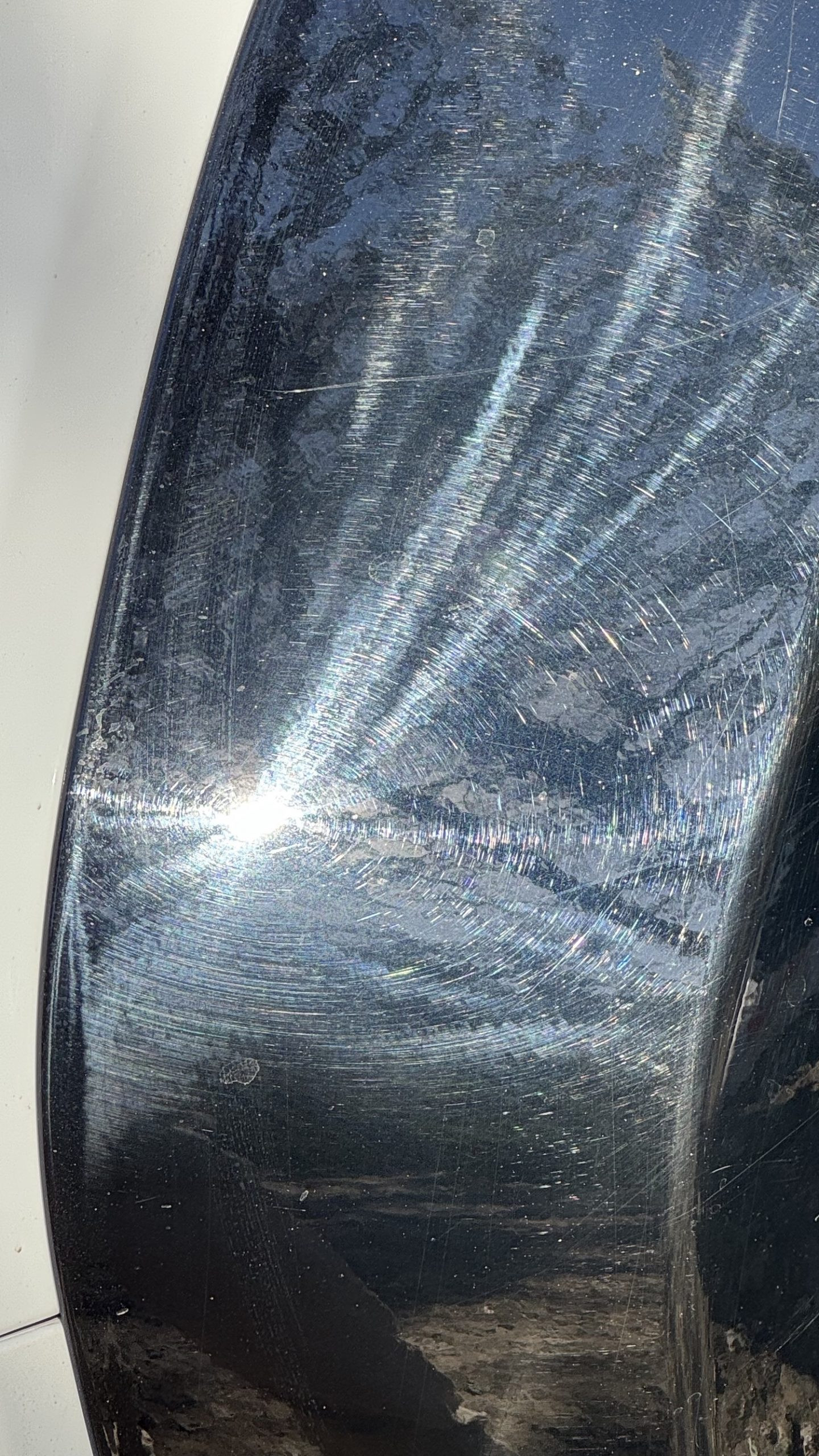 4runner 5851
4runner 5851
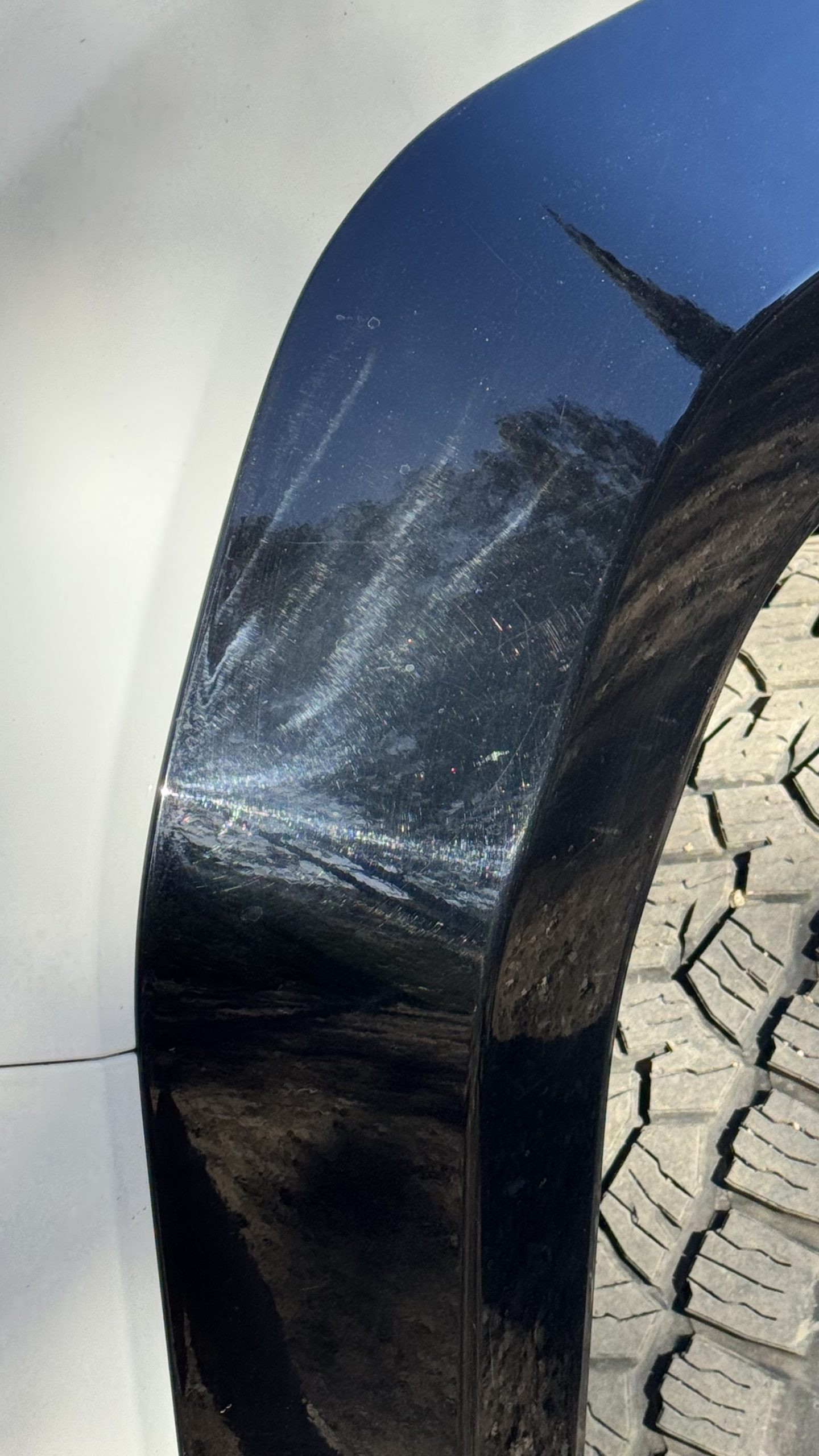 4runner 5850
4runner 5850
 4runner 5848
4runner 5848
The Surprisingly Appealing Base Model: 4Runner SR5
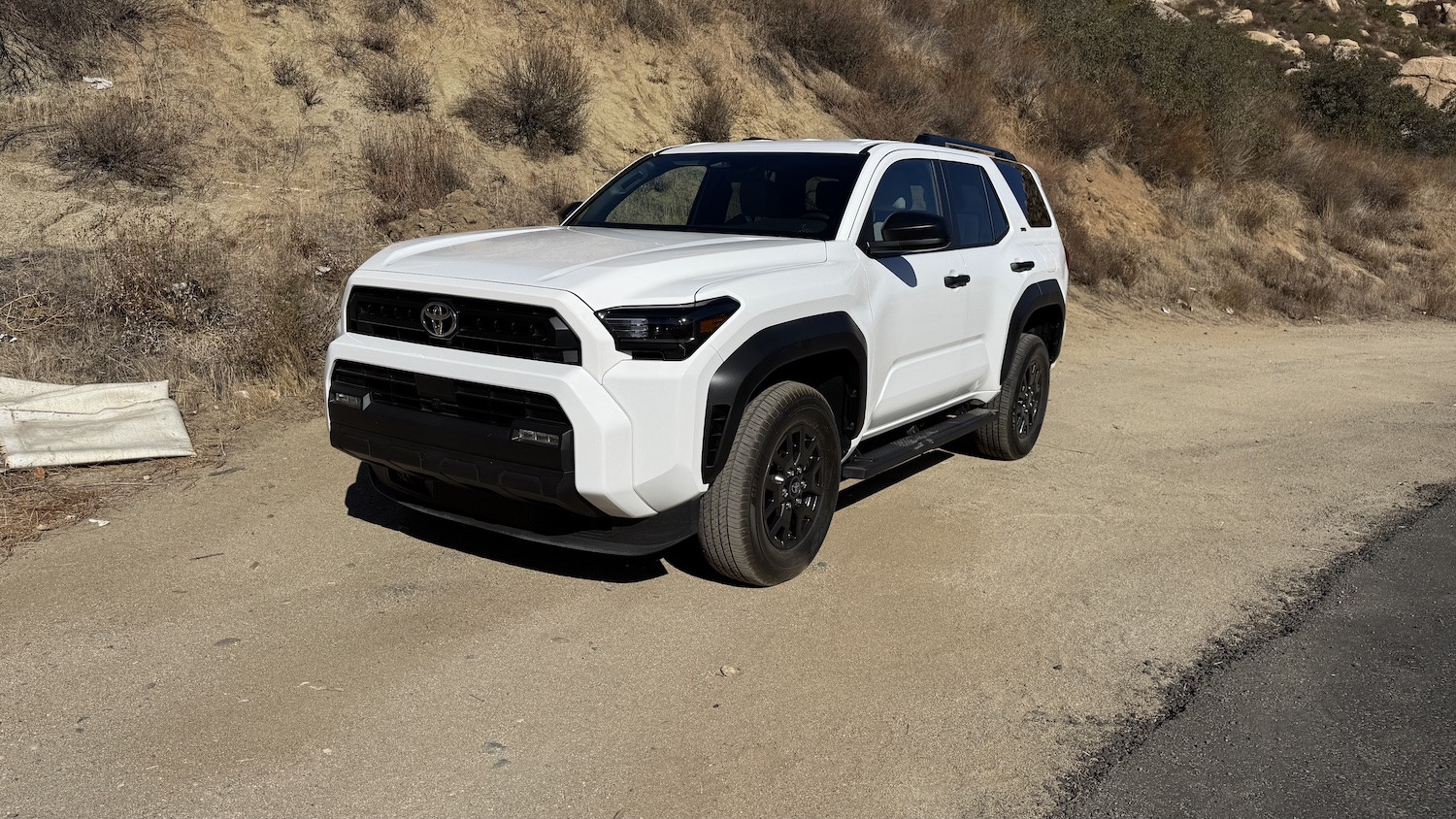 4runner 5893
4runner 5893
Transitioning to the entry-level new Toyota 4Runner, the SR5 in two-wheel drive configuration, priced around $43,000, presents a surprisingly positive driving experience. This base model emerged as a favorite on-road among the various 4Runner trims tested, largely due to its significantly lighter weight. The rear-drive SR5 weighs approximately 1,000 pounds less than the TRD Pro, a substantial difference that noticeably enhances its driving dynamics.
At 4,455 pounds, the SR5’s 278 horsepower, 317 lb-ft 2.4-liter non-hybrid turbocharged engine delivers performance comparable to, and perhaps even slightly quicker than, the more powerful 326 horsepower, 465 lb-ft TRD Pro. The SR5 feels more agile, smaller, and nimbler, contributing to a more enjoyable and pleasant driving experience overall.
The 2.4-liter turbocharged inline-four engine, while functional and adequately powerful, is described as somewhat buzzy and lacking in distinctive character. However, it provides sufficient power, and the eight-speed automatic transmission executes shifts smoothly and efficiently. This powertrain configuration, while not particularly memorable, is competent and in line with the performance expectations set by previous generations of the 4Runner.
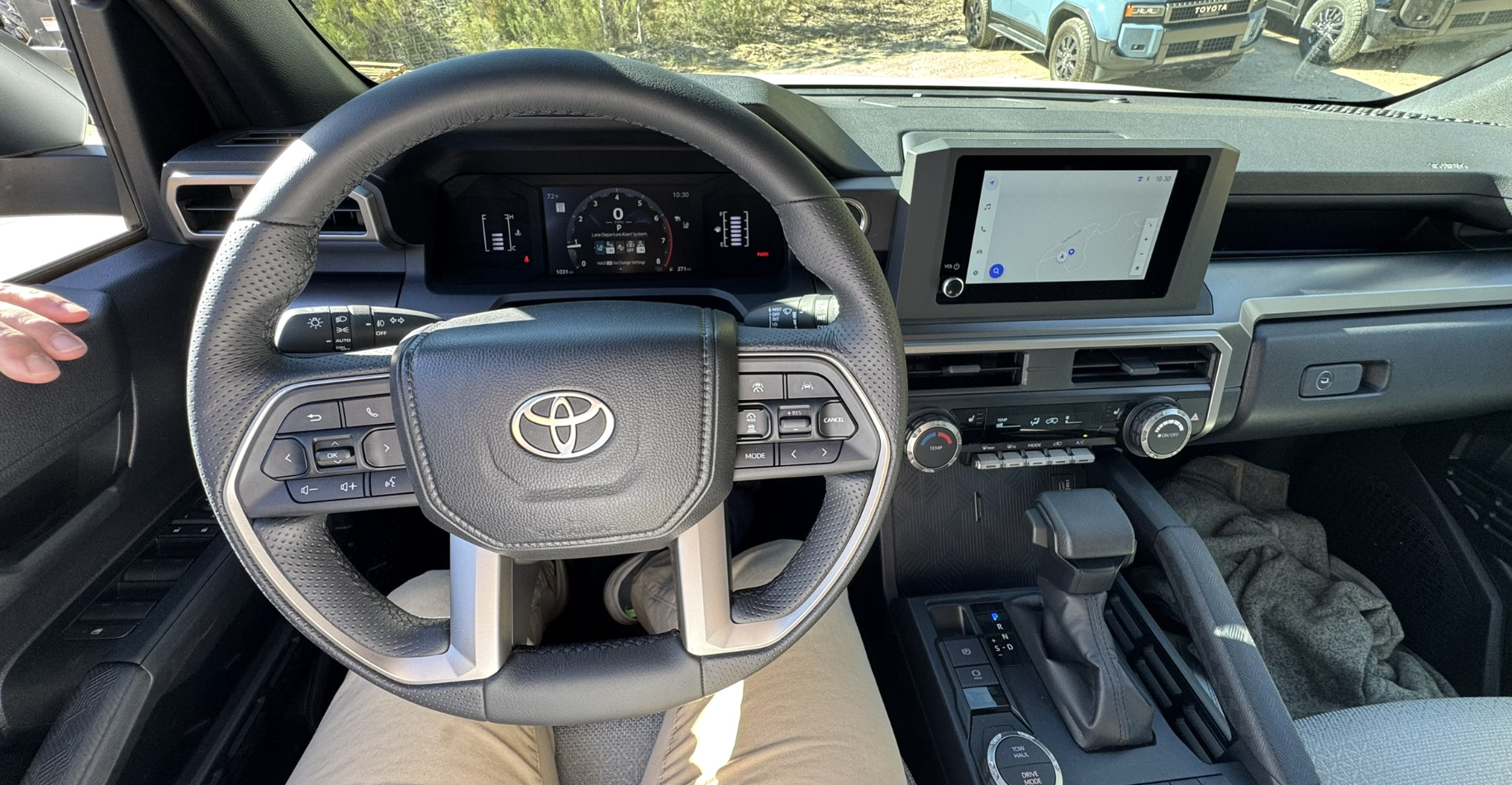 Screen Shot 2025 01 27 At 8.27.54 Pm
Screen Shot 2025 01 27 At 8.27.54 Pm
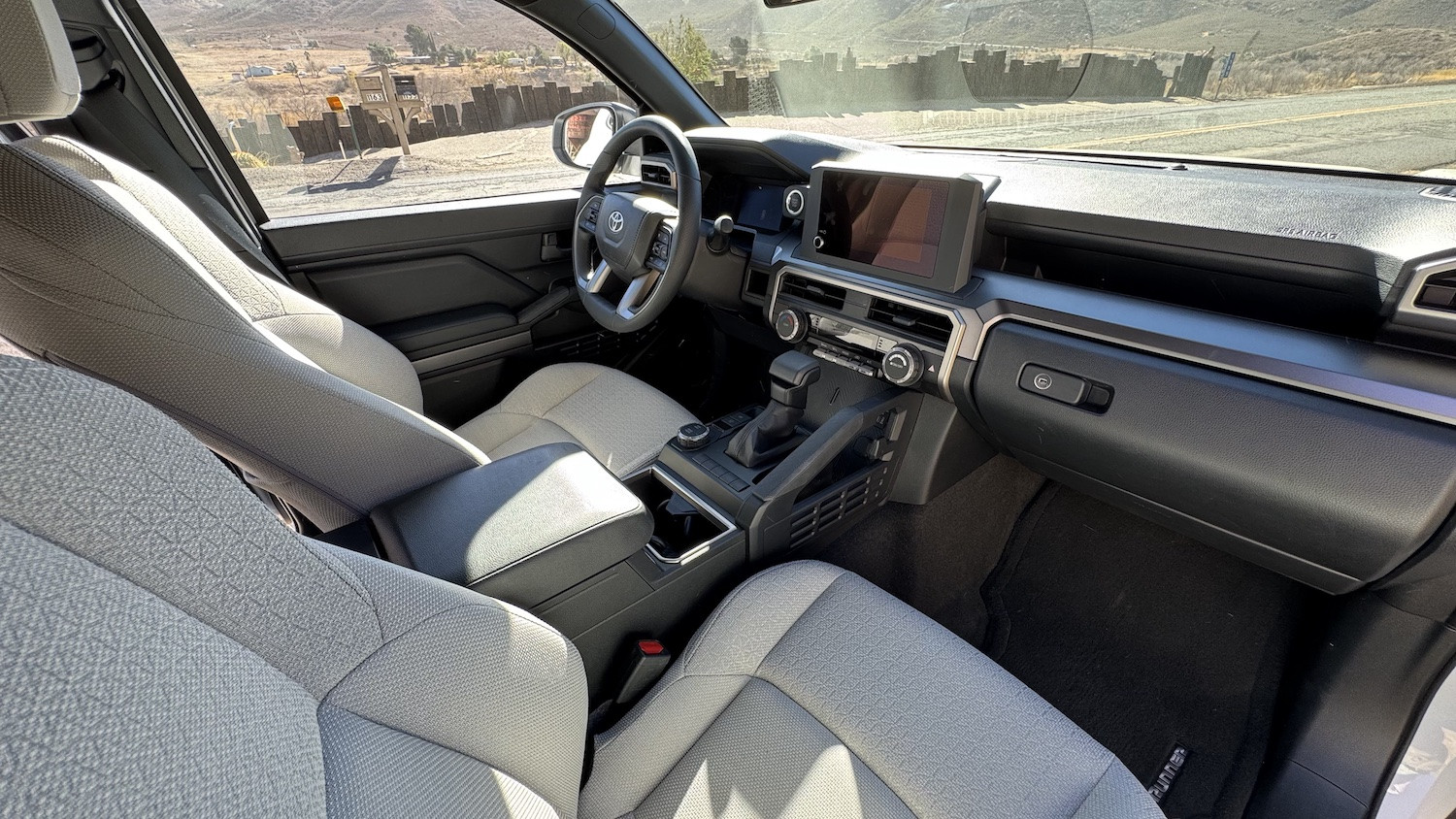 4runner 5888
4runner 5888
The interior of the SR5 is equipped with an 8-inch touchscreen, which is sufficiently sized and, arguably, integrates more seamlessly into the dashboard design compared to the larger 14-inch screen found in higher trims. The light cloth seats are both aesthetically pleasing and comfortable, enhancing the overall value proposition of the base model new Toyota 4Runner.
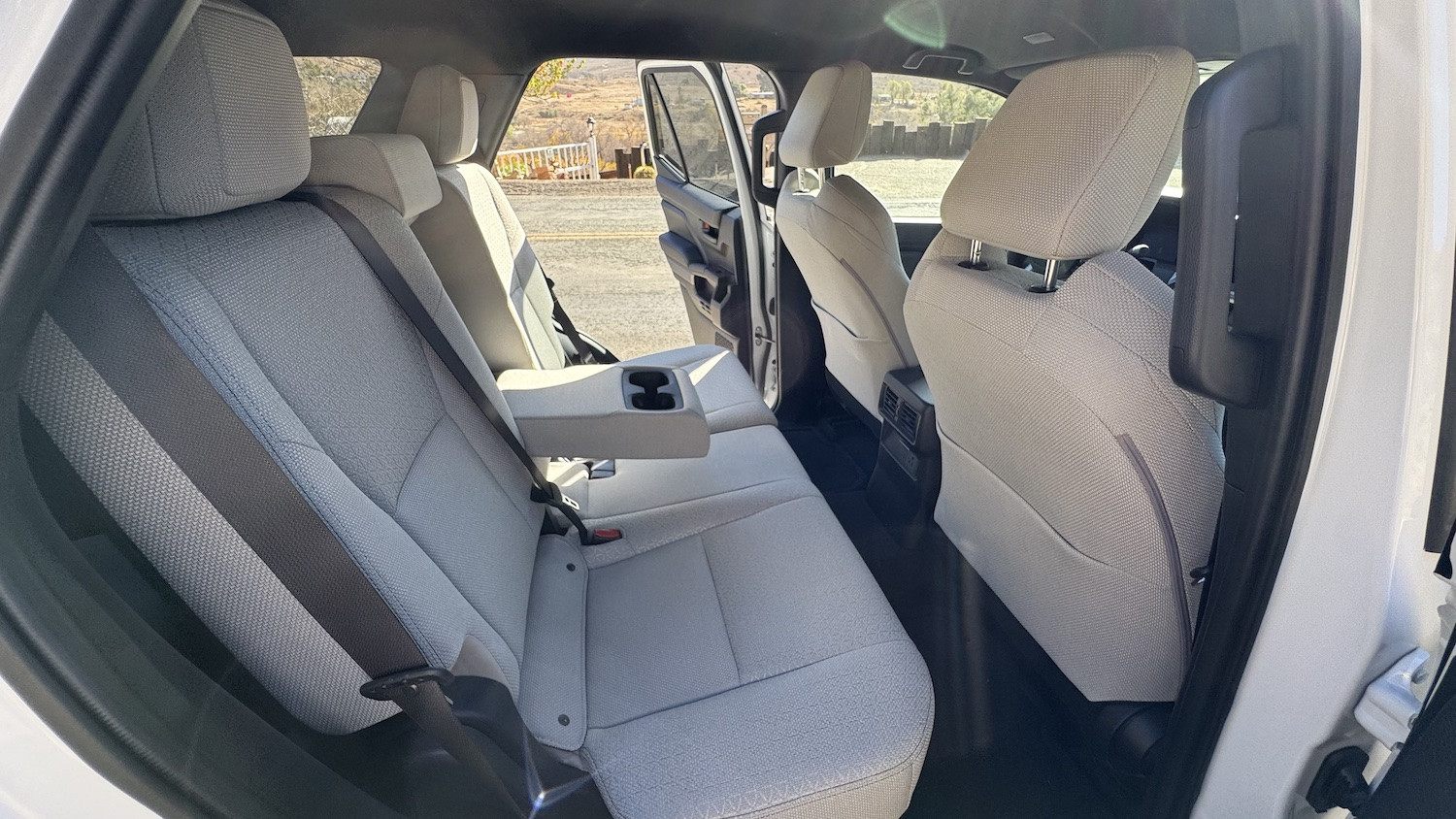 4runner 5887
4runner 5887
Accessing the Third Row in the New Toyota 4Runner
The optional third-row seating in the new Toyota 4Runner offers a unique take on extended passenger capacity, reminiscent of the jump seats in previous generations. Due to the solid rear axle and the resulting high rear floor, the third-row seats are positioned low and fold down and backward when not in use.
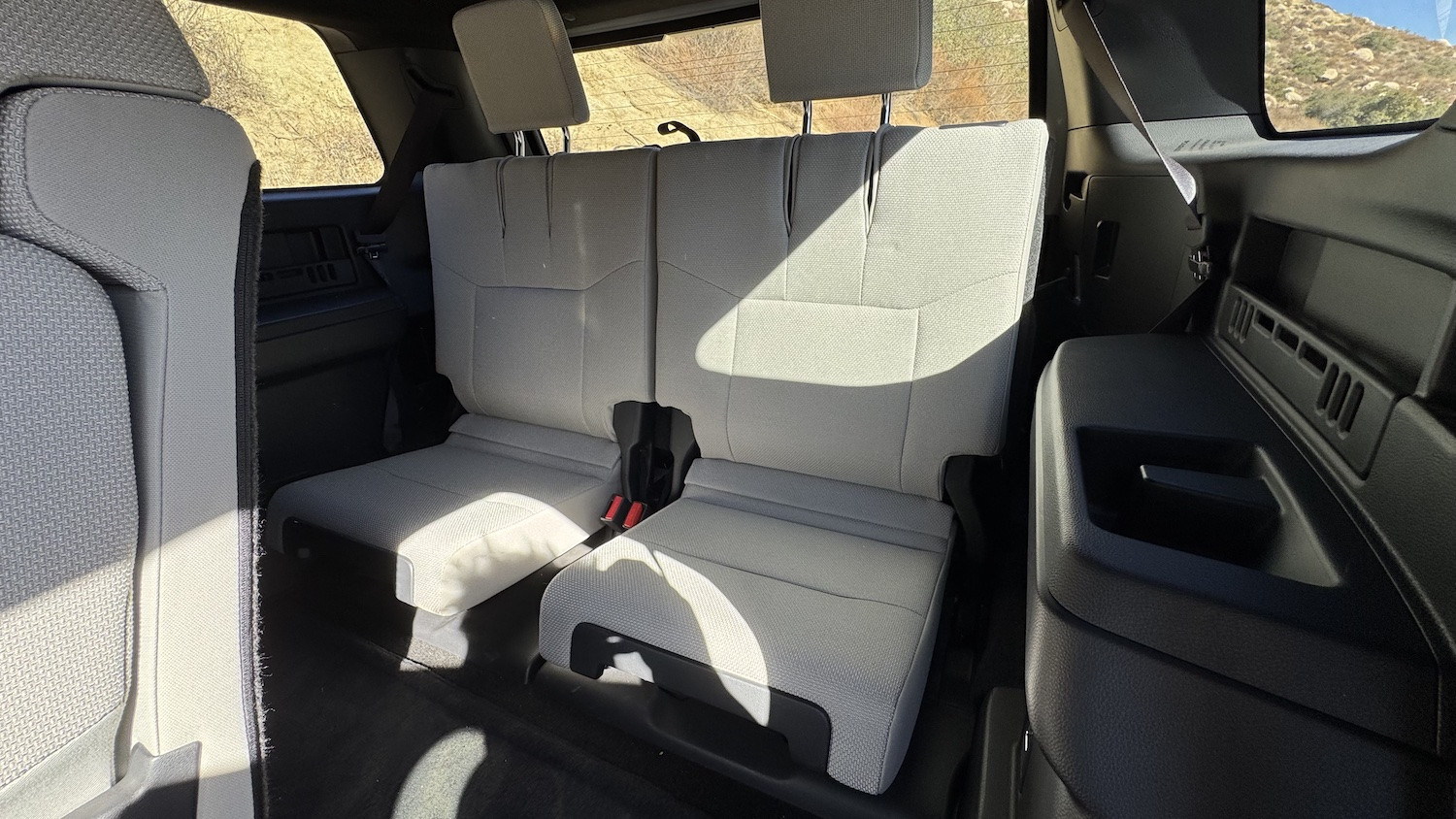 4runner 5865
4runner 5865
Access to the third row involves maneuvering past the rear wheel arch, which can be somewhat restrictive. However, folding the second-row seats forward using a simple lever mechanism eases entry, making it reasonably manageable.
 4runner 5875
4runner 5875
When folded flat, the third-row seats create a relatively even cargo floor, though their limited height when deployed is apparent.
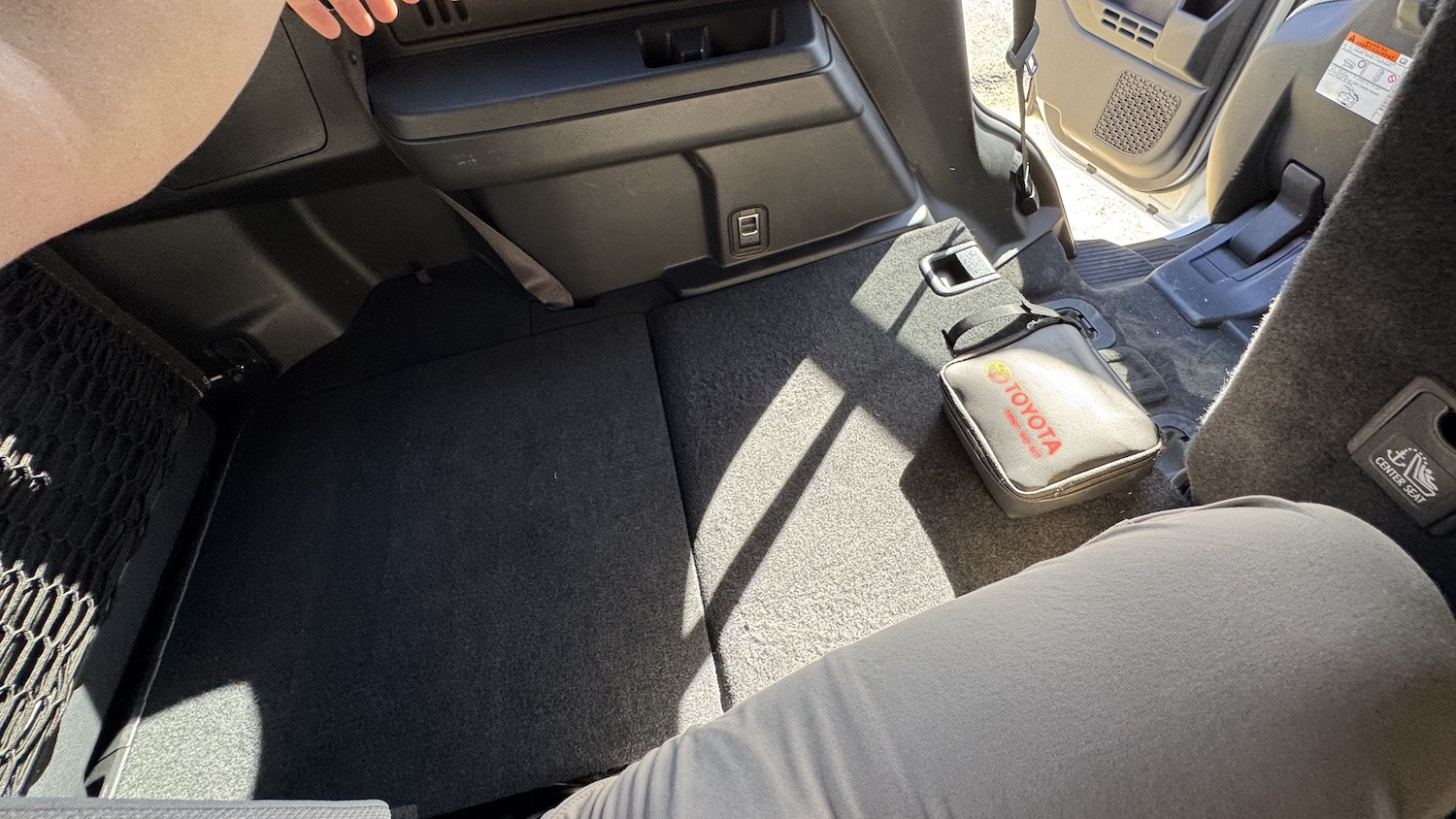 4runner 5883
4runner 5883
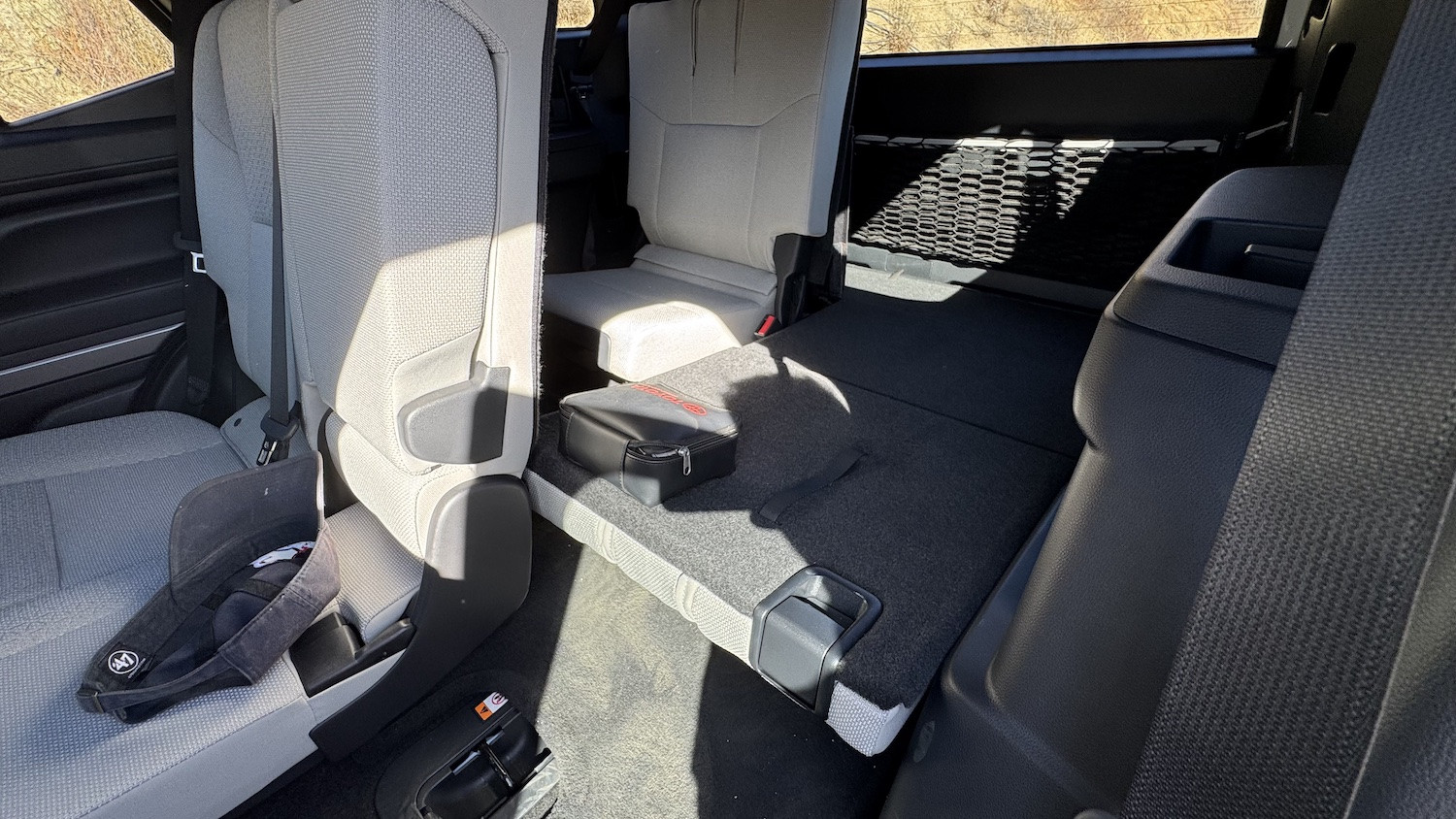 4runner 5867
4runner 5867
Deploying the third-row seats involves using either a handle or a strap to release the seatback and lift it into position.
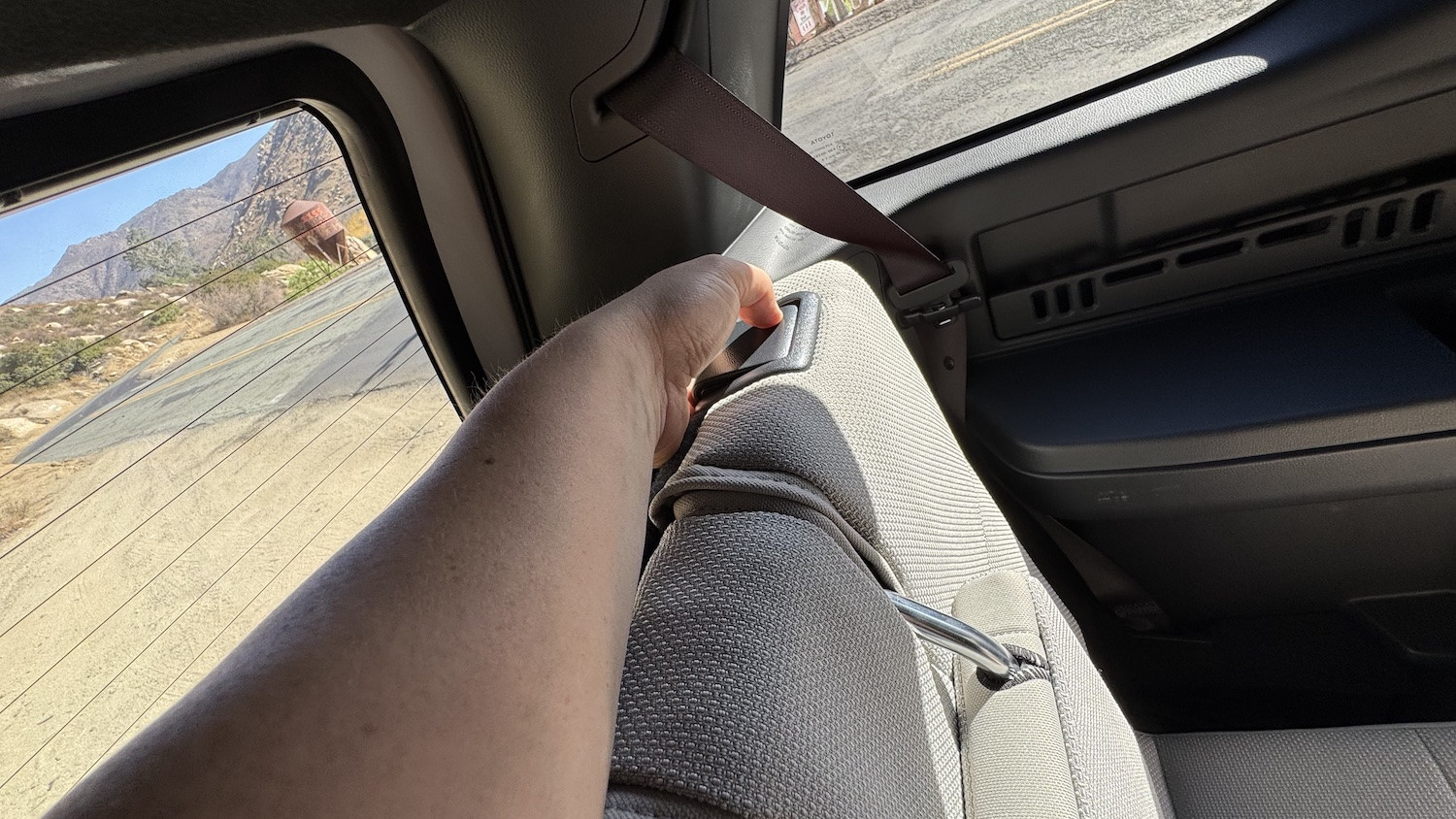 4runner 5881
4runner 5881
The seat cushion is then positioned into place, requiring reaching through a rubber-like barrier to pull the seat up and into its usable configuration.
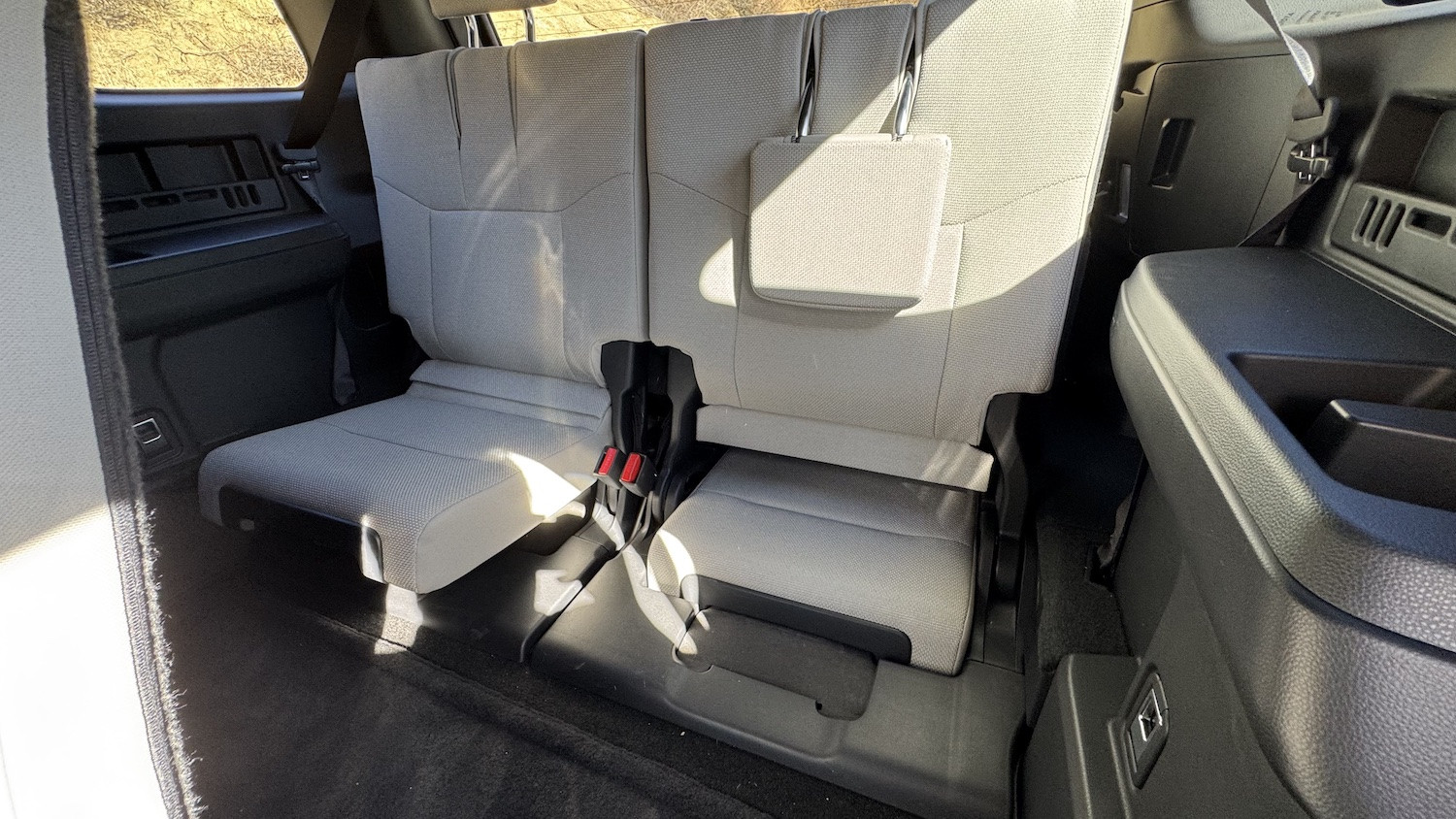 4runner 5868
4runner 5868
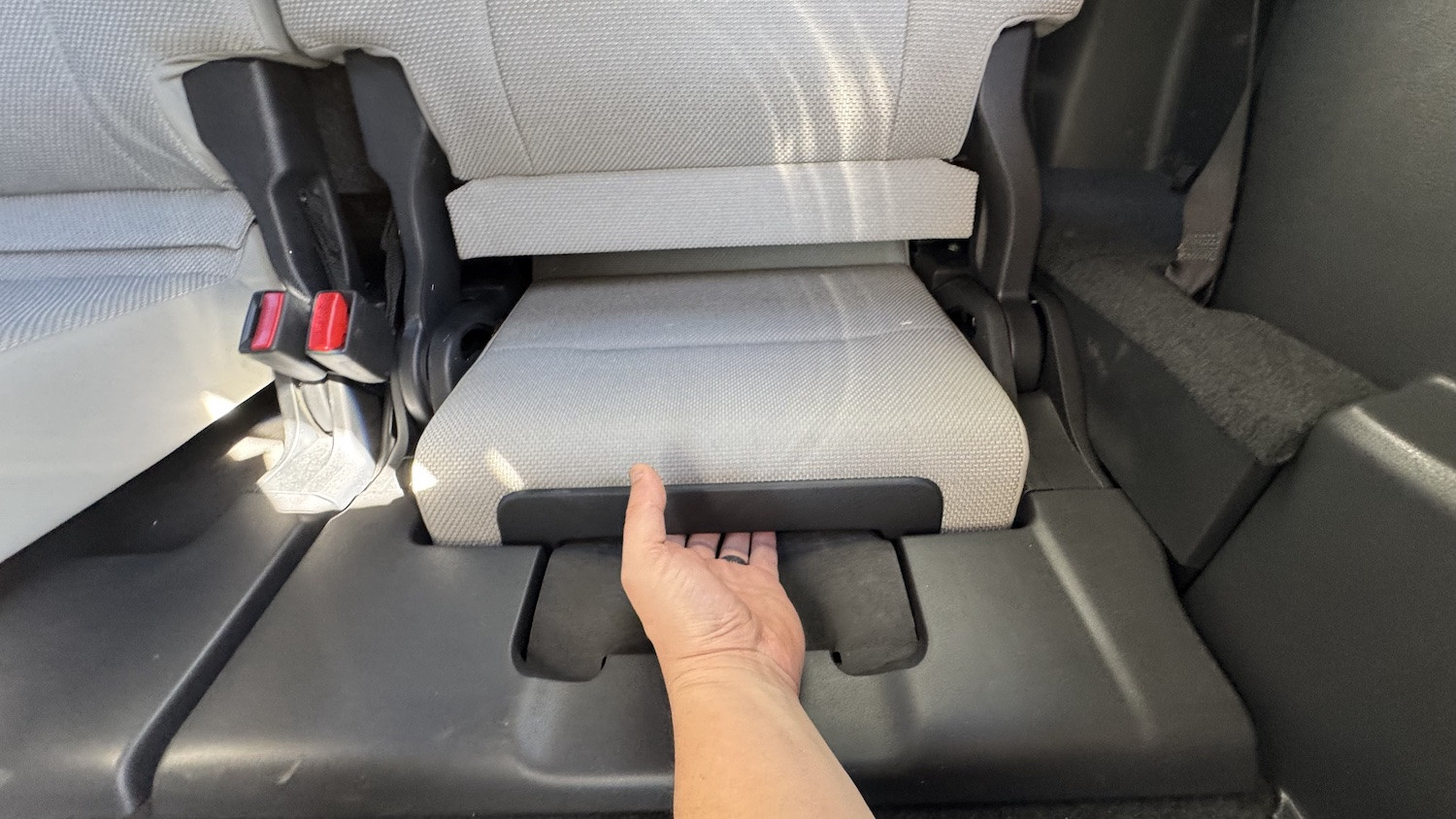 4runner 5869
4runner 5869
Once deployed, the jump seats are functional, but space is limited, particularly for adults.
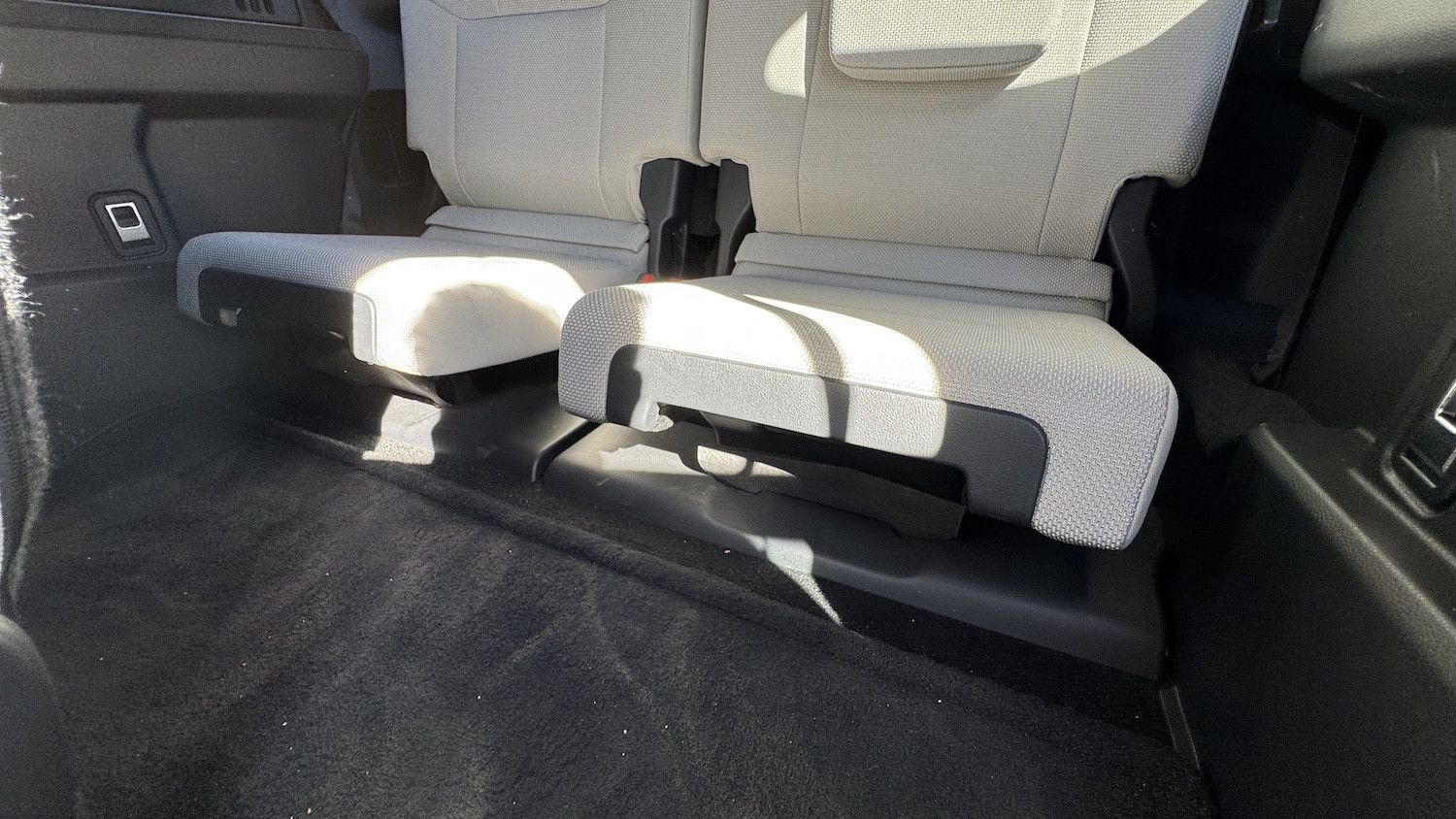 4runner 5870
4runner 5870
For an average-sized adult (five-foot eight-inches), legroom is tight, suitable for short trips but less comfortable for longer journeys.
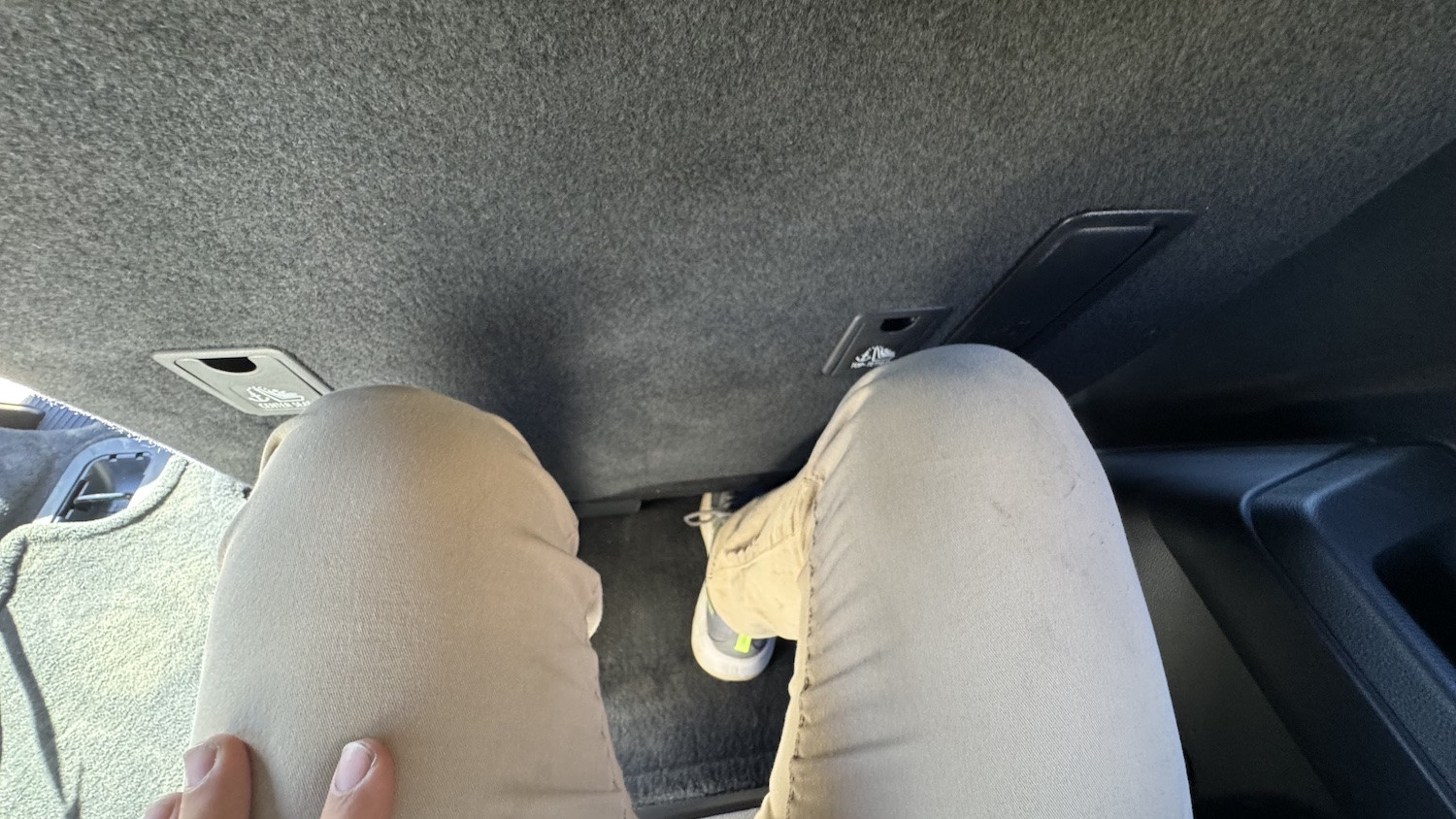 4runner 5876
4runner 5876
The most significant limitation is headroom, which is notably restricted for adults. Headroom is likely to be insufficient for taller individuals, making the third row more appropriate for children and smaller teenagers.
 4runner 5877
4runner 5877
Off-Road Prowess: The 4Runner Trailhunter
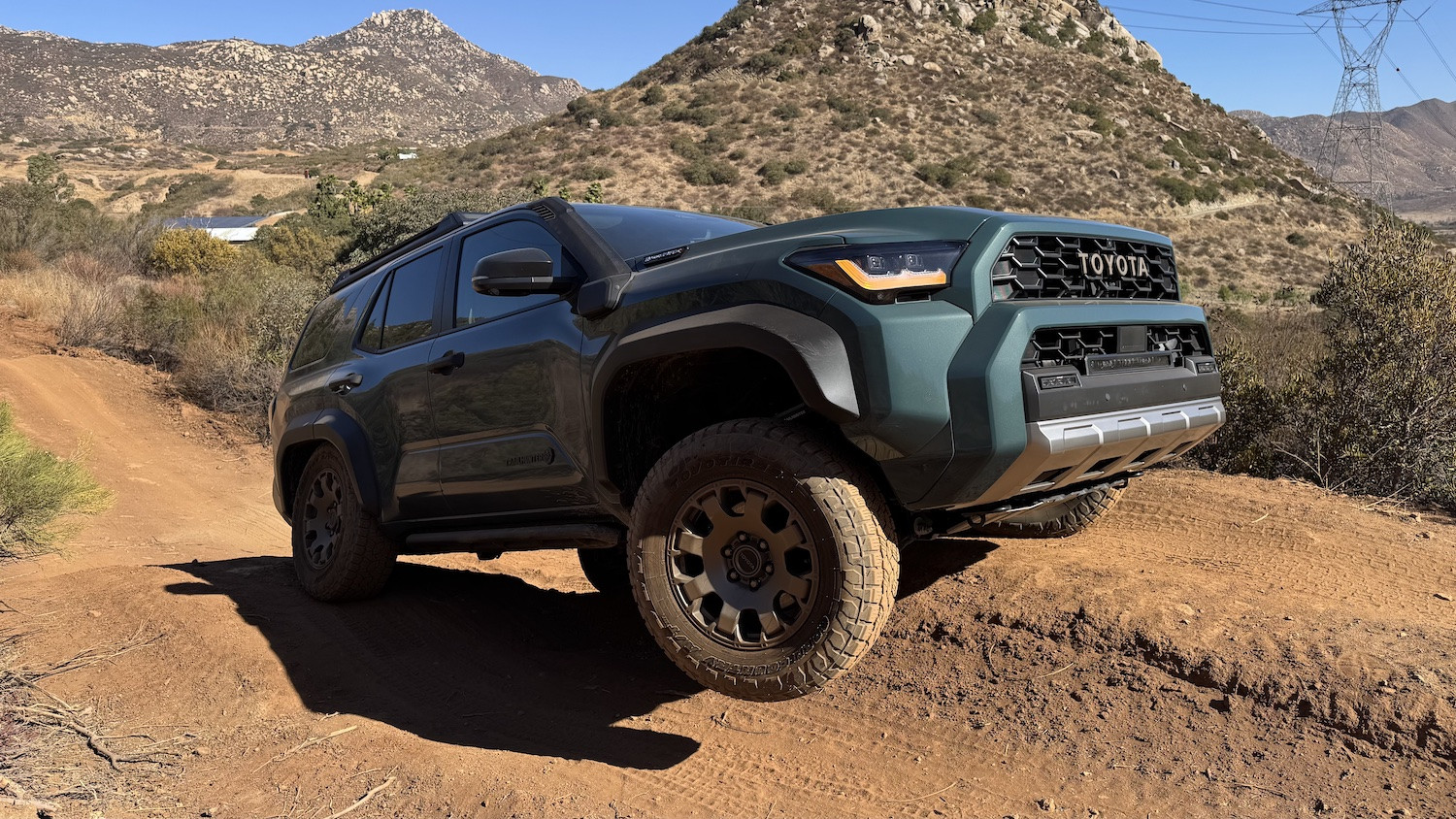 4runner 5928
4runner 5928
The new Toyota 4Runner Trailhunter represents the overlanding-focused trim, positioned alongside the TRD Pro, which leans towards higher-speed, rally-style off-roading. Priced at $68,350, the Trailhunter is a significant investment, but it delivers substantial off-road capability. Key features include robust underbody protection, a sway bar disconnect for enhanced front axle articulation, substantial 33-inch tires, a rear locker, and a snorkel. The interior is also well-equipped, reflecting its premium off-road positioning.
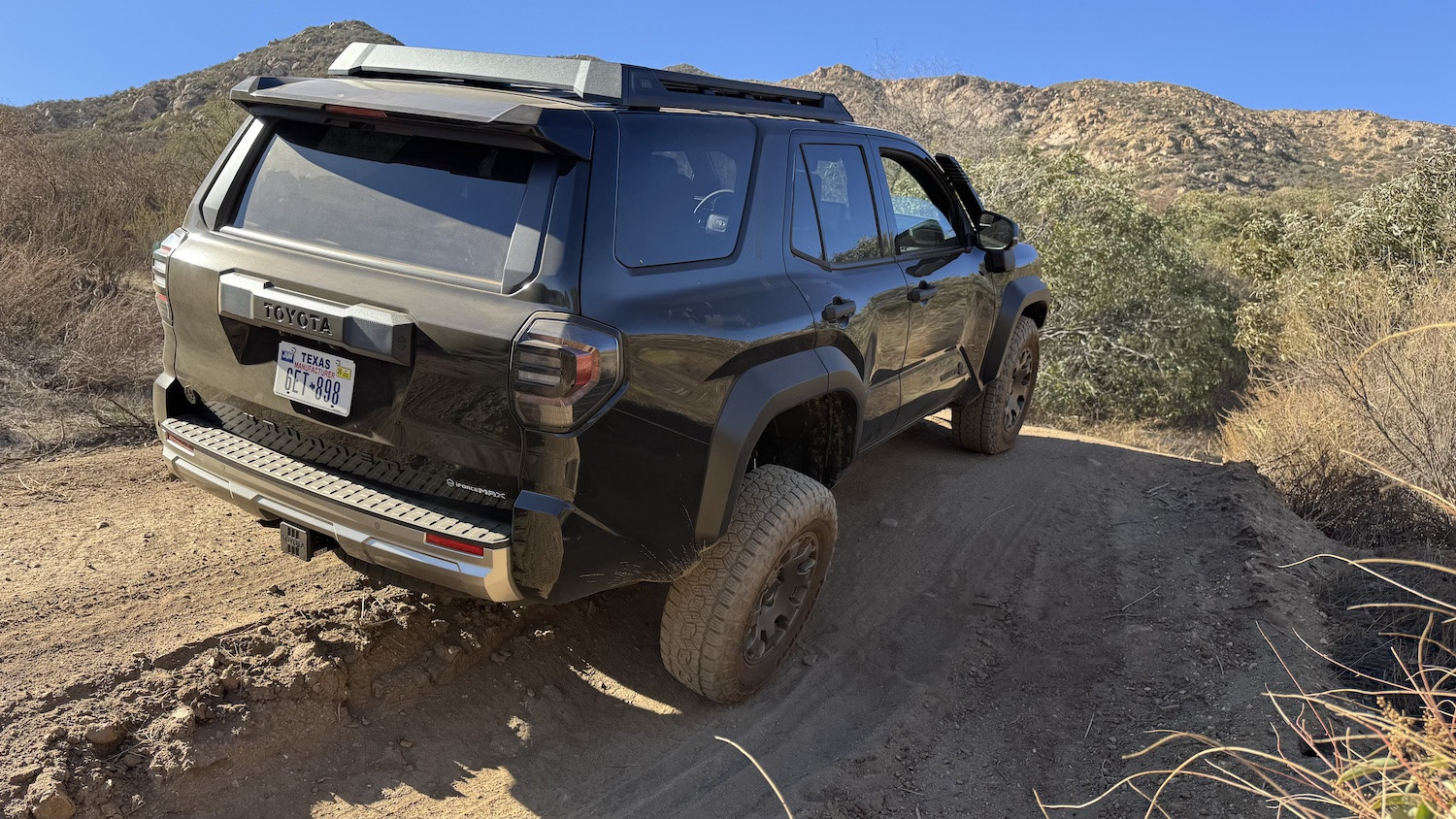 4runner 5916
4runner 5916
The off-road trail experience with the Trailhunter proved to be remarkably easy, showcasing its inherent capabilities. While the sway bar disconnect did not drastically increase front axle articulation due to the independent front suspension design, the coil-sprung five-link rear axle demonstrated impressive flex, ensuring smooth traversal over uneven terrain. The inclusion of a front-facing camera further simplifies navigating challenging trails.
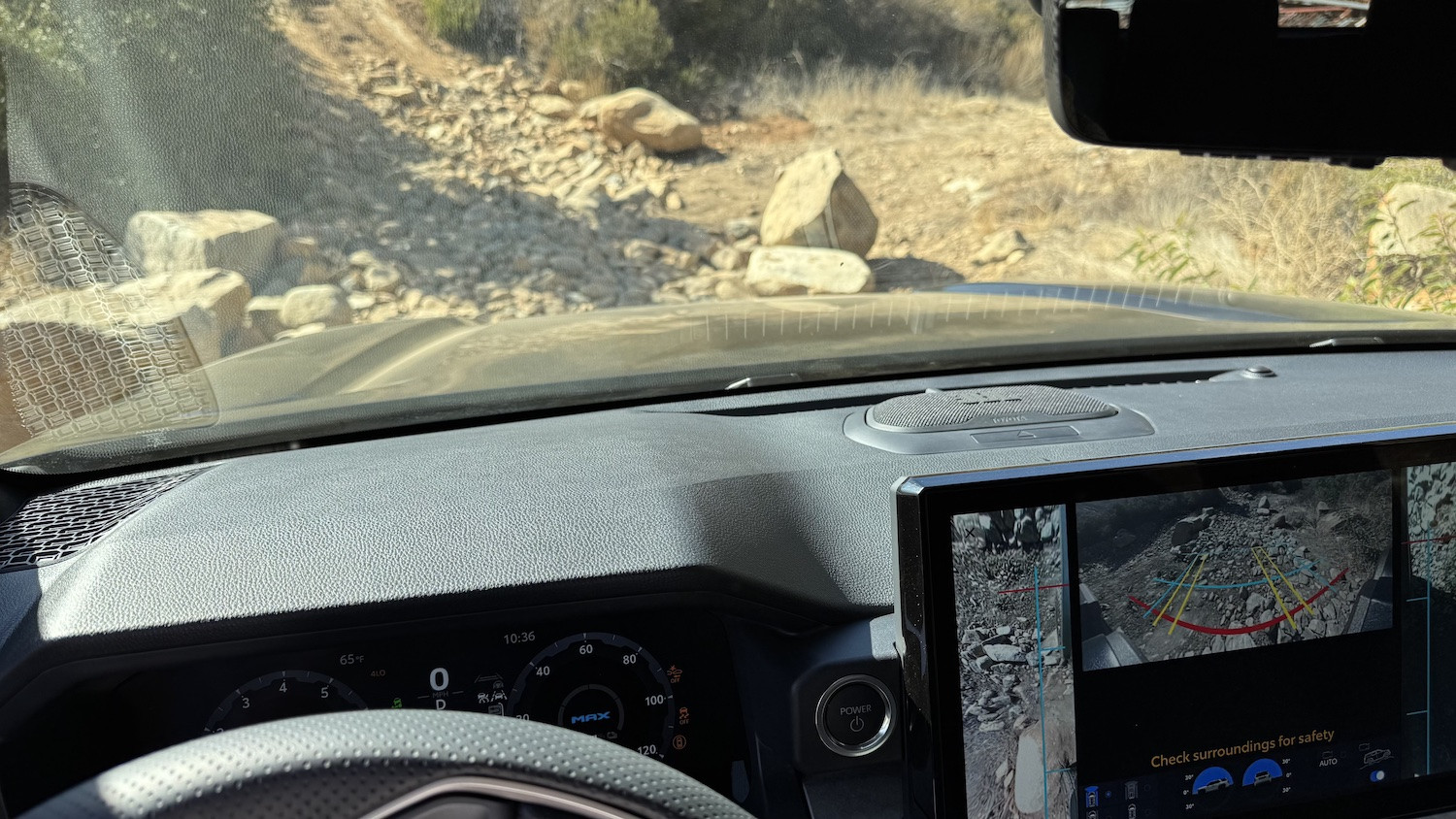 4runner 5904
4runner 5904
 4runner 5940
4runner 5940
The hood design, with a lower central section, enhances forward visibility, making trail navigation more intuitive. Underbody skid plates on the front end, fuel tank, and transfer case provide substantial protection against rocks and trail debris.
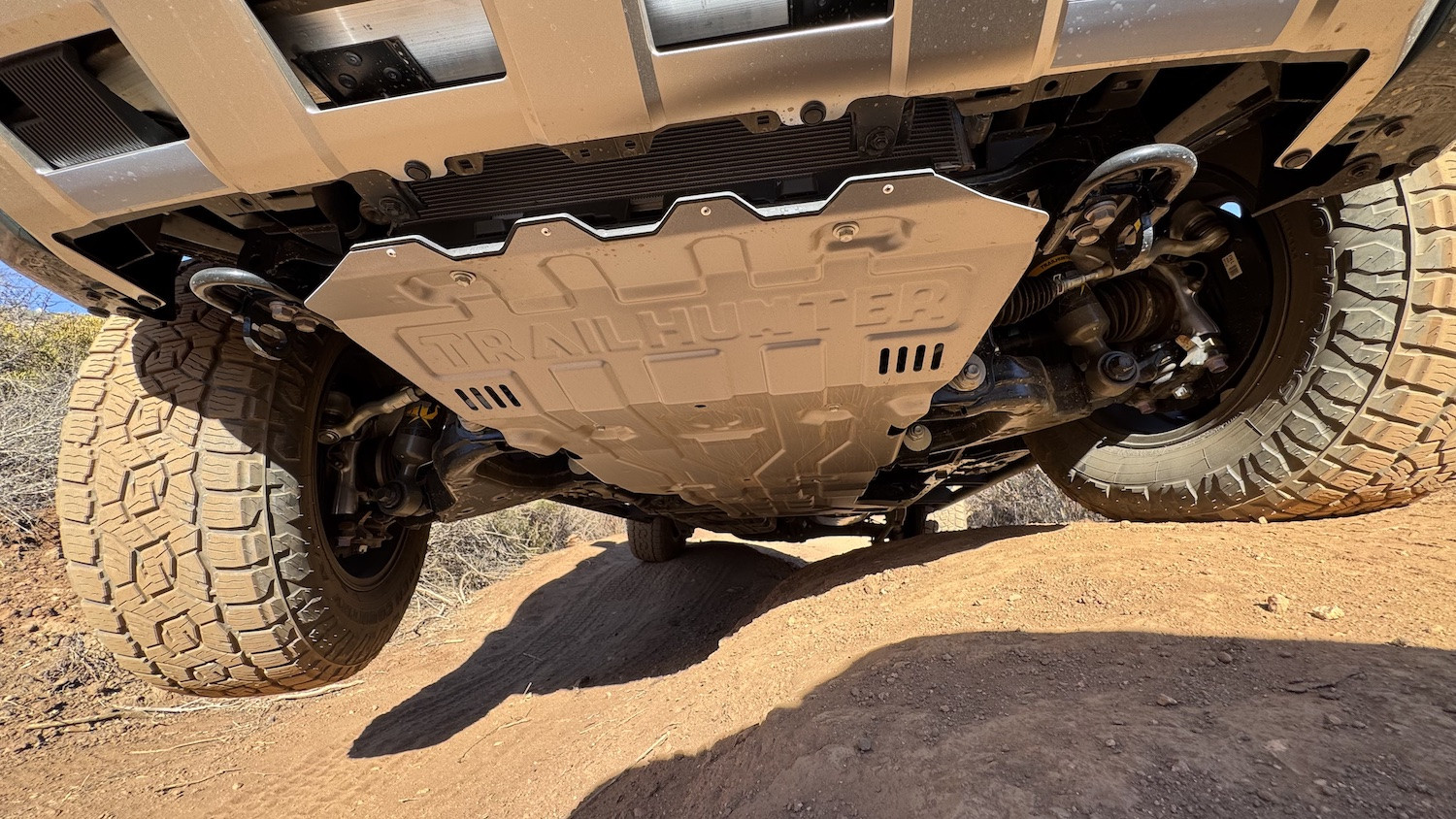 4runner 5929
4runner 5929
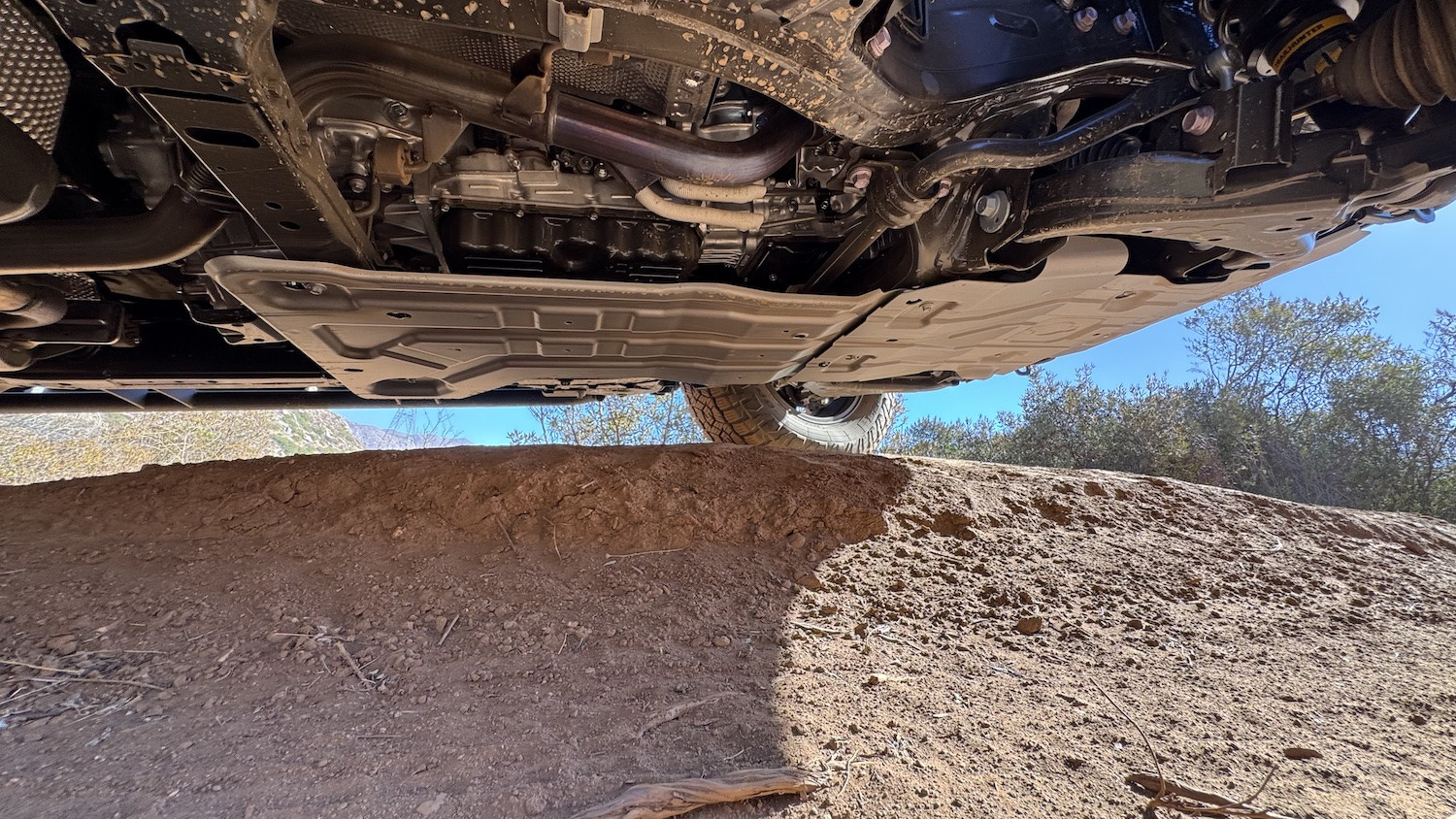 4runner 5930
4runner 5930
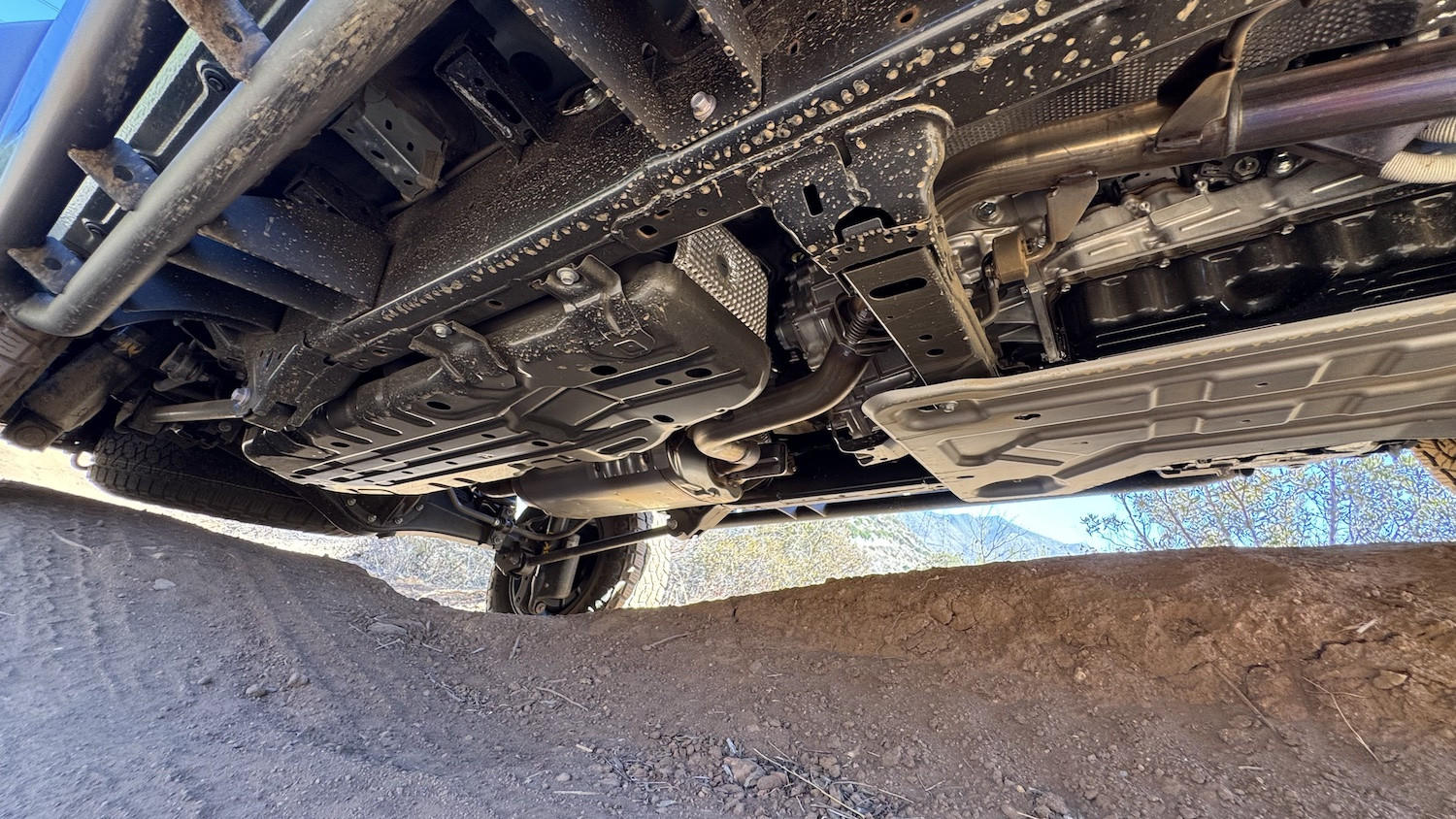 4runner 5931
4runner 5931
Despite its 10.1 inches of ground clearance, rear locker, and disconnecting front sway bar, the Trailhunter’s overall off-road geometry, particularly its breakover and departure angles, is not class-leading. With a 24-degree breakover and departure angle, it falls short of the more extreme figures offered by vehicles like the Ford Bronco or Jeep Wrangler, indicating a balanced approach to off-road capability rather than outright dominance.
High-Speed Fun: The TRD Pro “Rally” SUV
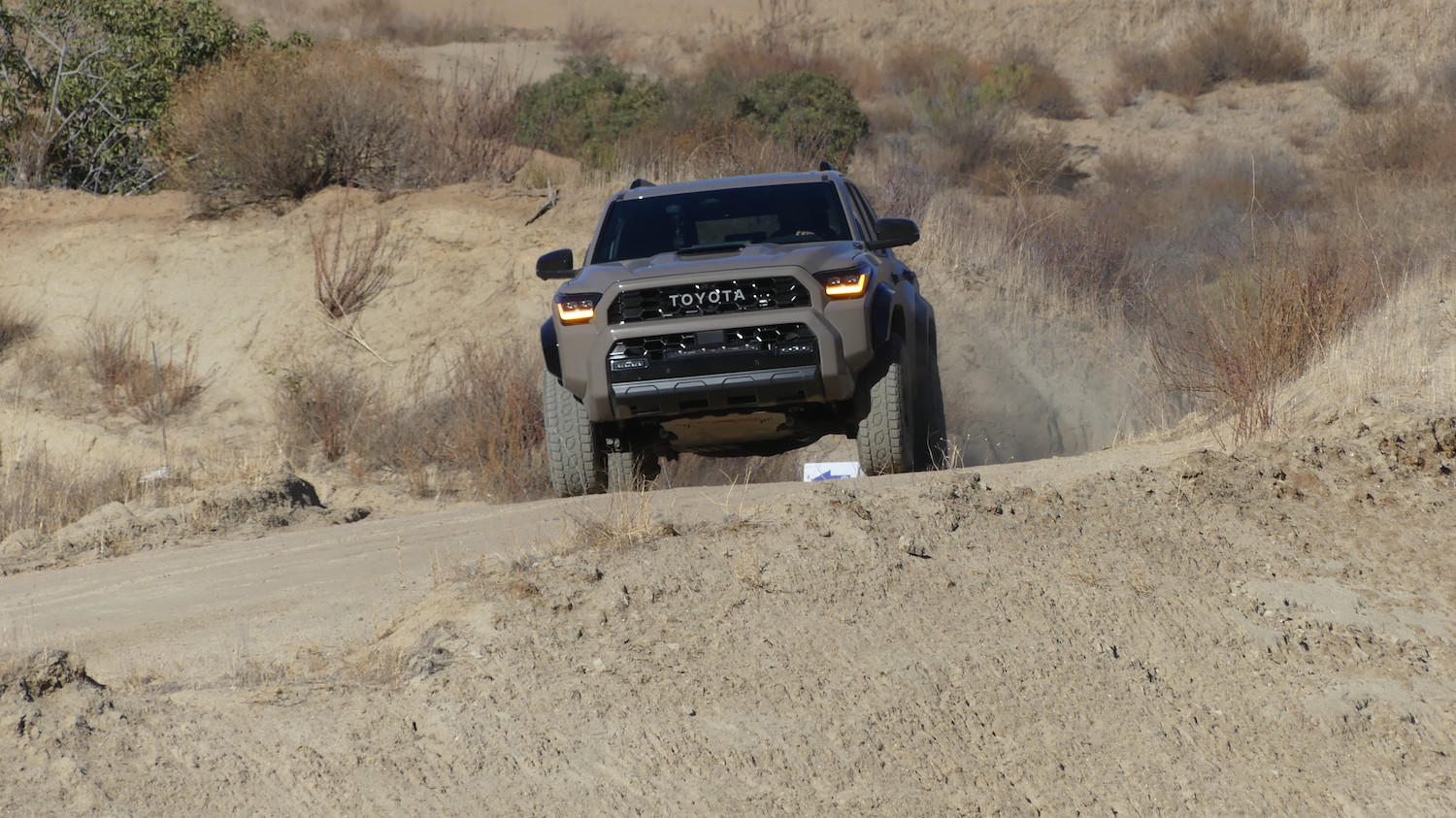 P1030239
P1030239
The new Toyota 4Runner TRD Pro was tested on a high-speed dirt track, revealing its strengths in rally-style driving. Equipped with “3-way adjustable Fox 2.5-in internal bypass Q3S shocks with rear piggy-back remote reservoirs,” the suspension effectively absorbed bumps and undulations at speed, providing a composed and controlled ride.
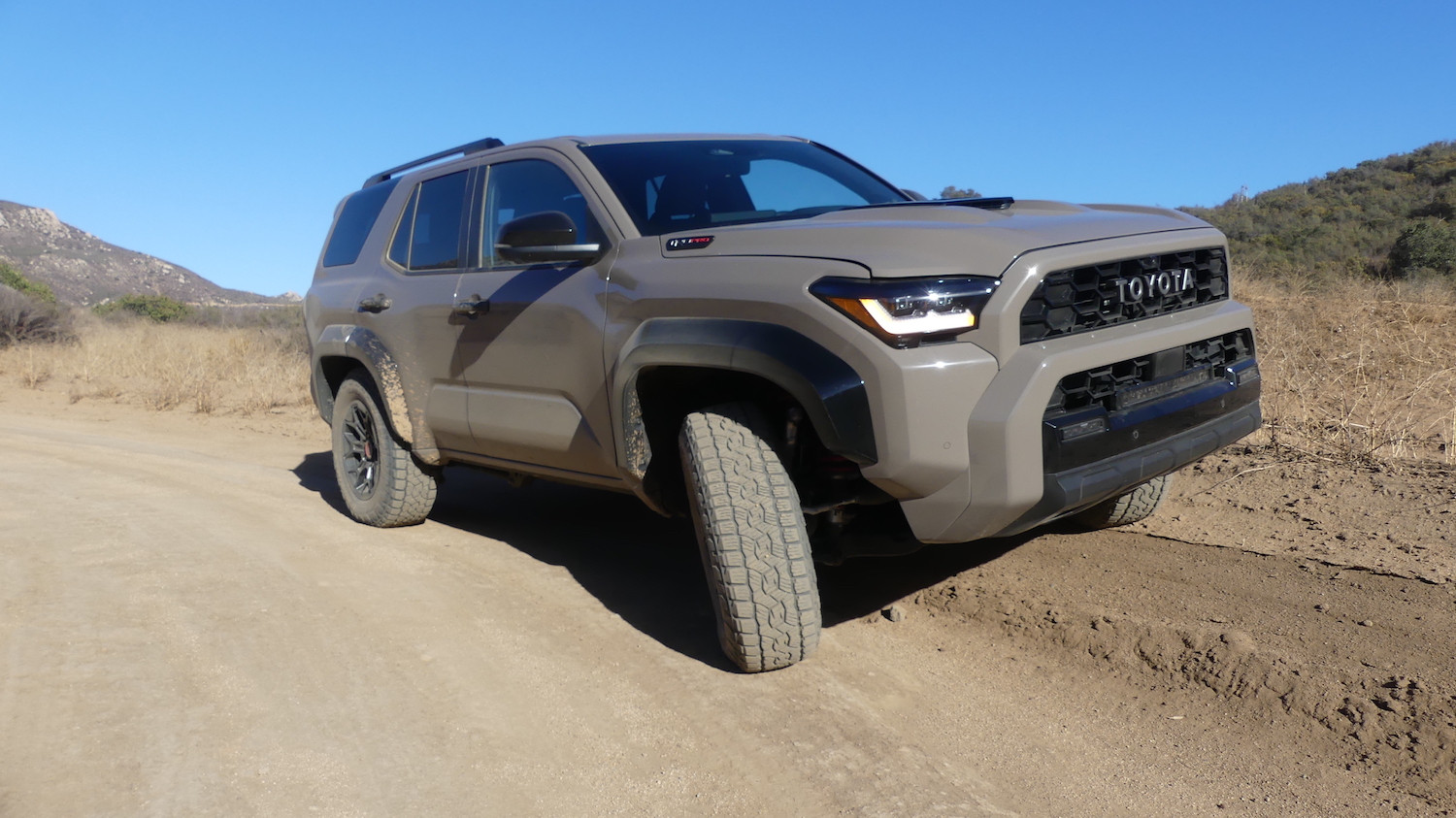 P1030245
P1030245
Toyota even demonstrated the TRD Pro’s jump capability, underscoring its robust chassis and suspension design, built to withstand demanding off-road conditions.
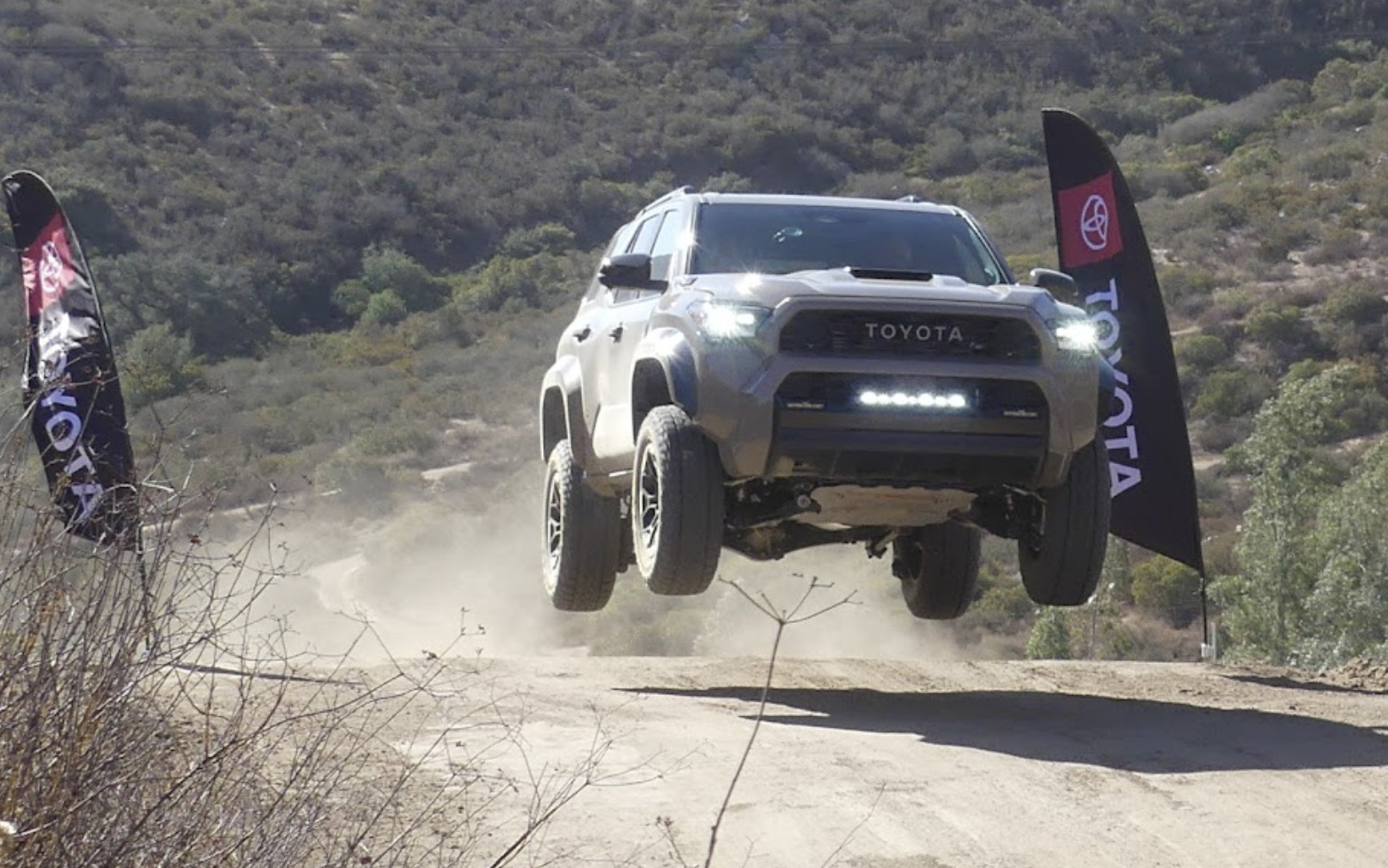 Screen Shot 2025 01 27 At 9.23.57 Pm
Screen Shot 2025 01 27 At 9.23.57 Pm
However, despite its high-speed off-road prowess, the TRD Pro retains some of the aesthetic and material drawbacks noted earlier, such as the piano black exterior trim and the non-functional, vibrating hood scoop.
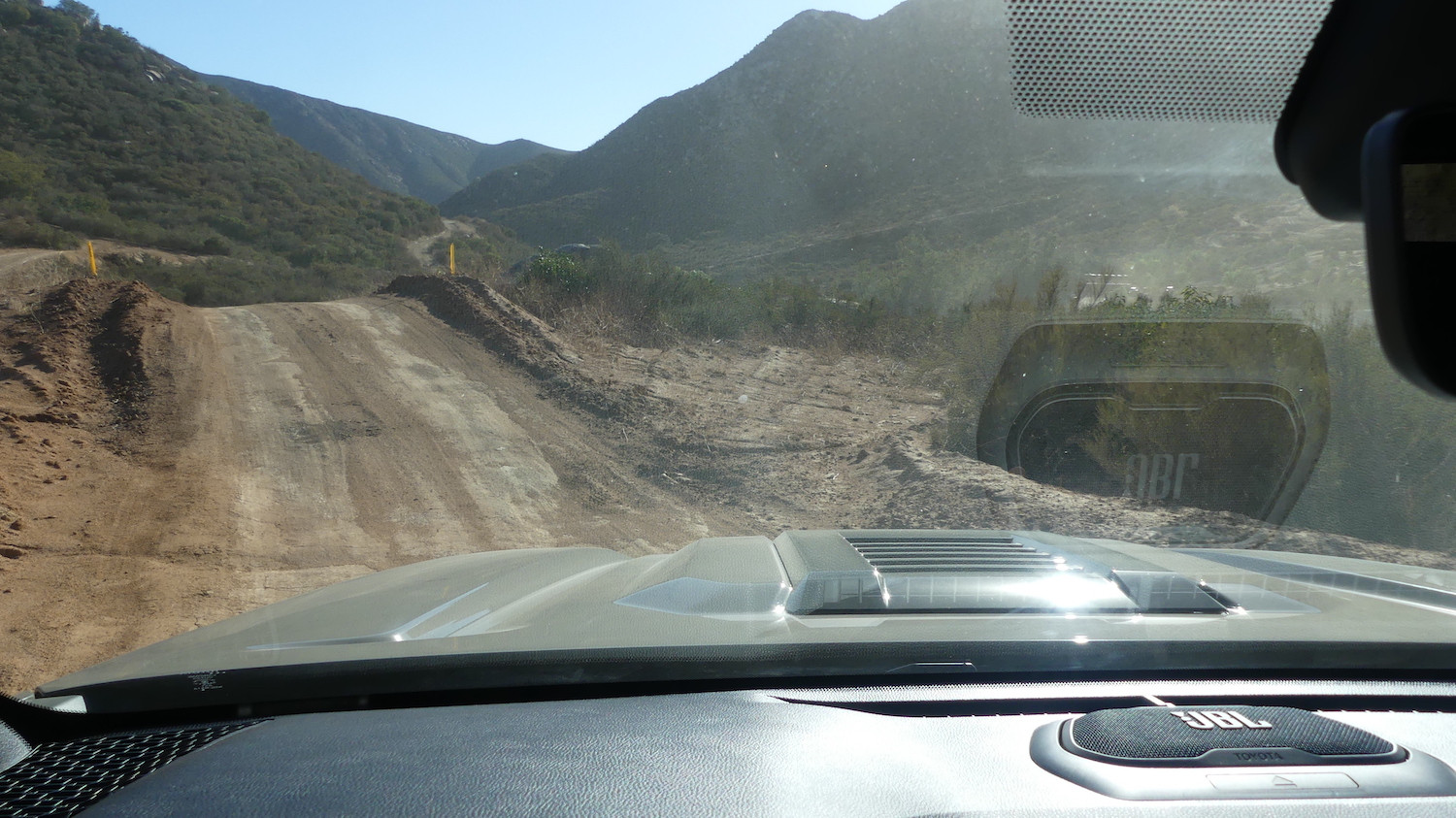 P1030242
P1030242
Additionally, the underbody protection on the TRD Pro is not as comprehensive as that found on the Trailhunter. The Trailhunter, while also capable in higher-speed desert terrain with its “Old Man Emu® 2.5-in forged shocks with rear piggyback remote reservoirs,” prioritizes more thorough underbody protection for serious overlanding.
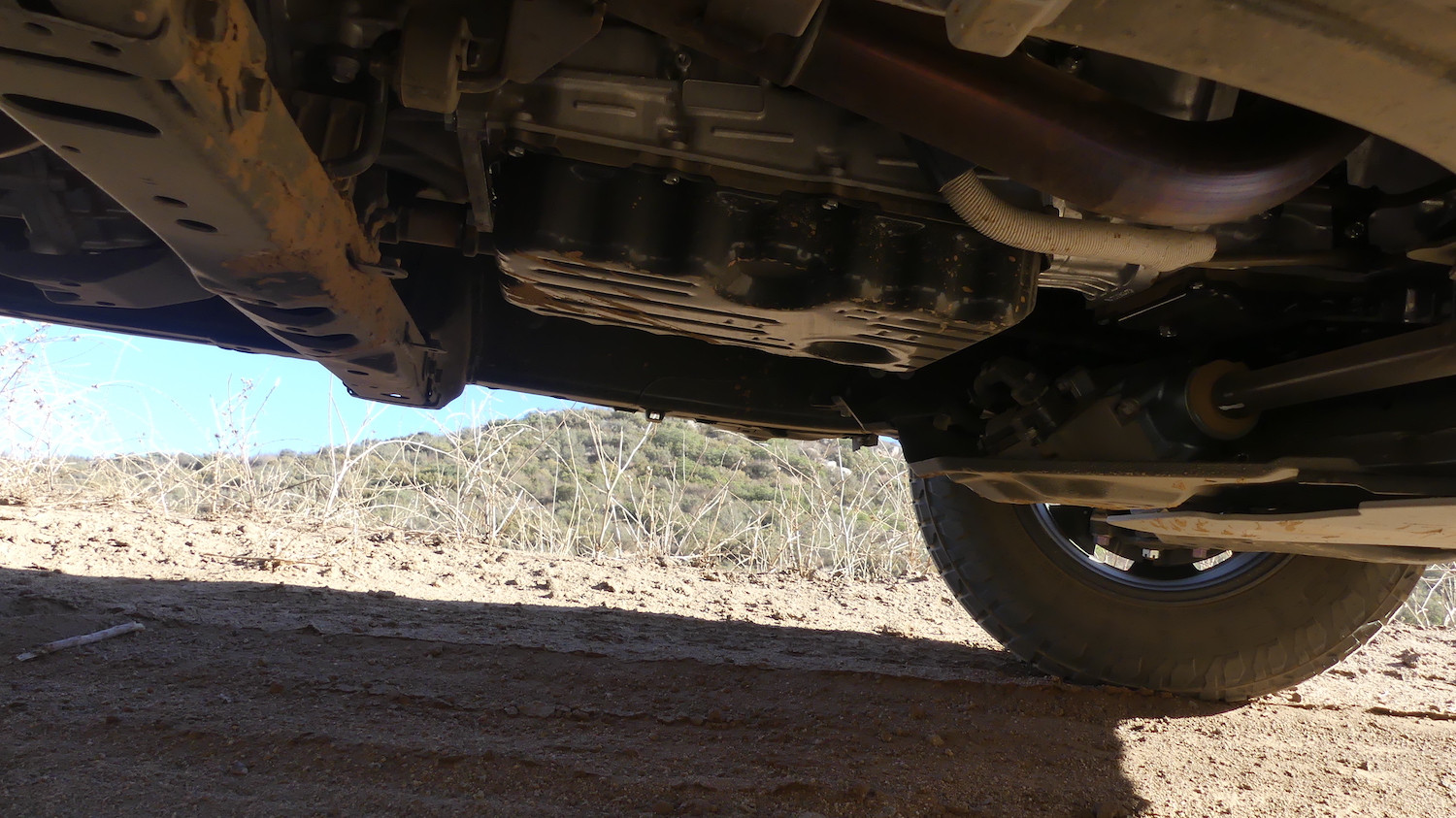 P1030248
P1030248
While both the Trailhunter and TRD Pro offer significant off-road capability, the TRD Off-Road trim emerges as a compelling middle ground, balancing off-road features with value.
The Goldilocks Trim: 4Runner TRD Off-Road
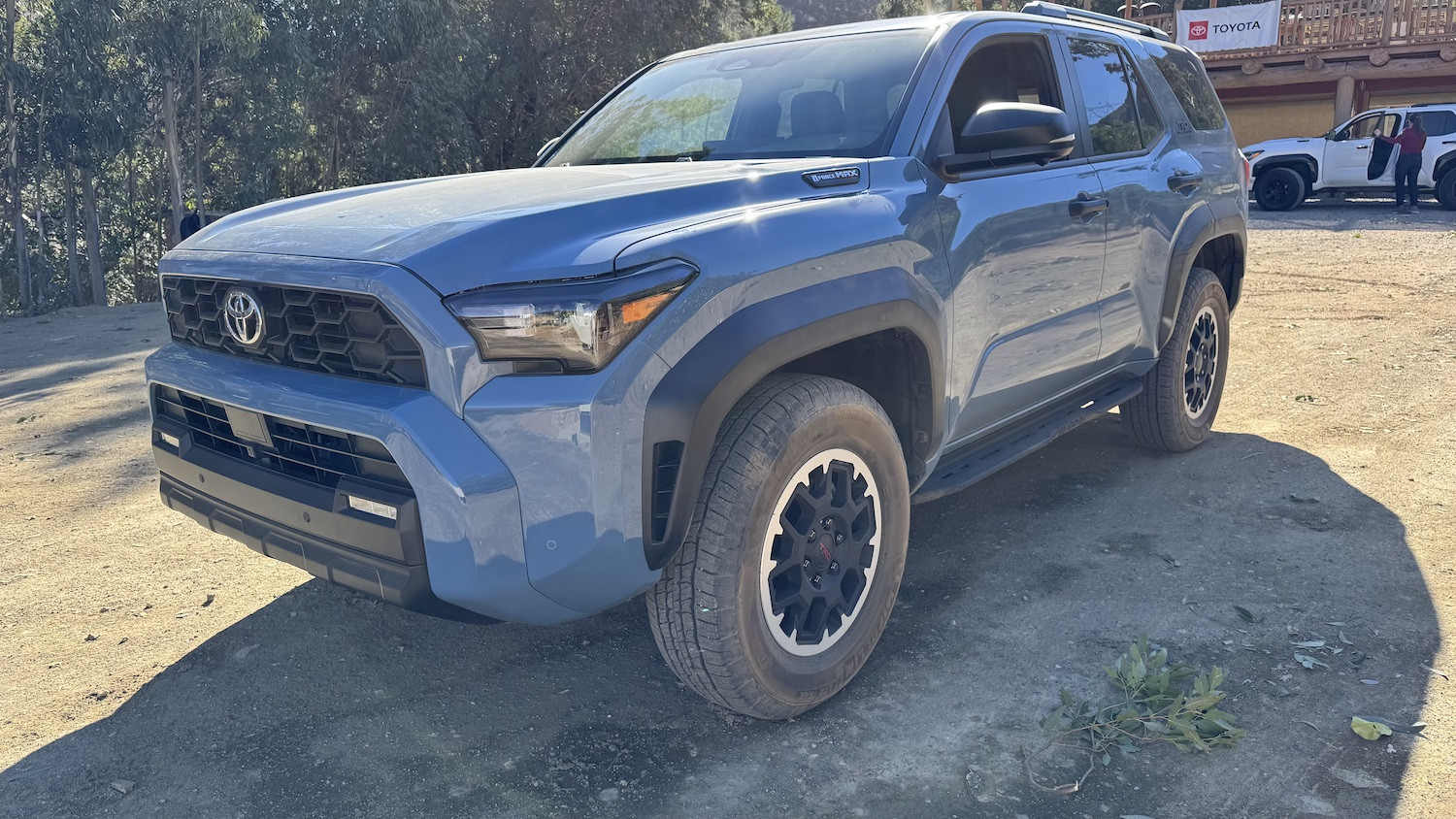 4runner 5971
4runner 5971
The TRD Off-Road trim of the new Toyota 4Runner mirrors the “Goldilocks” position previously identified in the Tacoma lineup, striking an optimal balance of features, capability, and price. This trim becomes the focal point for comparison with the Land Cruiser, representing a sweet spot in the 4Runner range.
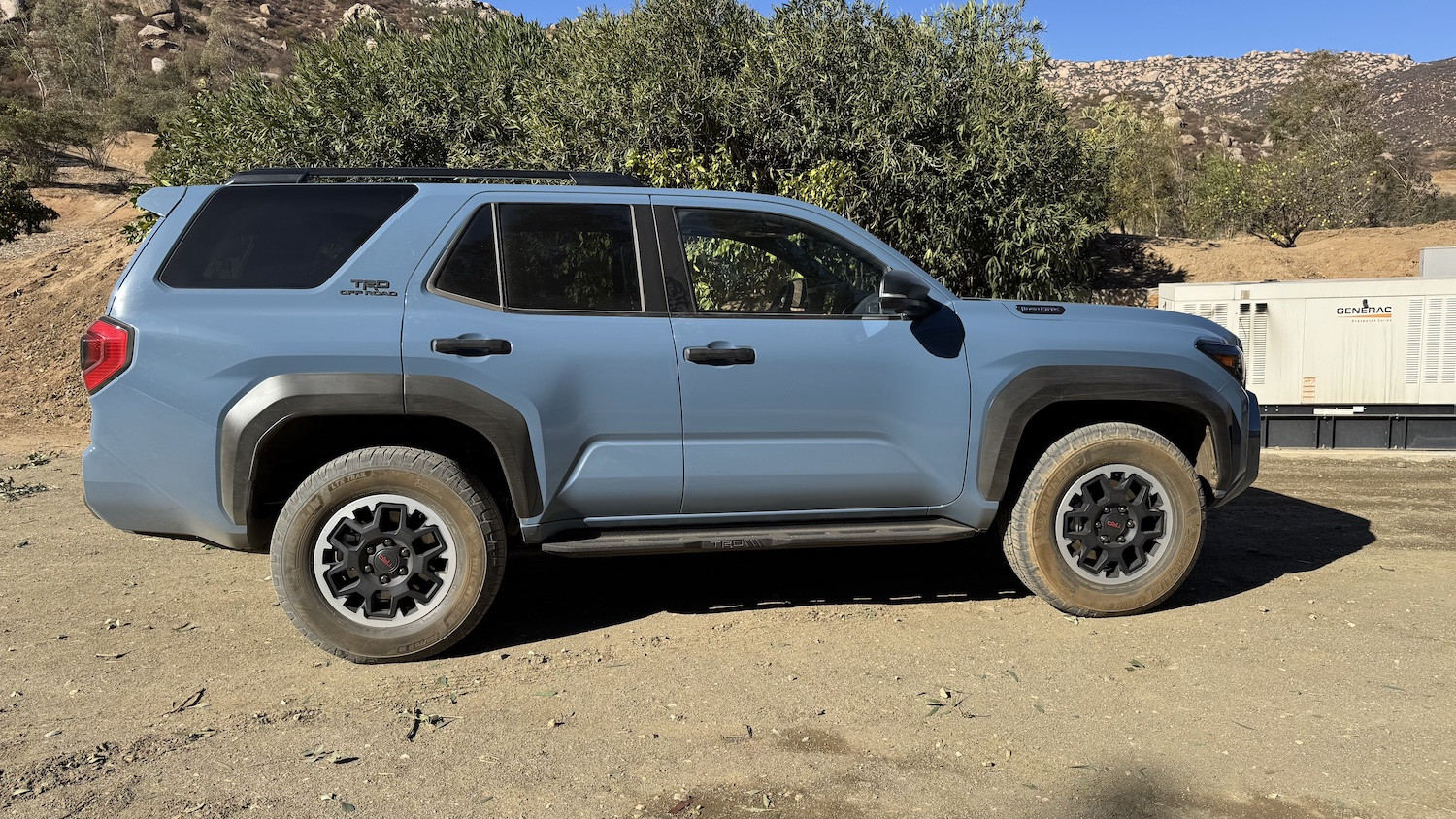 4runner 5972
4runner 5972
 4runner 5973
4runner 5973
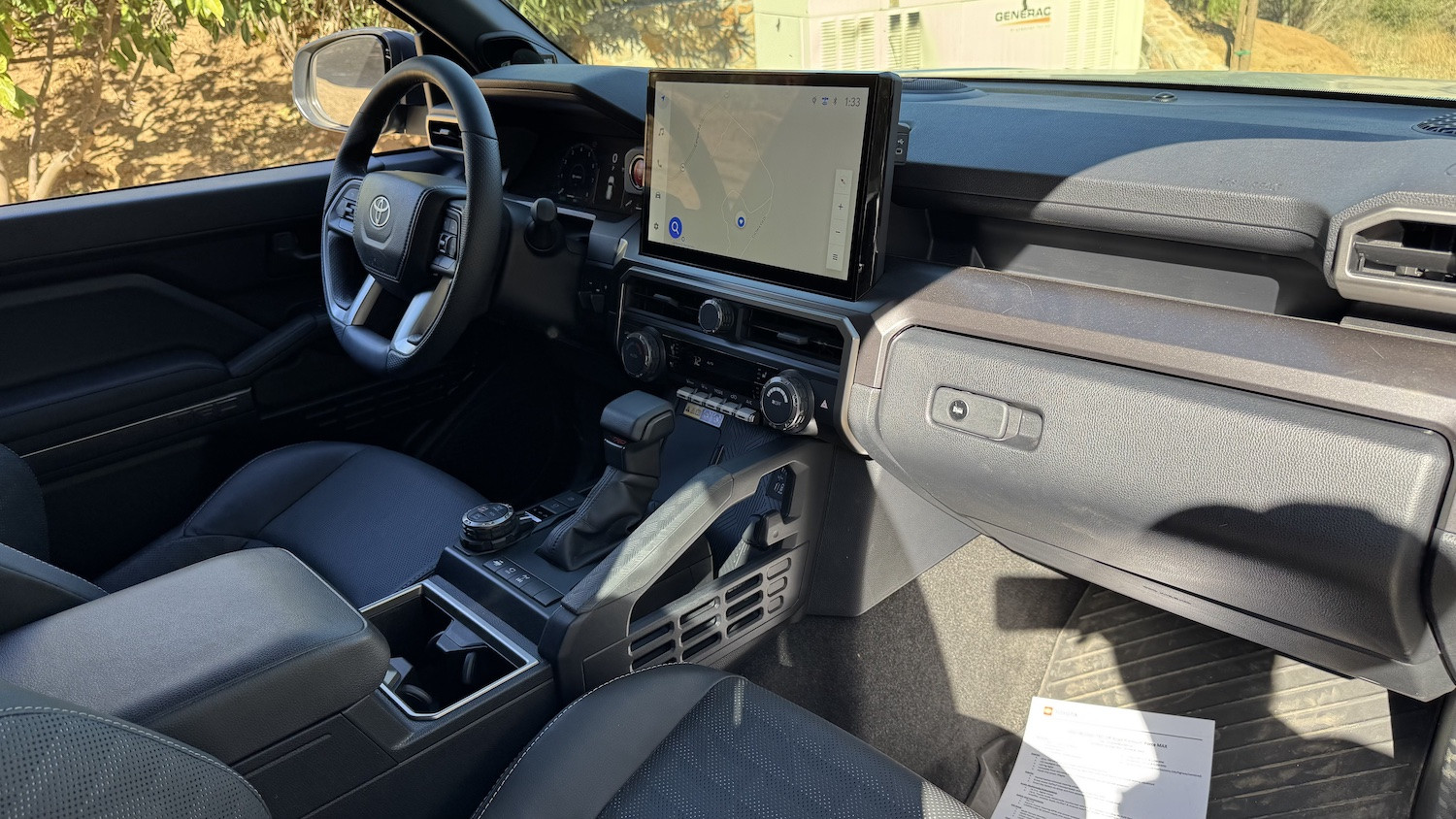 4runner 5974
4runner 5974
Starting at $50,640 for the base TRD Off-Road and $56,420 for the TRD Off-Road Premium, these models are priced higher than comparable Ford Bronco or Jeep Wrangler four-door models by approximately $10,000. However, the established reputation for reliability and refinement associated with the 4Runner brand justifies this price premium for many buyers. The TRD Off-Road trim offers the best value proposition within the 4Runner lineup, providing significant off-road capability without the highest price tag.
The TRD Off-Road Premium hybrid, costing over $60,870, includes upgrades such as a faux-leather interior, a larger screen, a front-facing camera, and a moonroof, in addition to standard TRD Off-Road features like 33-inch tires and a rear locker.
 4runner 5942
4runner 5942
 4runner 5943
4runner 5943
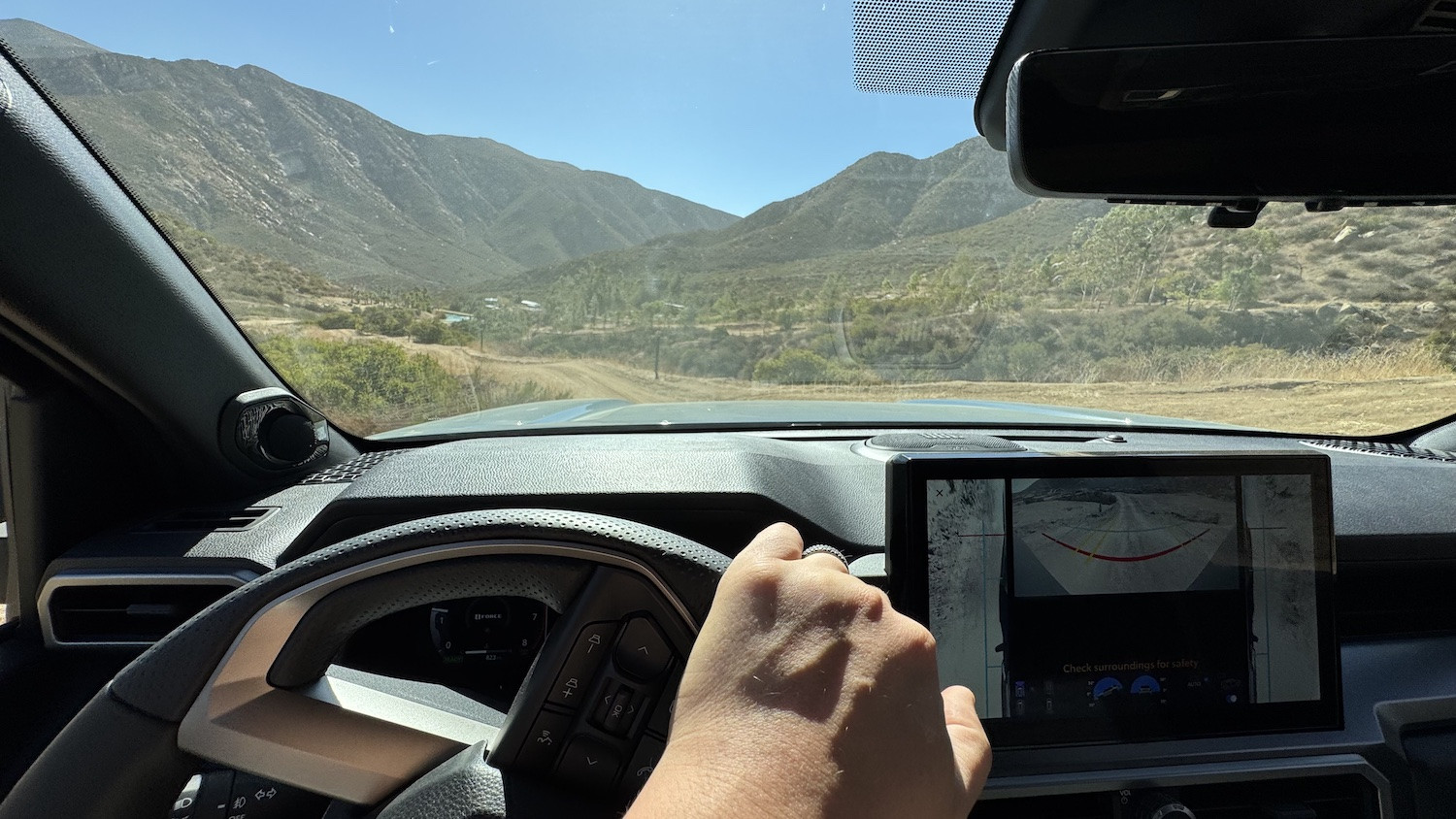 4runner 5944
4runner 5944
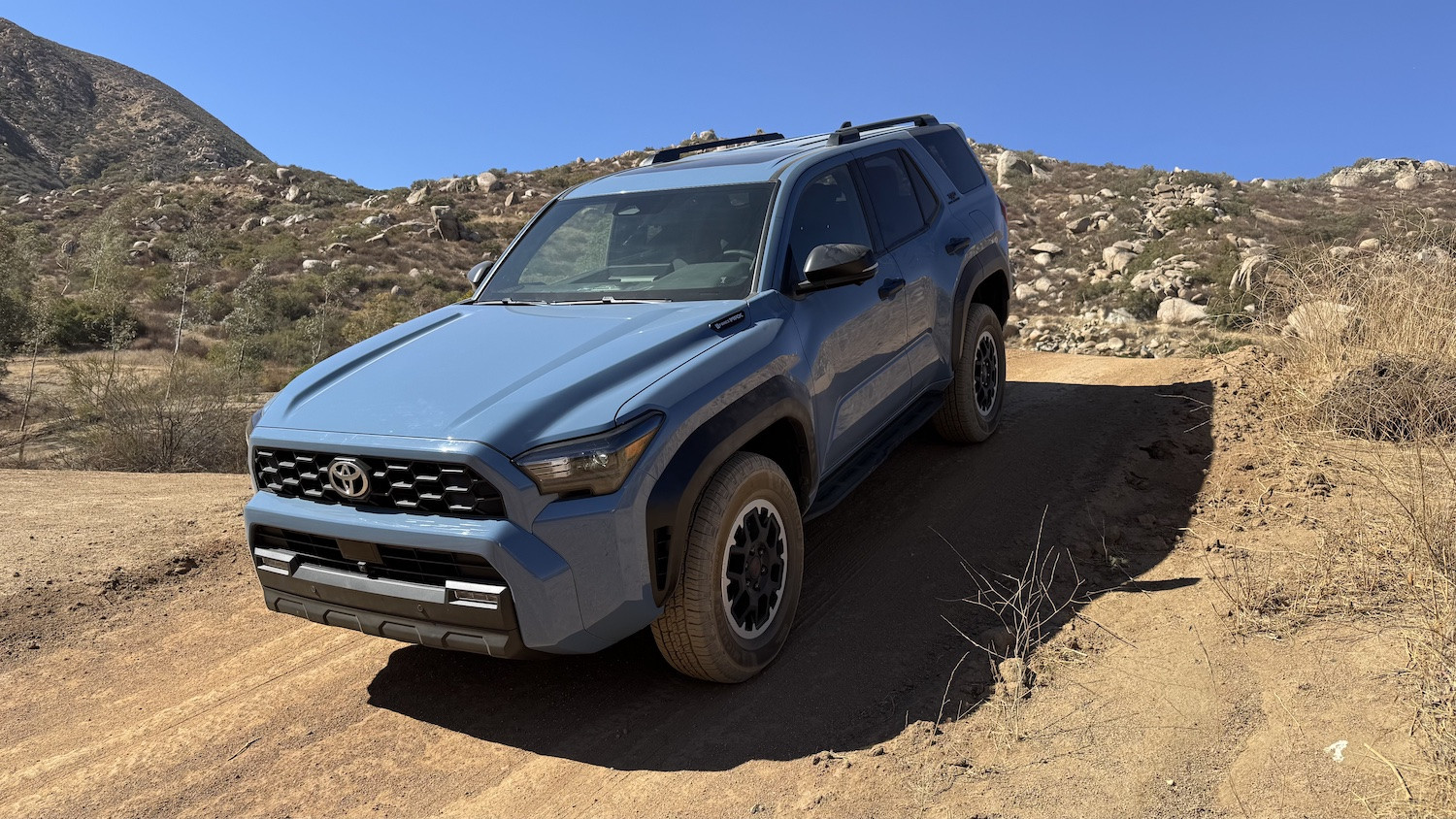 4runner 5945
4runner 5945
While extensive off-roading wasn’t conducted with the TRD Off-Road, its capabilities are evident, offering ample performance for most off-road enthusiasts. Forward visibility is excellent, particularly with the optional front camera, and the 9.1 inches of ground clearance is generous. The matte-black fender flares are functional and understated, aligning with a practical off-road aesthetic.
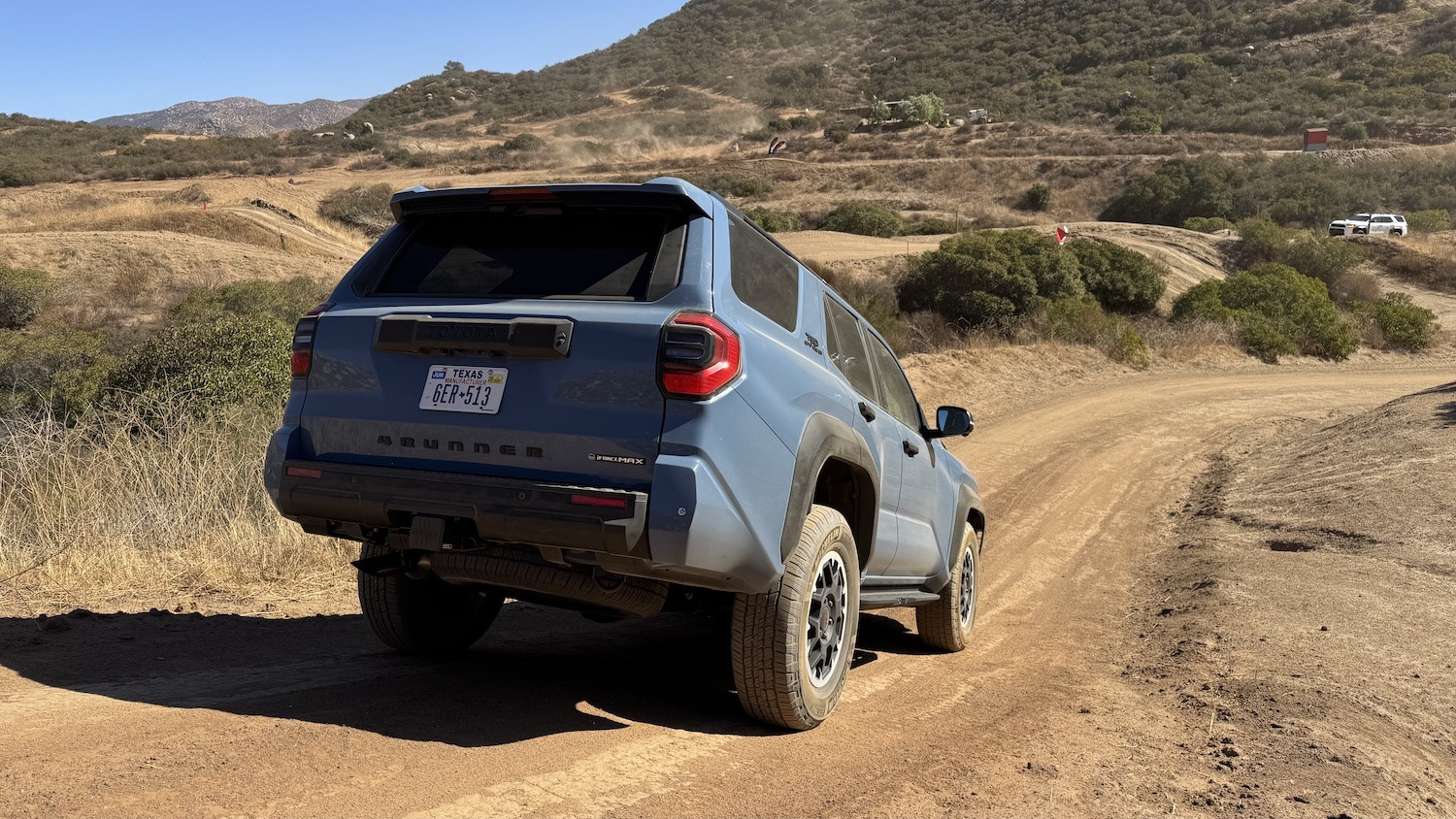 4runner 5950
4runner 5950
 4runner 5954
4runner 5954
 4runner 5941 2
4runner 5941 2
The TRD Off-Road lacks a sway bar disconnect, but this is less critical given the limited front suspension articulation inherent in the design. Underbody protection is adequate, though the front skid plate is likely composite, and transmission protection is minimal. However, aftermarket solutions can easily address these limitations.
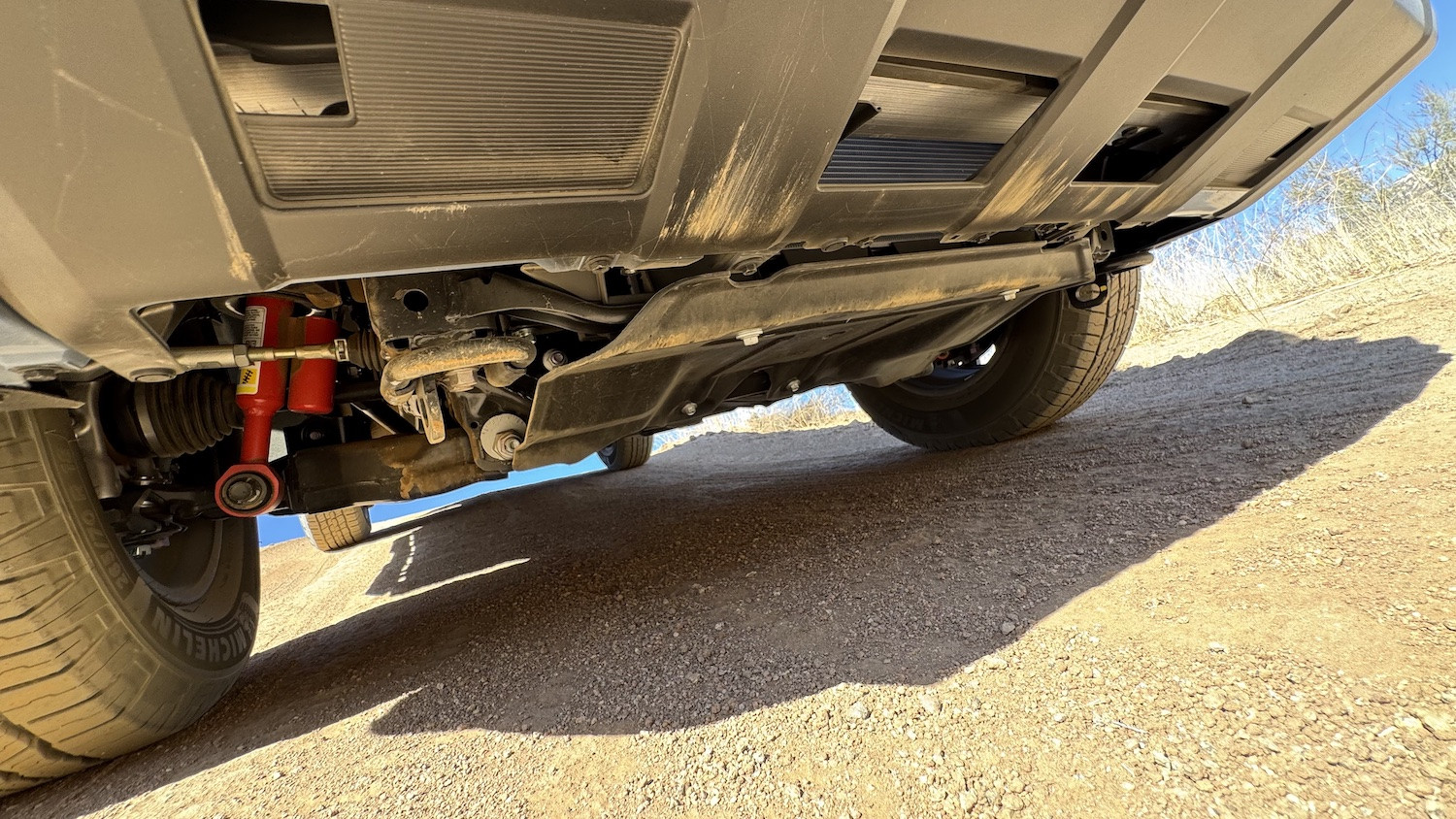 4runner 5946
4runner 5946
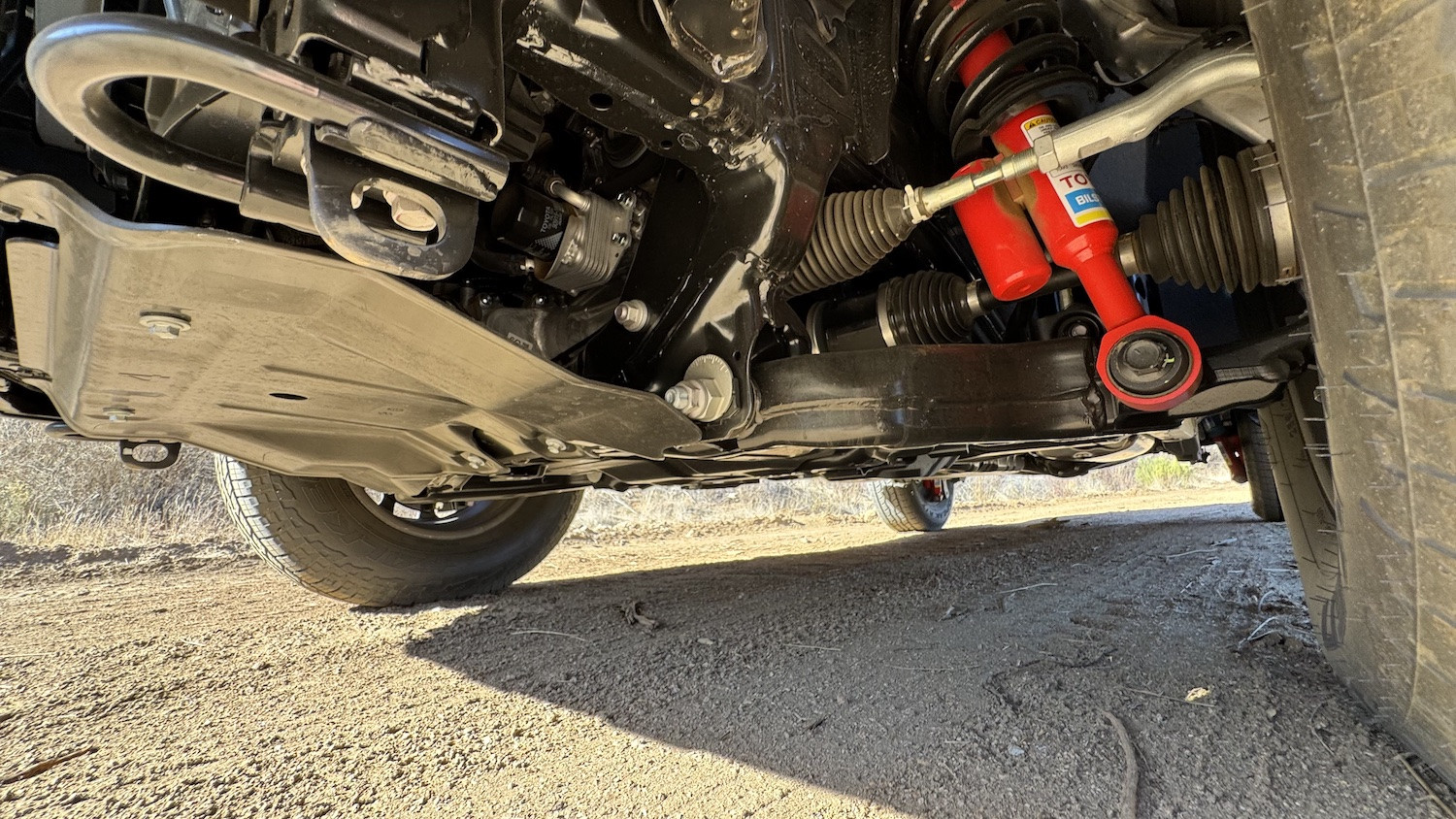 4runner 5992
4runner 5992
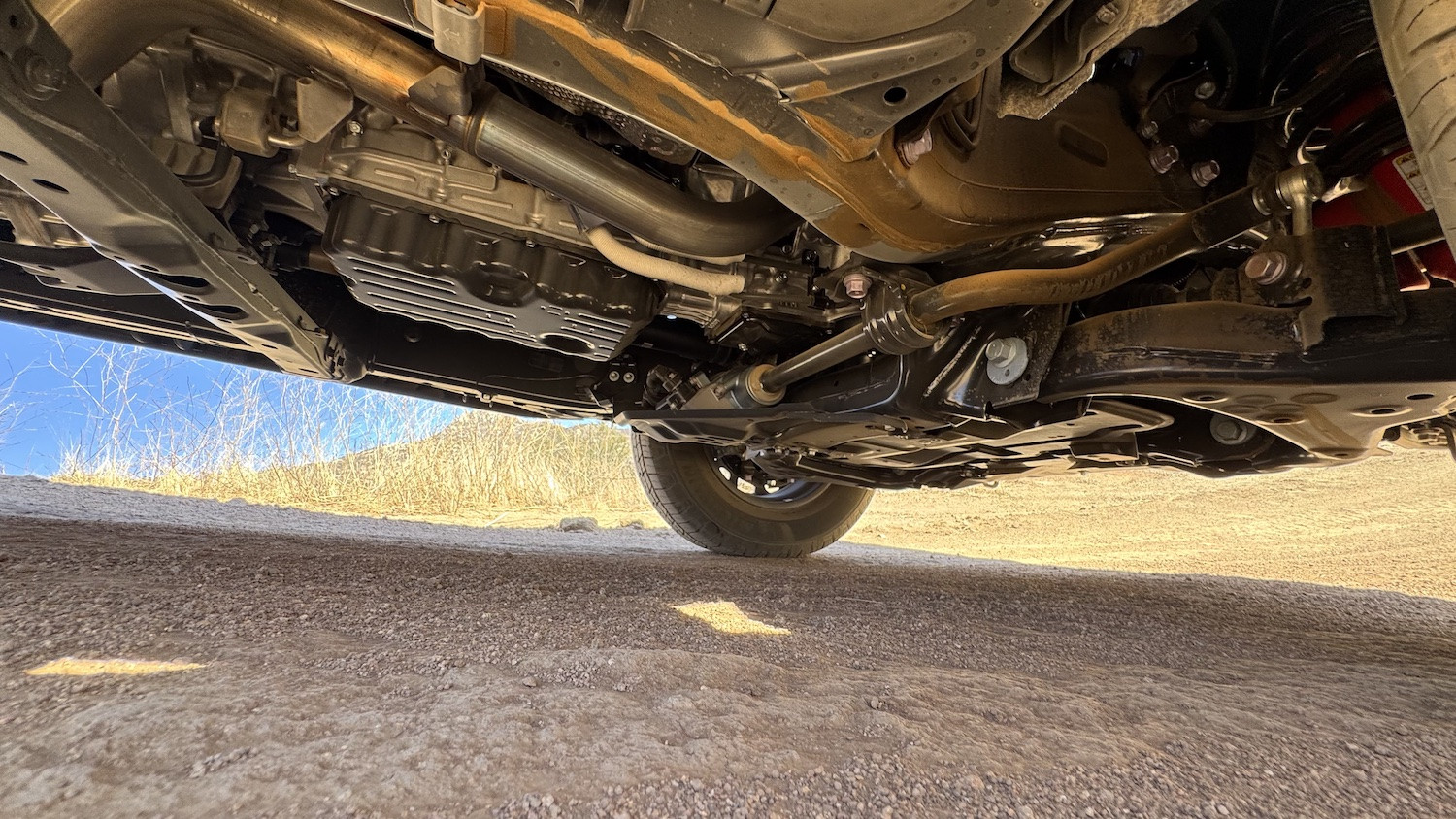 4runner 5947
4runner 5947
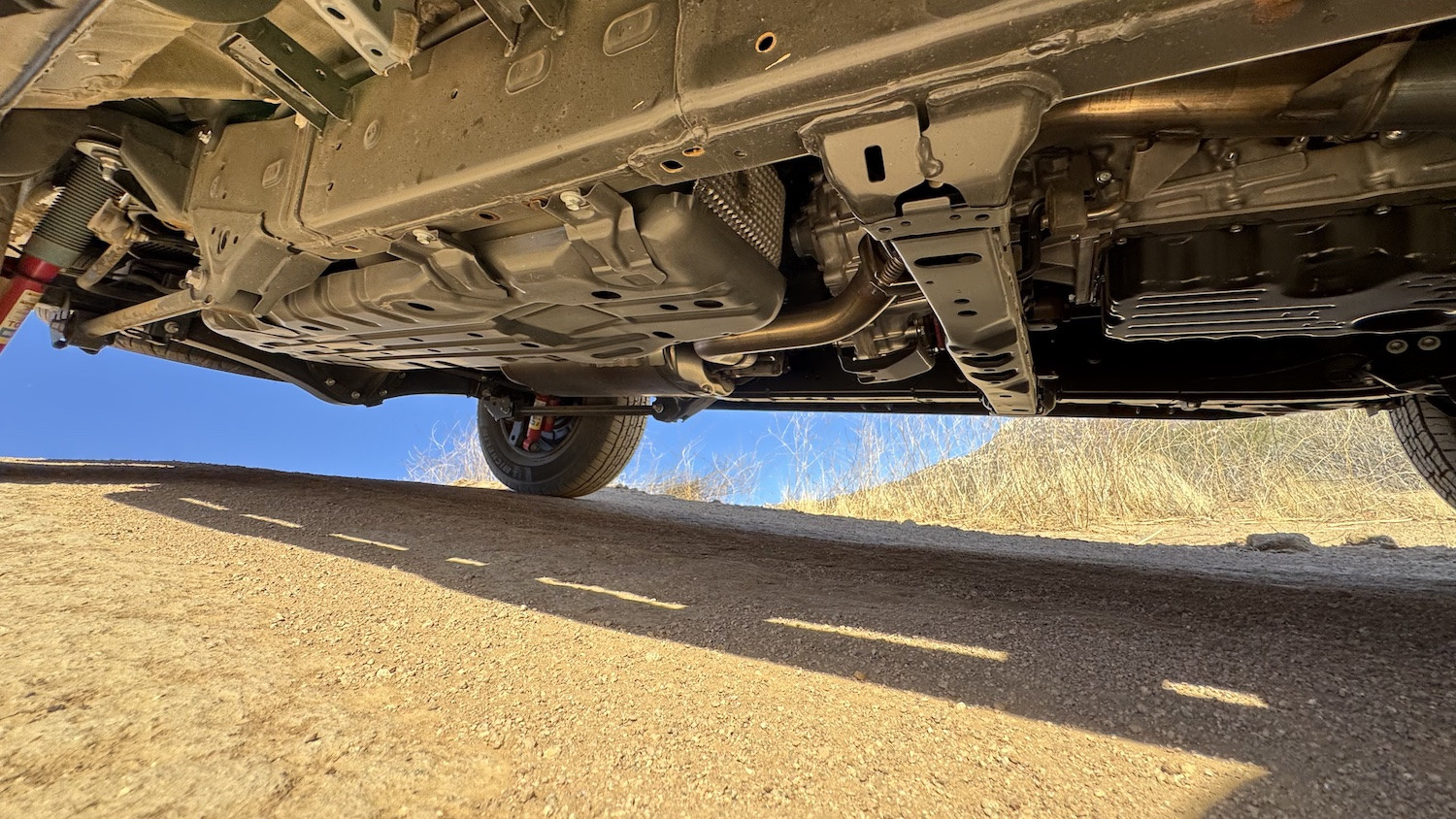 4runner 5948
4runner 5948
The base model, non-hybrid TRD Off-Road, priced at $50,640, emerges as a particularly compelling option. It provides essential off-road features without unnecessary frills, offering a functional interior, cloth seats, a rear locker, 33-inch tires, and basic underbody protection.
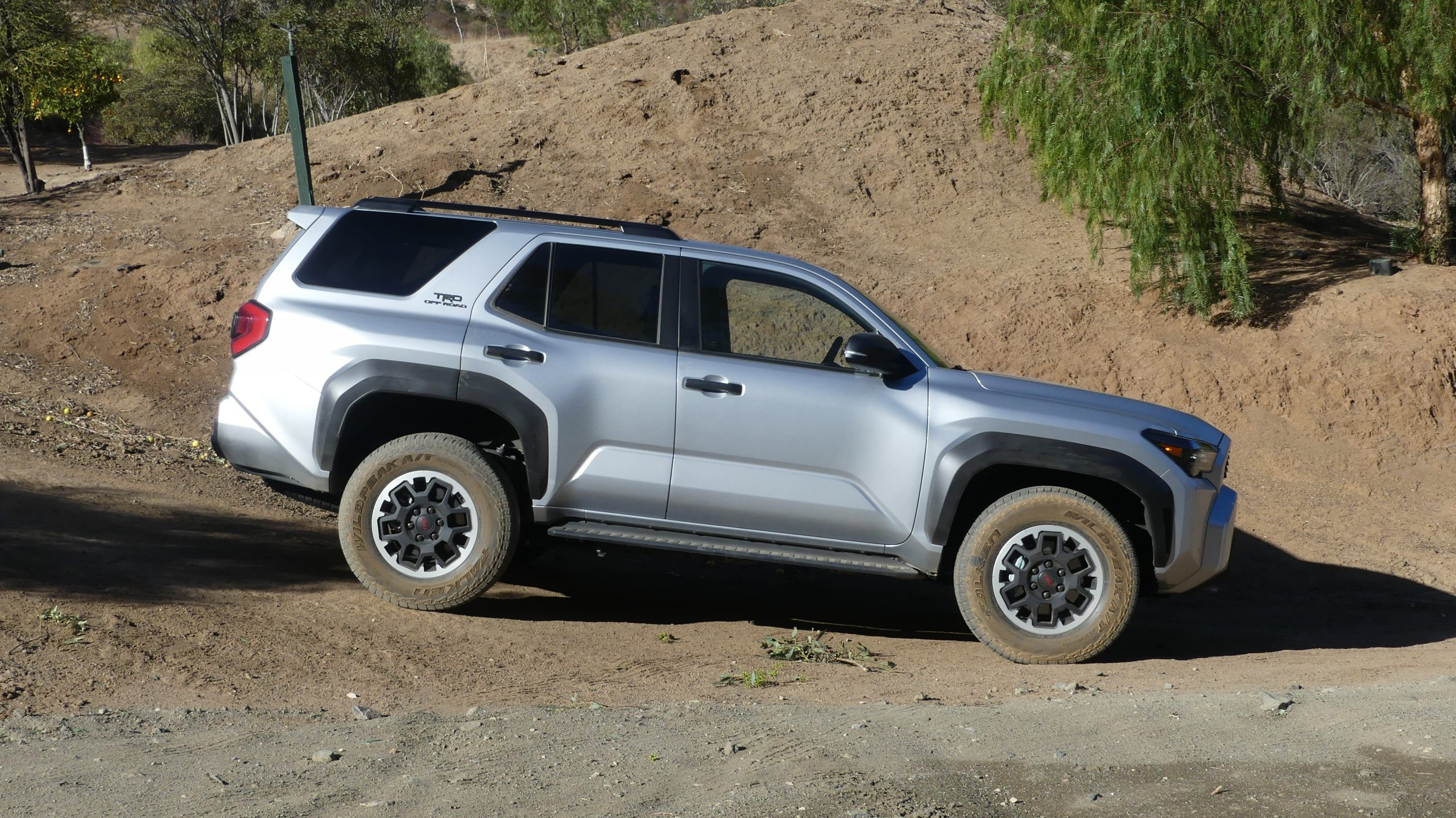 P1030234
P1030234
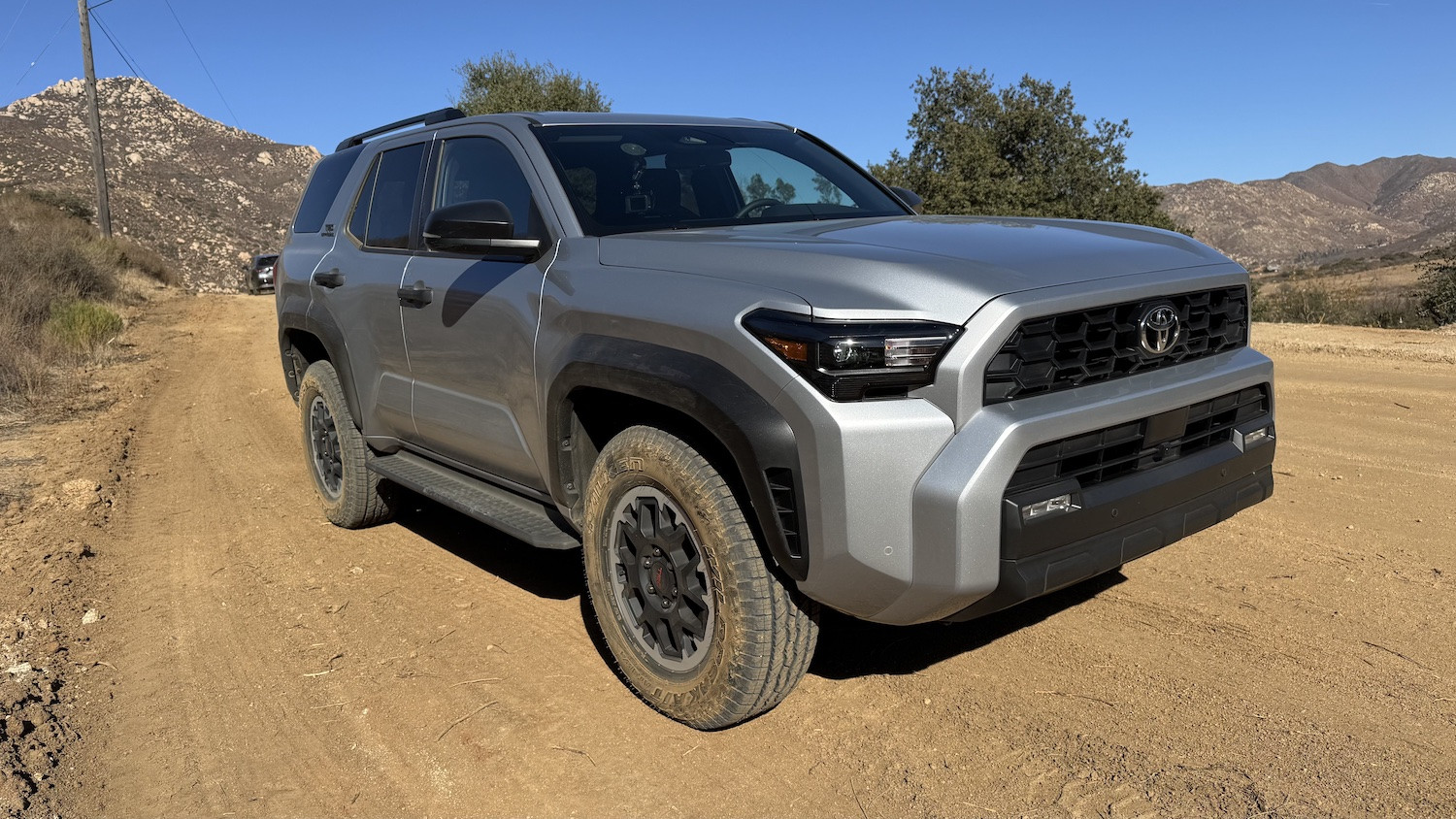 4runner 5988
4runner 5988
The optionless TRD Off-Road is described as “nothing special inside or out, really. It’s functional.” It includes cloth seats, a rear locker, 33-inch tires, basic underbody protection, the gasoline 2.4-liter turbocharged engine with an eight-speed automatic, and a low-range transfer case—essentially, everything needed for off-road capability without added luxuries.
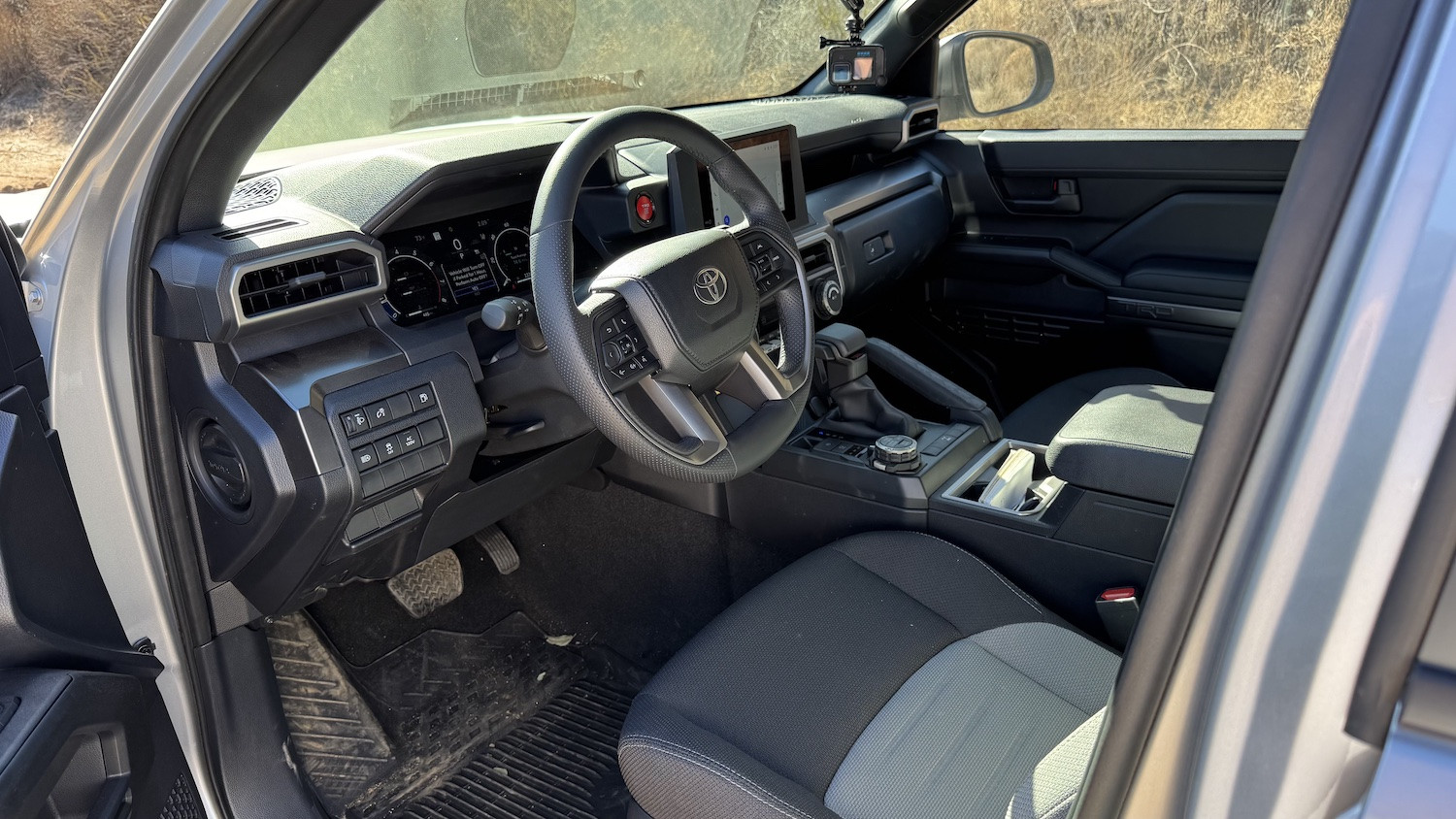 4runner 5989
4runner 5989
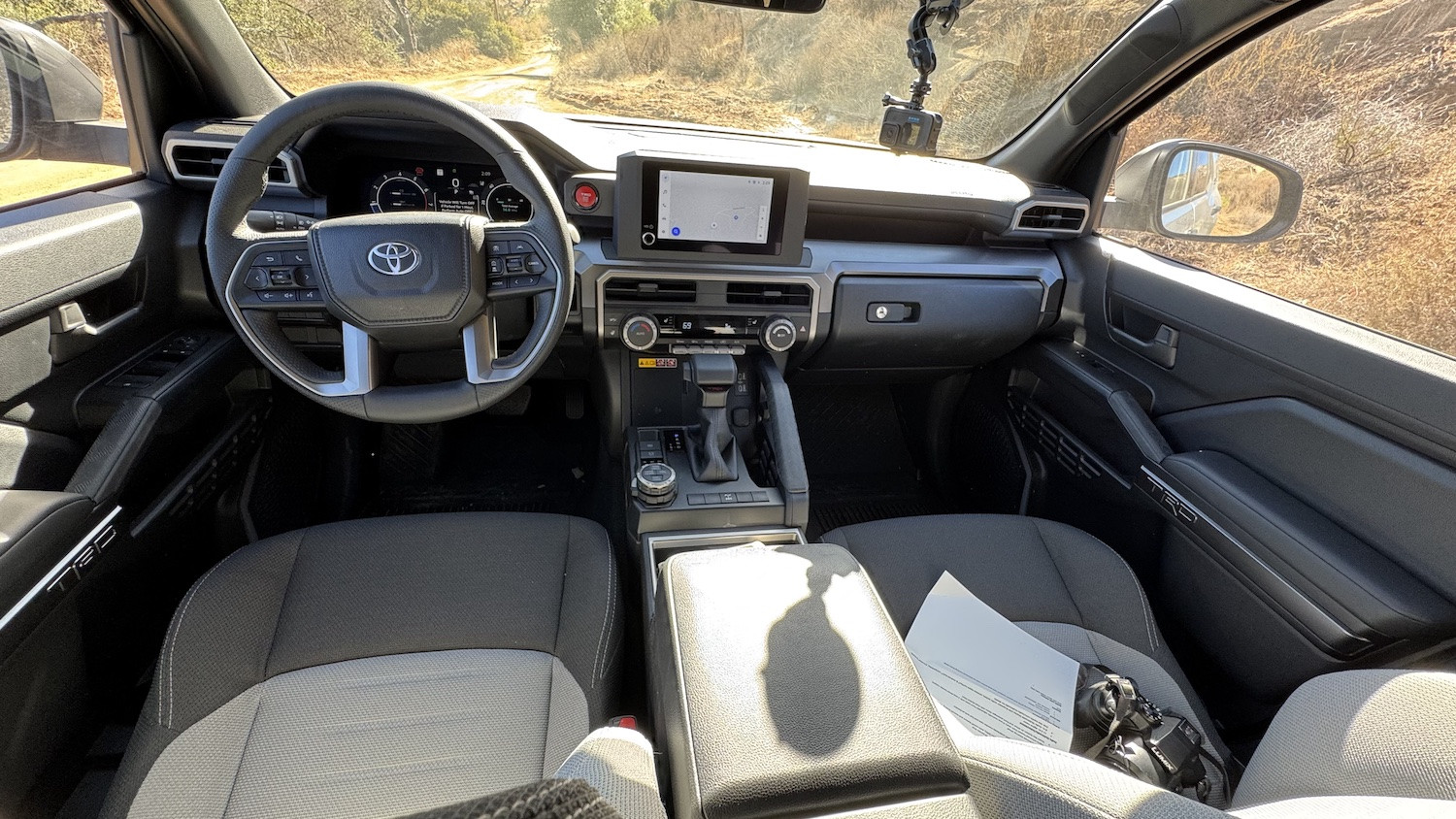 4runner 5990
4runner 5990
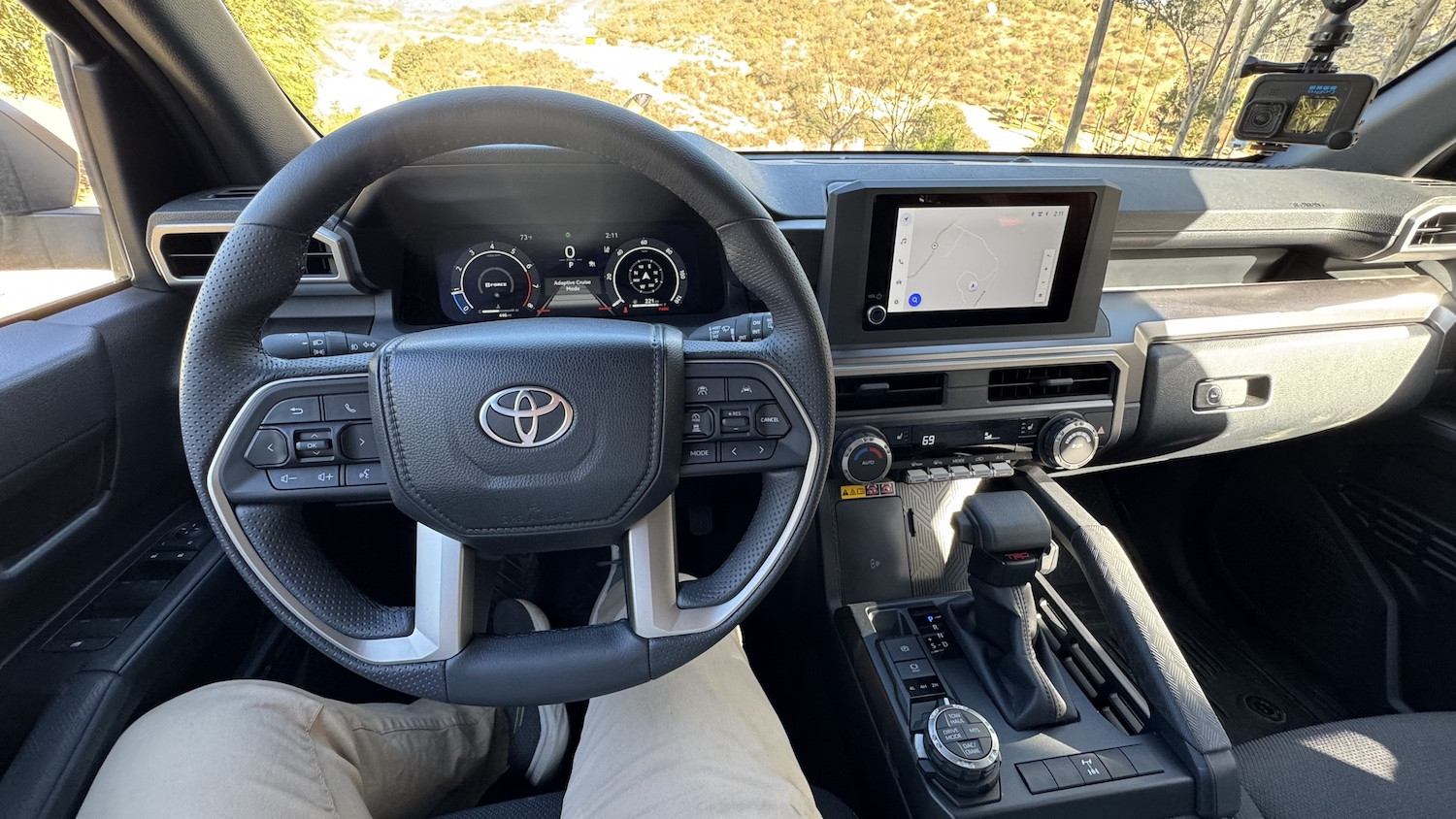 4runner 5996
4runner 5996
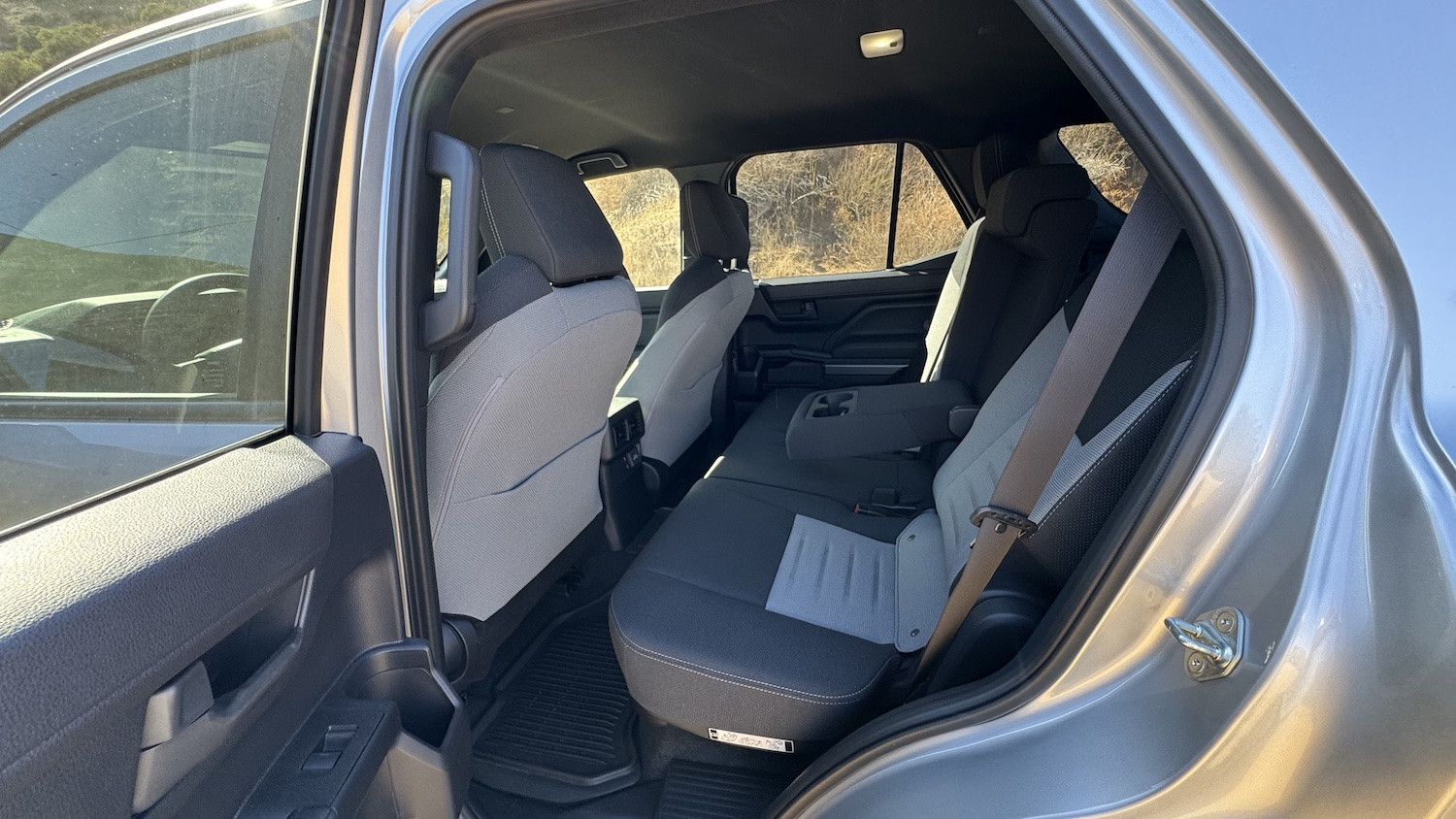 4runner 5991
4runner 5991
While a front-facing camera would be a desirable addition, especially for off-roading, and running boards might be removed for improved clearance, the base TRD Off-Road represents the best bang-for-your-buck 4Runner. At 4,850 pounds, it is also over 600 pounds lighter than the Trailhunter or TRD Pro, enhancing its agility and fuel efficiency. This weight saving, combined with ample cargo space in the non-hybrid configuration and the long-term cost considerations of fuel economy versus hybrid premium, makes the non-hybrid TRD Off-Road a highly attractive choice.
Toyota 4Runner TRD Off-Road Versus Toyota Land Cruiser: Sibling Rivalry
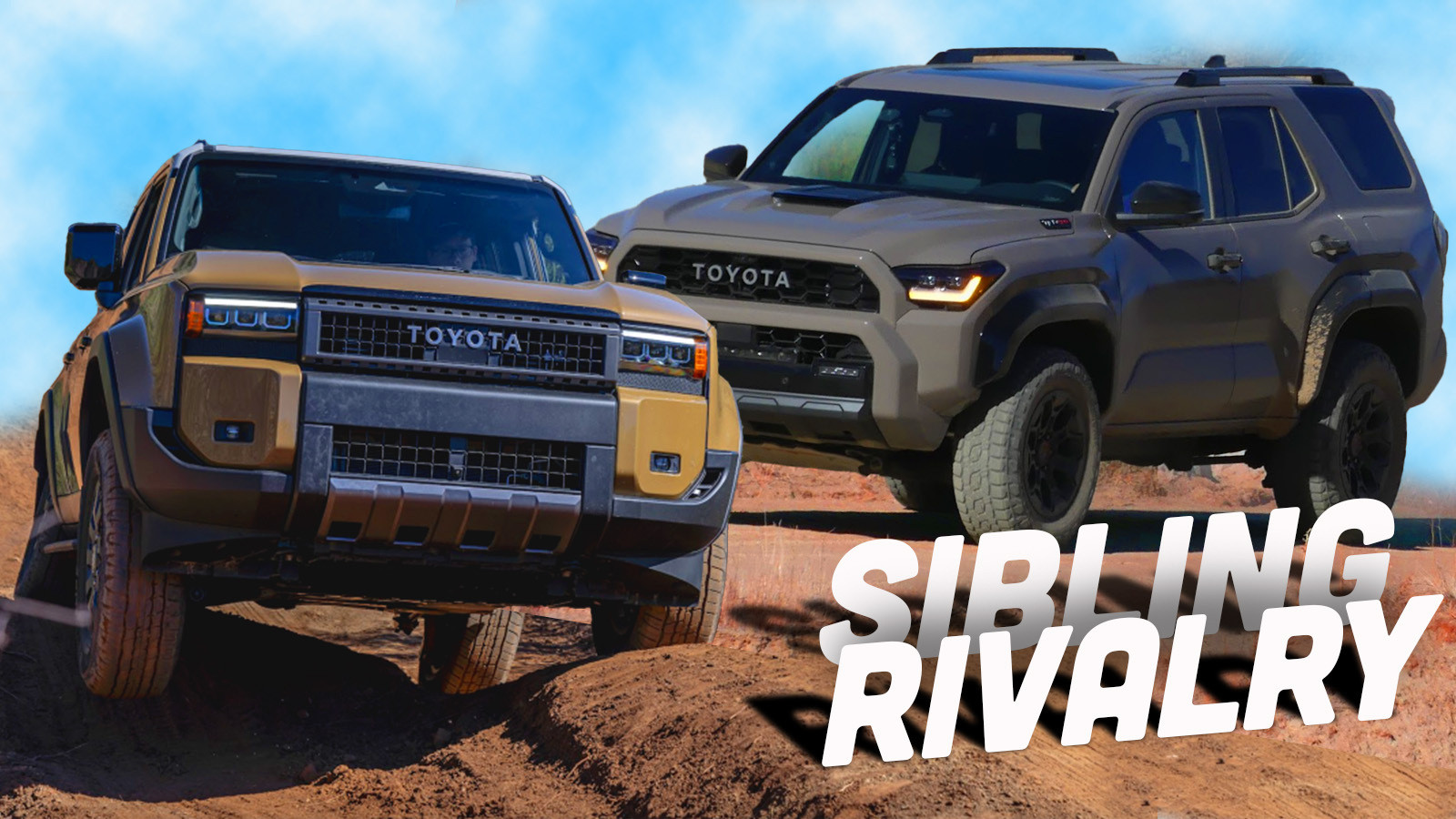 Siblingrivalry Top
Siblingrivalry Top
Comparing the new Toyota 4Runner TRD Off-Road with the Toyota Land Cruiser reveals their distinct market positions and value propositions. The 4Runner TRD Off-Road, at $50,640, is nearly $7,000 cheaper than the base $57,400 Land Cruiser. The base Land Cruiser offers a larger infotainment screen, a hybrid powertrain, and full-time four-wheel drive with a locking center differential, features not standard on the 4Runner TRD Off-Road. The 4Runner, in contrast, features a smaller screen, part-time four-wheel drive, and a less powerful gasoline powertrain in its base TRD Off-Road configuration.
However, the interior quality of the base “1958” Land Cruiser is not significantly superior to the 4Runner’s, with hard plastics remaining prevalent in both. The hybrid powertrain in the Land Cruiser, while offering performance and efficiency benefits, also comes with a trade-off in interior cargo volume compared to non-hybrid 4Runner models.
Interior styling comparisons between the base Land Cruiser and 4Runner TRD Off-Road reveal subtle differences.
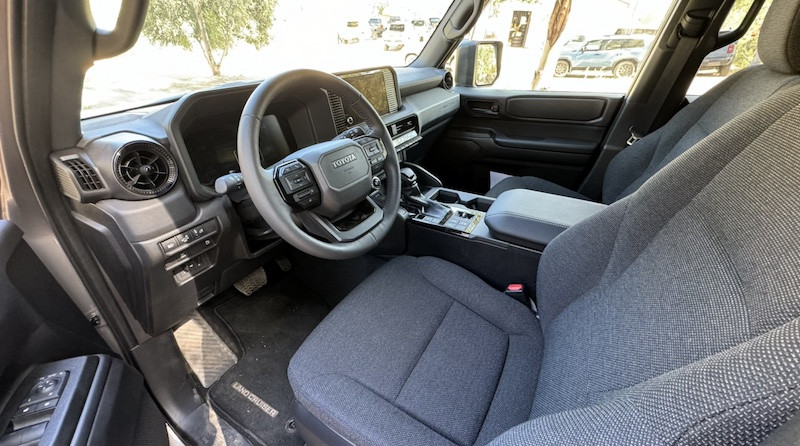 Land Cruiser 15
Land Cruiser 15
 4runner 5989
4runner 5989
 Land Cruiser 16
Land Cruiser 16
 4runner 5990
4runner 5990
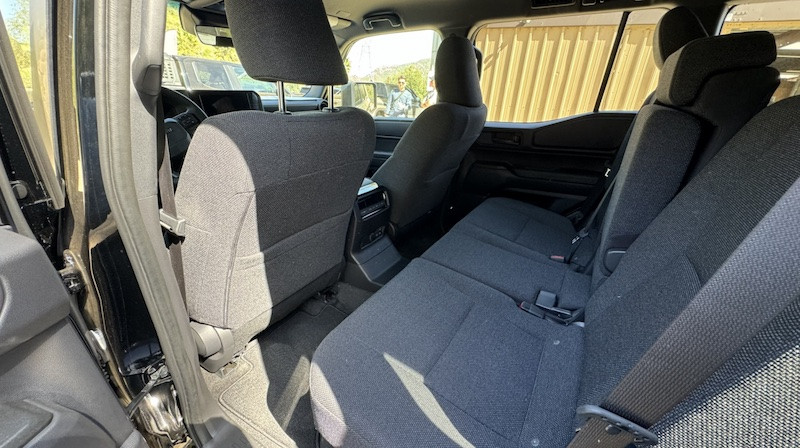 Land Cruiser 17
Land Cruiser 17
 4runner 5991
4runner 5991
The Land Cruiser arguably has a slightly more elegant interior design, while the 4Runner TRD Off-Road prioritizes functionality. Exterior styling also presents subjective preferences.
 4runner 5943
4runner 5943
 P1030234
P1030234
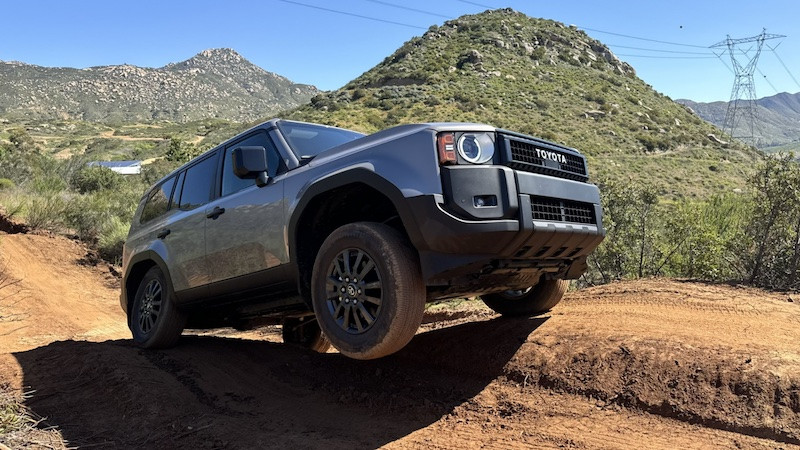 Land Cruiser 33
Land Cruiser 33
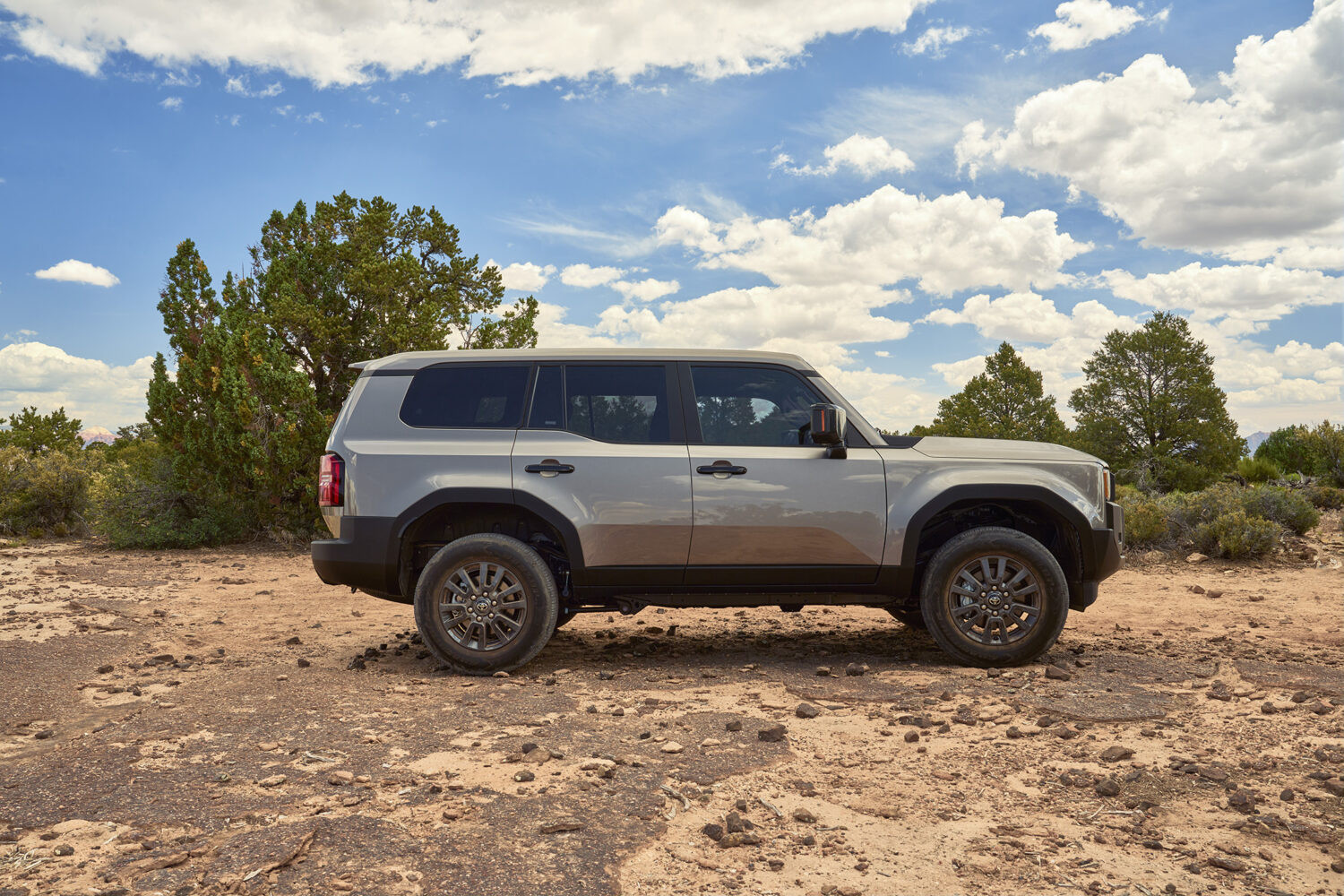 2024 Toyota Land Cruiser 1958 006 1500×1000
2024 Toyota Land Cruiser 1958 006 1500×1000
The Land Cruiser’s exterior styling is often perceived as more refined, with a squared-off roofline and a less “squished” front end compared to the new Toyota 4Runner. Off-road capability between the two is closely matched. Both come standard with a rear locker, basic underbody skid plates, and Toyo all-terrain tires. The Land Cruiser features a locking center differential, which is less critical in the 4Runner due to its part-time four-wheel drive system.
However, tire sizes differ slightly, with the Land Cruiser using 245/70R18 tires and the 4Runner equipped with slightly larger 265/70R18 all-terrains, contributing to the 4Runner’s 9.1 inches of ground clearance versus the Land Cruiser’s 8.7 inches. Off-road geometry, including approach, departure, and breakover angles, also varies. The Land Cruiser offers a 30-degree approach angle, a 22-degree departure angle, and a 25-degree breakover angle. The 4Runner TRD Off-Road is listed with a 19-degree approach angle, a 24-degree departure angle, and a 24-degree breakover angle.
The significantly higher approach angle of the Land Cruiser is typically a major advantage in off-road scenarios, but the lower departure angle somewhat limits this benefit. There is also a question regarding the accuracy of the 4Runner TRD Off-Road’s listed 19-degree approach angle, especially considering the base SR5 model with a chin spoiler is rated at 18 degrees. Removing the chin spoiler and using larger tires on the TRD Off-Road should logically result in a more substantial improvement than a single degree.
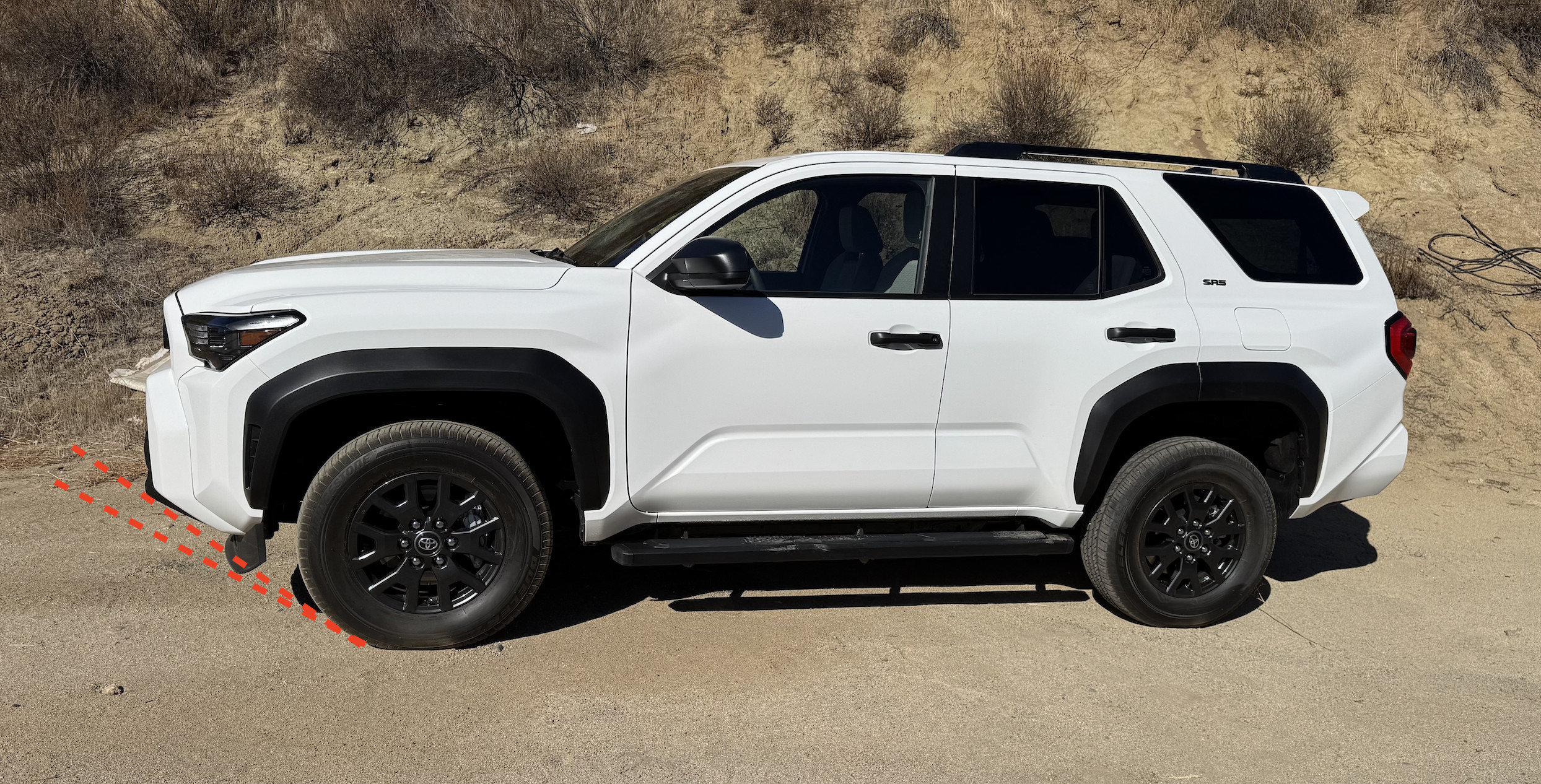 Screen Shot 2025 01 27 At 7.35.49 Pm
Screen Shot 2025 01 27 At 7.35.49 Pm
 4runner 5942
4runner 5942
Cargo volume comparison reveals that hybrid versions of both vehicles are similar, with the 4Runner TRD Off-Road offering 82.6 cubic feet behind the front seats and 42.6 cubic feet behind the second row, closely matching the Land Cruiser’s 82.1 and 46.2 cubic feet, respectively. However, the non-hybrid new Toyota 4Runner significantly surpasses both with 90.2 cubic feet behind the front seats and 48.4 cubic feet behind the second row, highlighting a key advantage for those prioritizing cargo space. On-road driving dynamics are comparable, with both SUVs prioritizing comfort and capability over sporty handling.
Verdict: Choosing Between the New Toyota 4Runner and Land Cruiser
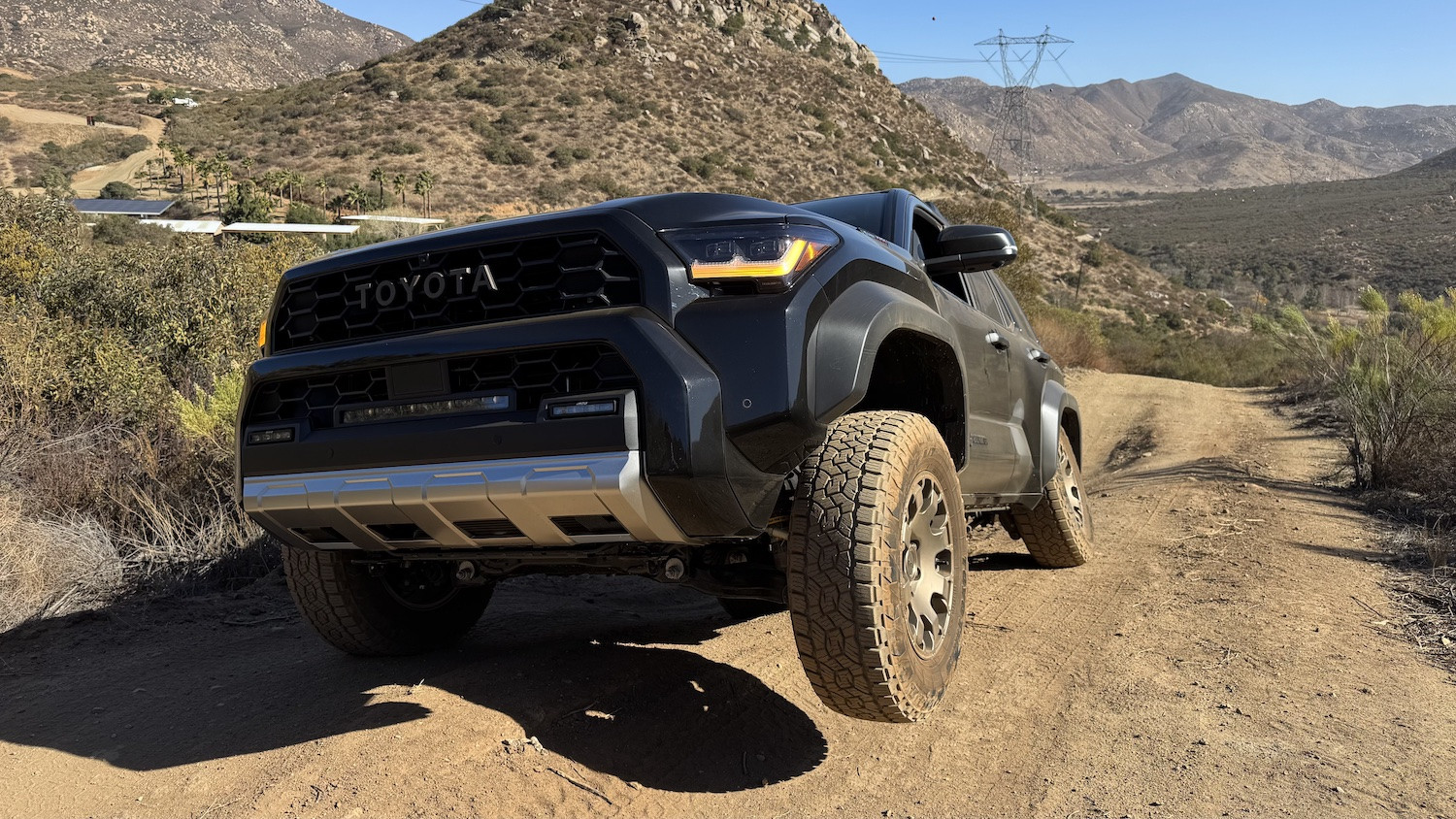 4runner 5906
4runner 5906
The close architectural and capability similarities between the new Toyota 4Runner and Land Cruiser might initially seem like redundancy. However, this strategic positioning offers consumers a valuable choice within the body-on-frame, mid-size SUV segment. The previous generation Land Cruiser had evolved into a luxury vehicle, making the new Land Cruiser a more accessible, albeit less distinctive, offering.
The 2.4-liter turbocharged inline-four engine is described as adequate but not exceptional, similar to previous 4Runner and Tacoma engines. The eight-speed automatic transmission effectively manages power delivery. The independent front suspension and solid rear axle provide a balanced on-road and off-road performance. The interiors are modernized yet retain a functional and modest character. Overall, the new Tacoma and 4Runner represent worthy successors, with the Land Cruiser fitting into the lineup as a more premium, hybrid-standard alternative, positioned between the 4Runner trims.
The Land Cruiser is not as hardcore off-road focused as the 4Runner TRD Pro or Trailhunter but offers superior off-road capability compared to the SR5 or Limited/TRD Sport trims. It roughly matches the 4Runner TRD Off-Road in capability but comes standard with a hybrid powertrain, which reduces cargo volume compared to non-hybrid 4Runner models. The Land Cruiser offers a more refined interior and exterior design and potentially a slightly softer ride.
For buyers prioritizing affordability and potentially third-row seating, the base 4Runner SR5 is a solid choice. For balanced off-road capability without excessive cost, the 4Runner TRD Off-Road is highly recommended. For hardcore off-road enthusiasts with a higher budget, the 4Runner Trailhunter or TRD Pro are compelling options. For those seeking the most luxurious and reasonably capable off-roader from Toyota, the Land Cruiser is the clear choice, with the Lexus GX serving the ultra-luxury segment. The base Land Cruiser also appeals to buyers who prioritize a cool and retro aesthetic.
Ultimately, the non-hybrid 4Runner TRD Off-Road emerges as a particularly rational choice, offering superior cargo volume, avoiding the hybrid powertrain premium, retaining a smaller screen, and providing a significant cost saving compared to the Land Cruiser. However, the allure of a higher-trim Land Cruiser, with its enhanced interior quality and more refined ambiance, remains a strong consideration for those willing to invest more for a more premium experience within Toyota’s robust SUV family.